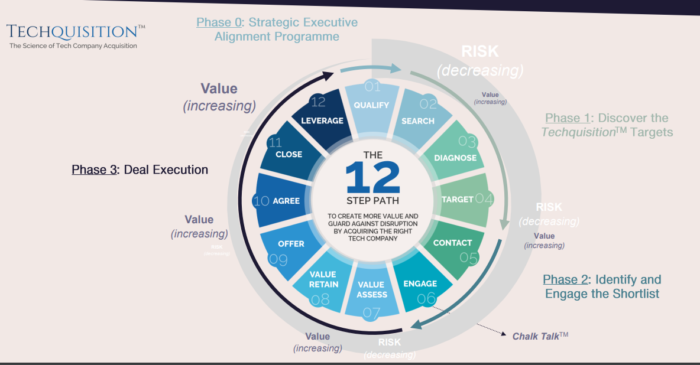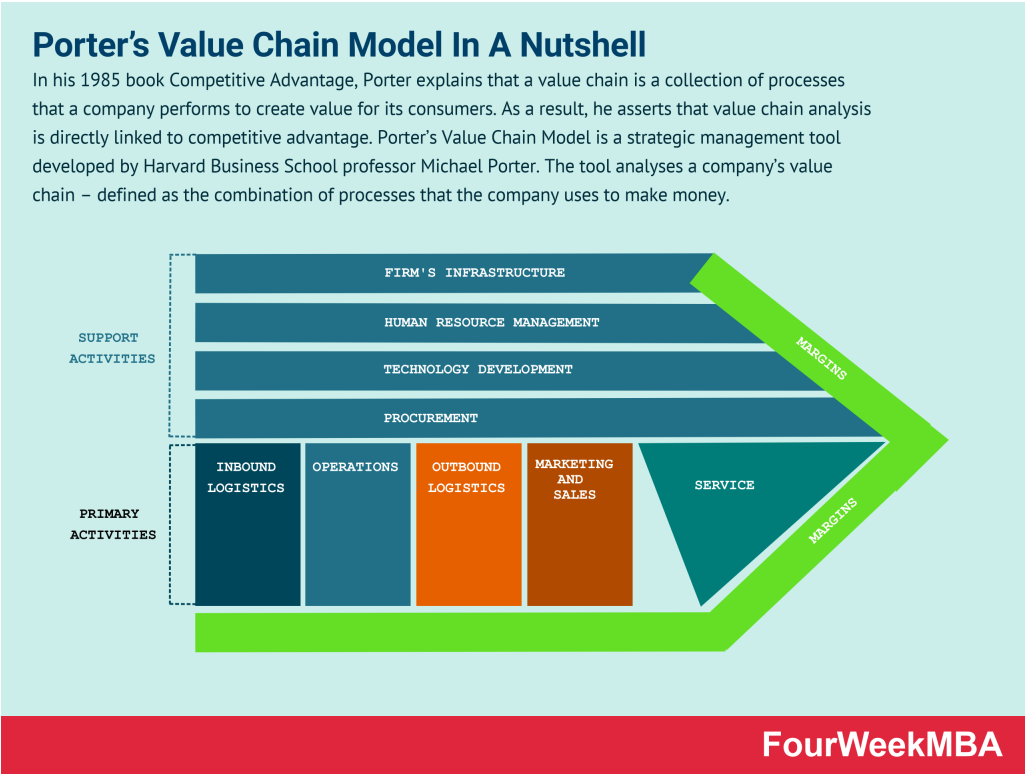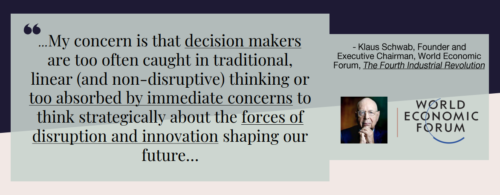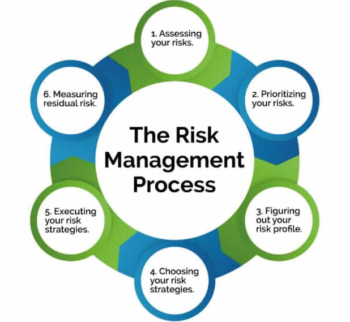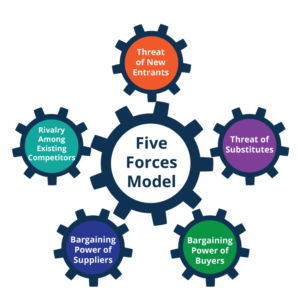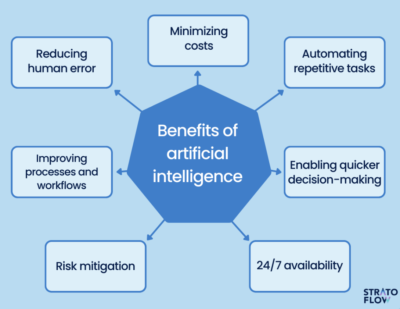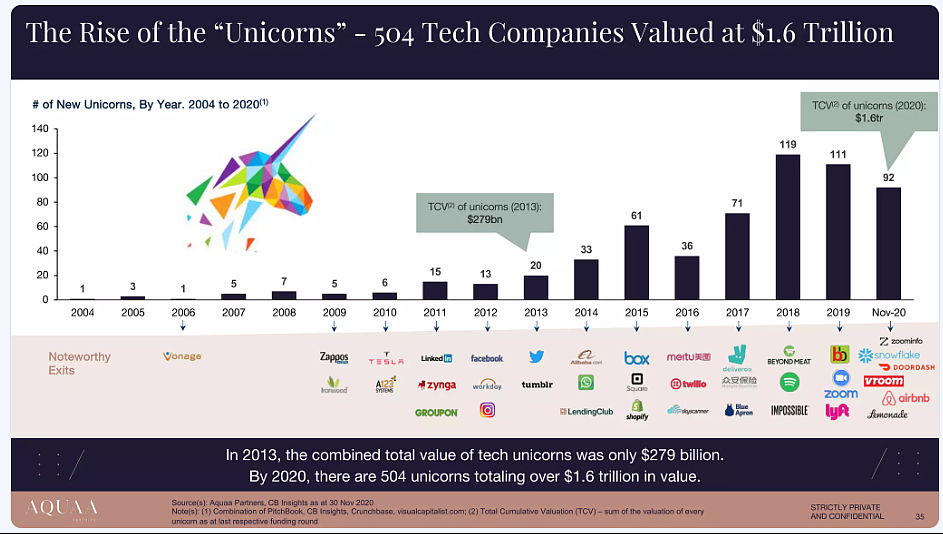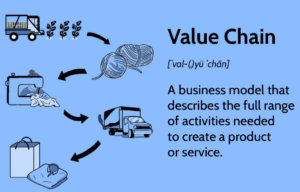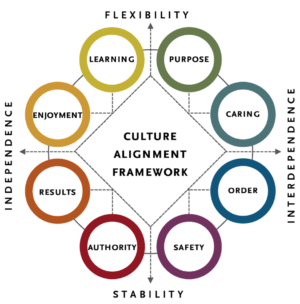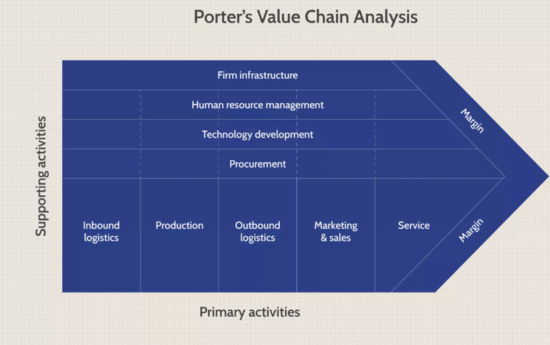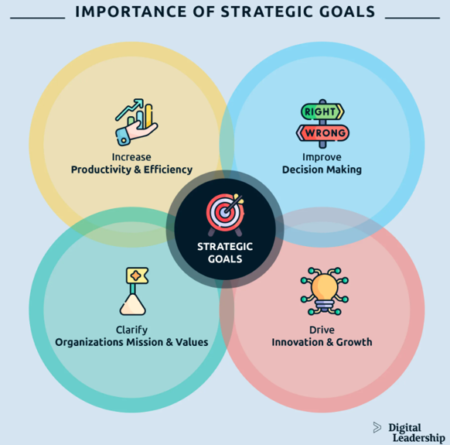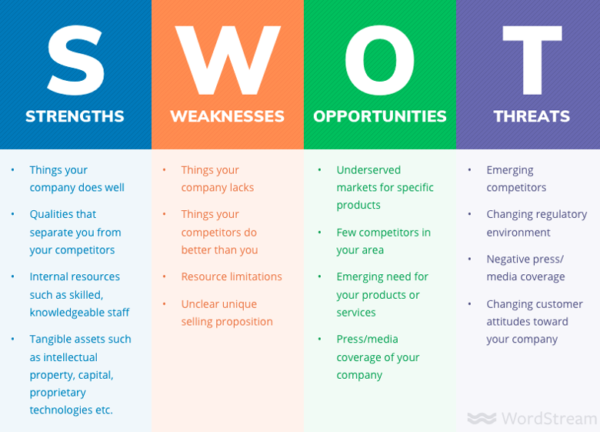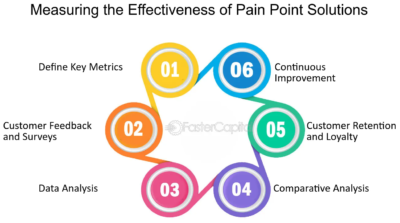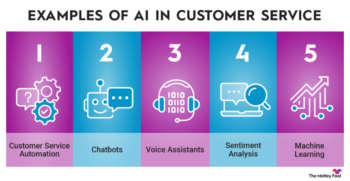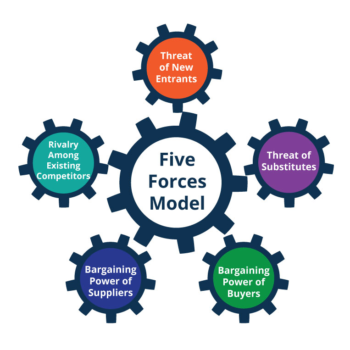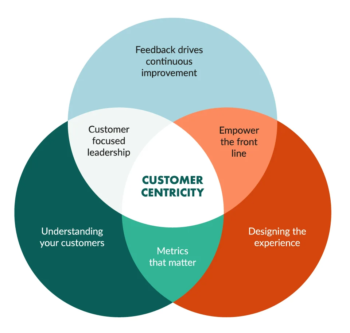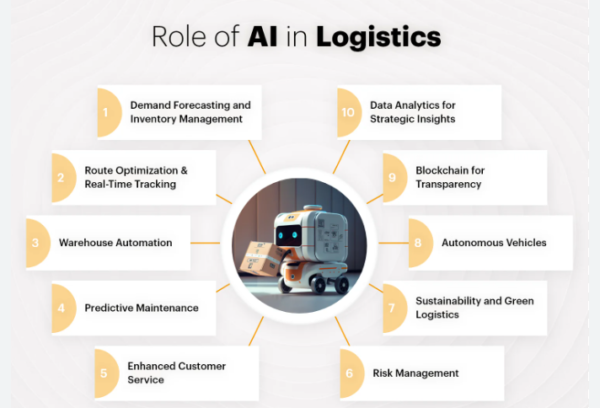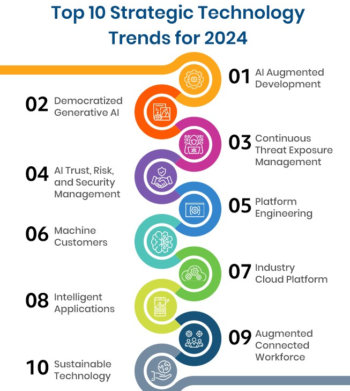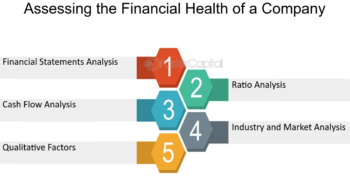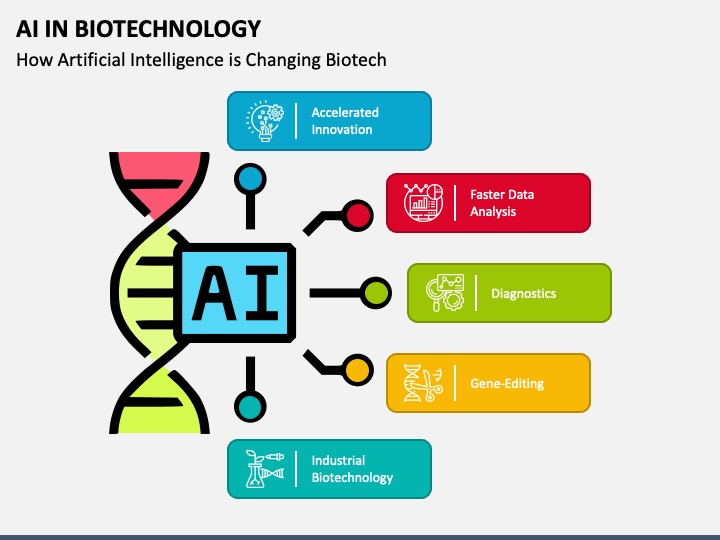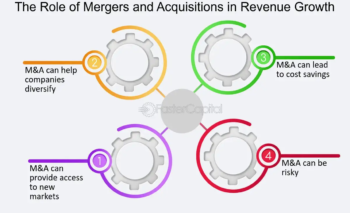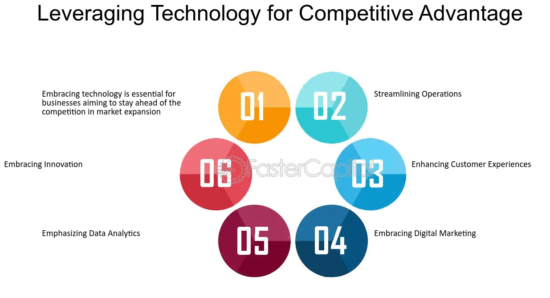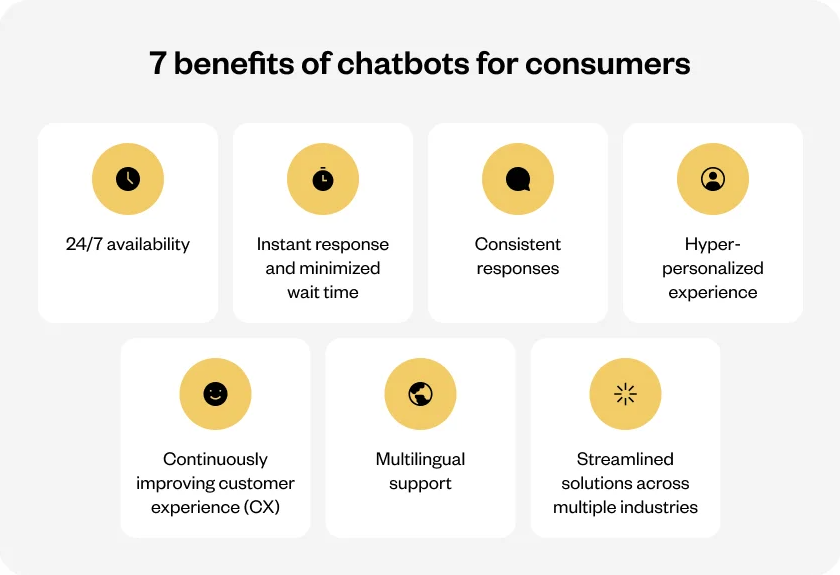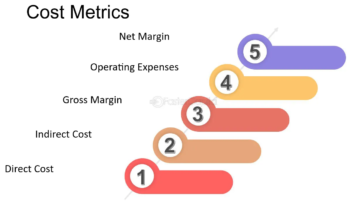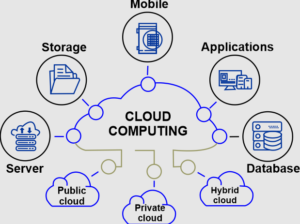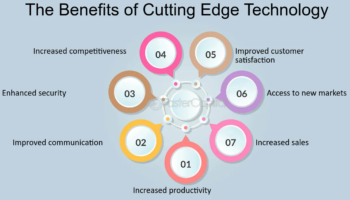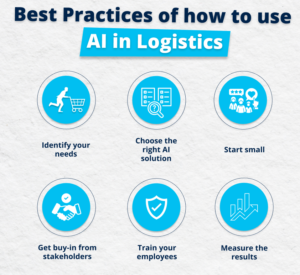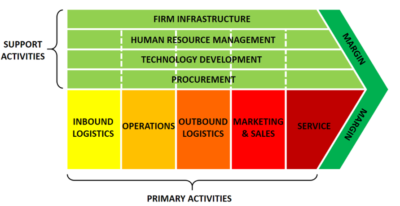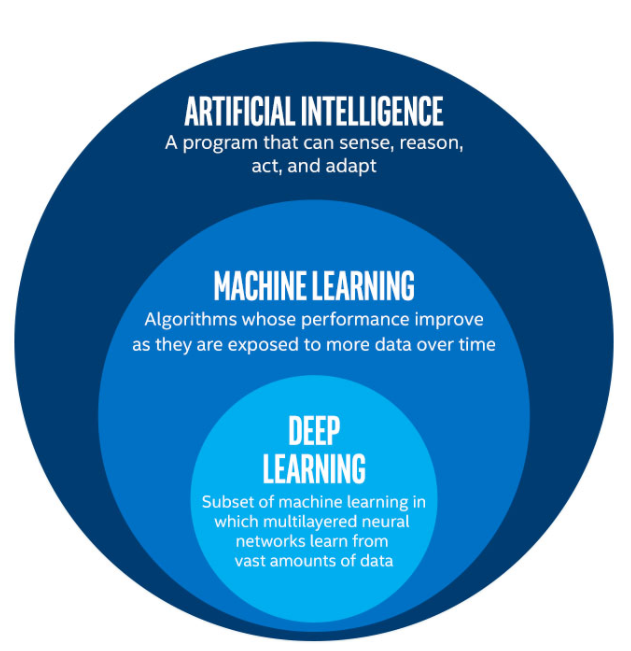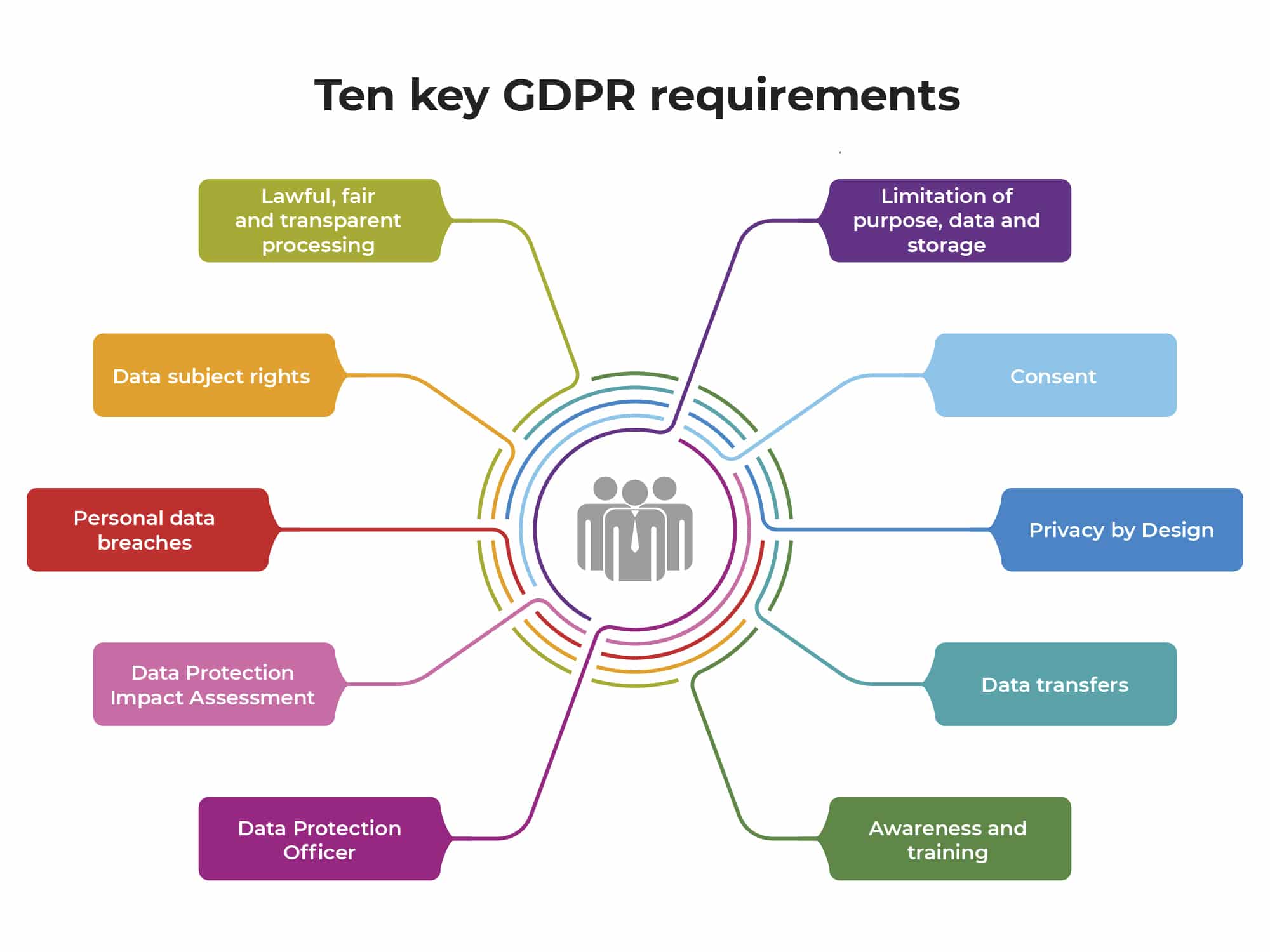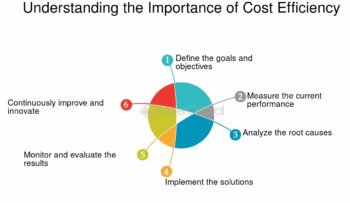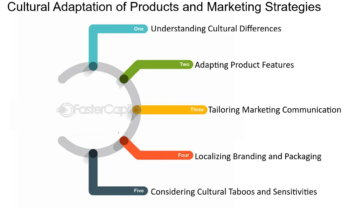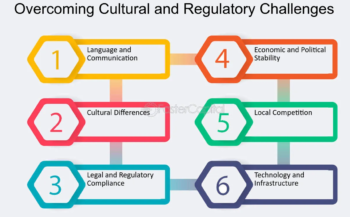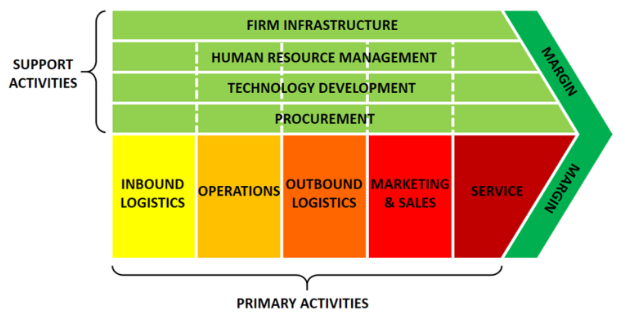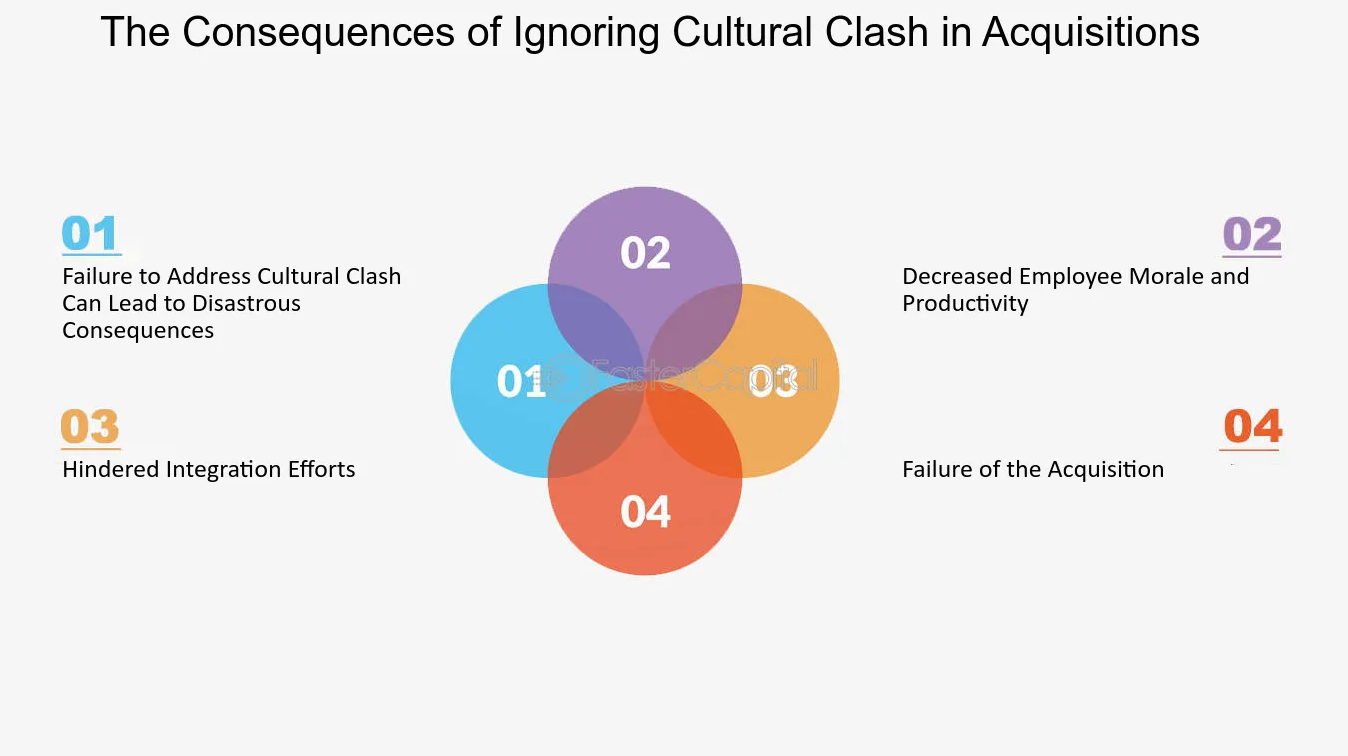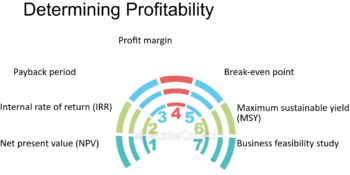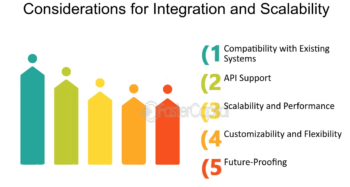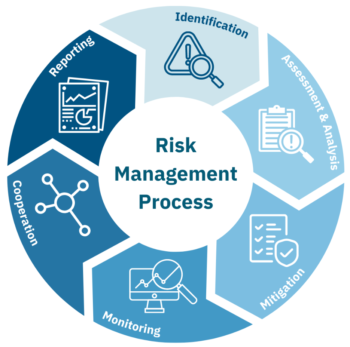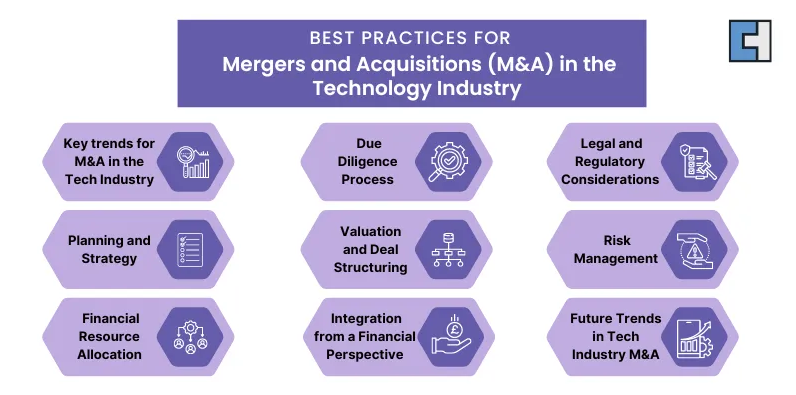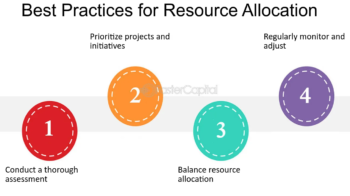Technology Company Acquisition – Workshop 1 (Value Chain Inspect)

The Appleton Greene Corporate Training Program (CTP) for Technology Company Acquisition is provided by Mr. Cuatrecasas Certified Learning Provider (CLP). Program Specifications: Monthly cost USD$2,500.00; Monthly Workshops 6 hours; Montthly Support 4 hours; Program Duration 12 months; Program orders subject to ongoing availability.
If you would like to view the Client Information Hub (CIH) for this program, please Click Here
Learning Provider Profile
Mr. Cuatrecasas is an investment banker, entrepreneur and author. During his career, he has helped hundreds of companies on mergers, acquisitions, capital raisings, company sales, divestitures, restructurings, leveraged buy-outs and a wide variety of strategic issues. He has over 30 years of experience executing strategic deals and delivering proven, actionable strategies for executives to learn how to find the right tech company to acquire and how to do the acquisition in the right way.
He understands from experience that most companies don’t have programs or systematic methodologies ways to “techquify” their operations and advance their strategic positioning. When they do try to acquire or invest in technology companies, competing priorities and inertia get in the way. As a result, most established companies and their ambitious executives go too slow and never unlock their full potential.
His training offers executives a step-by-step approach to all the tricks in the tech company acquisition game, from how to find the right tech start-tech, how to develop the right approach, how to get the lowest possible price and the best terms and do a win-win deal that delivers a 10-100x ROI.
Mr. Cuatrecasas has served as the Founder and CEO of Aquaa Partners, an investment banking firm based in London. Previously he was the Founder and a Partner of Alegro Capital from 2003-2010. Previous to Alegro Capital, Mr. Cuatrecasas was the co-founder and Managing Director of ARC Associates from 1993-2003. (ARC Associates was a leading independent London-based TMT mergers and acquisitions advisory practice with a full range of blue chip and entrepreneurial clients including Sonera, Cable & Wireless, Apax, Marconi, Equant, ICL, KKR, Permira and BT, amongst others). Prior to ARC Associates, Mr. Cuatrecasas was a Senior Associate with Arkwright Capital (ex-Bain & Co. partners), an M&A and Corporate Finance advisory firm in London (1991-1993) and with GE Capital in their LBO and Restructuring Group in New York (1989-1991).
Over the past thirty years, Mr. Cuatrecasas has completed over fifty merger and acquisition transactions around the world worth more than $25 billion dollars and over 70 corporate finance advisory and strategic consultancy assignments.
Mr. Cuatrecasas holds an MBA from Columbia University where he was awarded the Roswell C. McCrea Scholarship and a BA from Wake Forest University. Mr. Cuatrecasas holds dual US and UK citizenship and speaks fluent Spanish. Mr. Cuatrecasas has been quoted in The Washington Post, The Los Angeles Times, US News & World Report, and Forbes. He lives (most of the time) in London with his wife and three children.
MOST Analysis
Mission Statement
In this first and critically important step of the TechquisitionTM method, the company’s senior executive management commits to creating value through finding and investing in or acquiring (or otherwise instigating a joint venture or exclusive partnership with) the right technology (or digital) company. If the CEO and senior management do not believe it is possible to transform the market value of their company via tech company acquisition, then the TechquisitionTM effort will likely fail. The commitment must be in place. A corporate initiative that is begun from a nice-to-have or let’s-see-what-happens position rather than a need-to-have or must-do mindset is doomed to fail. Too many other competing priorities will get in the way. If the board is not supporting, and, in many cases, leading the charge, then it should at least be aware of the inorganic innovation effort and ideally confirm the value-chain inflection points and specifications proposed by management concerning the type of characteristics the ideal target company should have. Assuming a commitment is confirmed, then the company’s senior management should take the time to review and check the board’s decision and specifications to strategically invest in or acquire a technology company. This should include a thorough inspection of the company’s value chain—assess the opportunities and check strategic imperatives against the industry and market trends, the competitive environment, and the company’s positioning, and assess the needed capabilities, the customer demands, and the evolving technological landscape.
Objectives
01. Strategy Desk Audit: departmental SWOT analysis; strategy research & development. Time Allocated: 1 Month
02. Competitive Analysis: departmental SWOT analysis; strategy research & development. Time Allocated: 1 Month
03. Identify Stakeholder Goals: departmental SWOT analysis; strategy research & development. Time Allocated: 1 Month
04. Identify Value Chain Inflection Points: departmental SWOT analysis; strategy research & development. Time Allocated: 1 Month
05. Example Target Companies: departmental SWOT analysis; strategy research & development. Time Allocated: 1 Month
06. Value Creation Potential Analysis: departmental SWOT analysis; strategy research & development. Time Allocated: 1 Month
07. Availability of Opportunities: departmental SWOT analysis; strategy research & development. 1 Month
08. Proximity to the Core: departmental SWOT analysis; strategy research & development. Time Allocated: 1 Month
09. Geographic Relevance: departmental SWOT analysis; strategy research & development. Time Allocated: 1 Month
10. Culture Fit: departmental SWOT analysis; strategy research & development. Time Allocated: 1 Month
11. Assessment of Trade-offs: departmental SWOT analysis; strategy research & development. Time Allocated: 1 Month
12. Create a Project Schedule: departmental SWOT analysis; strategy research & development. Time Allocated: 1 Month
Strategies
01. Strategy Desk Audit: Each individual department head to undertake departmental SWOT analysis; strategy research & development.
02. Competitive Analysis: Each individual department head to undertake departmental SWOT analysis; strategy research & development.
03. Identify Stakeholder Goals: Each individual department head to undertake departmental SWOT analysis; strategy research & development.
04. Identify Value Chain Inflection Points: Each individual department head to undertake departmental SWOT analysis; strategy research & development.
05. Example Target Companies: Each individual department head to undertake departmental SWOT analysis; strategy research & development.
06. Value Creation Potential Analysis: Each individual department head to undertake departmental SWOT analysis; strategy research & development.
07. Availability of Opportunities: Each individual department head to undertake departmental SWOT analysis; strategy research & development.
08. Proximity to the Core: Each individual department head to undertake departmental SWOT analysis; strategy research & development.
09. Geographic Relevance: Each individual department head to undertake departmental SWOT analysis; strategy research & development.
10. Culture Fit: Each individual department head to undertake departmental SWOT analysis; strategy research & development.
11. Assessment of Trade-offs: Each individual department head to undertake departmental SWOT analysis; strategy research & development.
12. Create a Project Schedule: Each individual department head to undertake departmental SWOT analysis; strategy research & development.
Tasks
01. Create a task on your calendar, to be completed within the next month, to analyse Strategy Desk Audit.
02. Create a task on your calendar, to be completed within the next month, to analyse Competitive Analysis.
03. Create a task on your calendar, to be completed within the next month, to analyse Identify Stakeholder Goals.
04. Create a task on your calendar, to be completed within the next month, to analyse Identify Value Chain Inflection Points.
05. Create a task on your calendar, to be completed within the next month, to analyze Example Target Companies.
06. Create a task on your calendar, to be completed within the next month, to analyse Value Creation Potential Analysis.
07. Create a task on your calendar, to be completed within the next month, to analyse Availability of Opportunities.
08. Create a task on your calendar, to be completed within the next month, to analyse Proximity to the Core.
09. Create a task on your calendar, to be completed within the next month, to analyze Geographic Relevance.
10. Create a task on your calendar, to be completed within the next month, to analyse Culture Fit.
11. Create a task on your calendar, to be completed within the next month, to analyse Assessment of Trade-offs.
12. Create a task on your calendar, to be completed within the next month, to analyse Create a Project Schedule.
Introduction
Technology companies are not just disruptors—they are the future. For legacy companies to remain relevant and competitive, the most effective strategy is to transform themselves into technology-driven organizations. This transformation is often achieved through strategic acquisitions, partnerships, or joint ventures with innovative tech companies that can provide the competitive edge needed to thrive in the digital age. The course is designed to equip senior executives with the knowledge and tools necessary to navigate the complexities of acquiring or investing in the right technology company.
The first module, Value Chain Inspect, is a critical component of the Techquisition™ methodology. It lays the foundation for the entire acquisition process, focusing on ensuring that the company’s senior executive management is aligned in its commitment to creating value through acquisition or strategic partnership. Without this foundational alignment, no subsequent efforts will succeed. The executive team must believe that transforming the market value of their company through technology company acquisition is not only possible but essential for survival and future growth.
The Importance of Commitment
In Part 1, Month 1: Value Chain Inspect, the course emphasizes the importance of total commitment from the company’s senior leadership. This commitment is more than a casual interest in potential opportunities; it must come from a place of necessity, not just curiosity. A common mistake companies make is approaching acquisitions with a “nice-to-have” mindset rather than a “must-do” attitude. When acquisition efforts are seen as optional or exploratory, they often lose momentum as other priorities take over, leading to a failure to capitalize on potential opportunities.
A successful tech company acquisition requires an executive team that not only understands the strategic importance of the acquisition but also drives the process with a sense of urgency and purpose. As outlined in the Techquisition™ methodology, if the board of directors does not fully support or lead the initiative, it at least needs to be aware of the acquisition’s strategic implications and validate the management’s proposed value chain inflection points. The board plays a crucial role in ensuring that the company’s leadership is on the same page regarding the types of characteristics the target technology company should possess.

Value Chain Analysis as a Strategic Imperative
The concept of Value Chain Inspect centers around a thorough analysis of the company’s value chain, which is essential for identifying strategic opportunities and aligning them with market trends and competitive pressures. This process involves inspecting each stage of the company’s value chain to determine where value can be added or enhanced through technological integration.
The value chain, a concept popularized by Michael Porter, breaks down a company’s activities into strategically relevant pieces to understand where and how value is created and delivered to customers. In the context of technology company acquisitions, the goal is to identify value chain inflection points—specific areas where integrating new technologies or digital capabilities could significantly boost efficiency, enhance customer satisfaction, or open up new revenue streams.
In this phase, senior management must assess various strategic imperatives, such as:
• Industry and Market Trends: Analyzing how technological advancements are disrupting their industry and how they can harness these trends for growth.
• Competitive Environment: Understanding how competitors are leveraging technology and where the company stands in relation to them.
• Company Positioning: Identifying where the company currently fits within the industry landscape and how technology acquisition could redefine its position.
• Customer Demands: Evaluating evolving customer expectations, particularly in terms of digital solutions, and how acquiring a tech company can help meet these demands.
• Technological Landscape: Assessing the current and emerging technologies and their relevance to the company’s core operations and growth strategy.
Each of these factors plays a crucial role in shaping the company’s acquisition strategy and ensuring that any potential acquisition aligns with long-term business goals. The inspection of the value chain will ultimately reveal the gaps that a technology company can fill, the inefficiencies that digital solutions can resolve, and the competitive advantages that a successful acquisition can offer.

The Role of Executive Alignment
At the heart of the Value Chain Inspect process is the alignment of senior executive management. In this first phase of the Techquisition™ process, executives must be united in their understanding of the company’s goals, challenges, and the opportunities presented by technology acquisitions. This alignment is critical because an acquisition effort that lacks unity among leadership will struggle to maintain focus and direction.
The course underscores that management should not view this as a one-time analysis but rather as an ongoing conversation. Leadership teams must frequently revisit and refine their understanding of the value chain and how it intersects with technology trends. The commitment to a tech acquisition is not just a financial or operational decision—it requires a shift in mindset, one that views technology as the key to unlocking the company’s future potential.
This alignment extends beyond just internal management; it must also include the board of directors and other key stakeholders. Everyone involved must recognize that a successful tech acquisition can fundamentally transform the business. The commitment to this transformation cannot be half-hearted. In fact, if the board and management are not aligned in their vision and intent, the Techquisition™ effort is likely to falter.

The Role of Risk and Opportunity in Value Chain Inspect
Another key element in the Value Chain Inspect phase is the management of risk. Every acquisition carries inherent risks—financial, operational, cultural, and strategic. During this phase, executives are trained to conduct a thorough risk analysis of the acquisition process, ensuring that potential risks are identified early and mitigation strategies are put in place. This is particularly important when acquiring technology companies, as these companies often operate in fast-moving, unpredictable markets where technological advancements and customer expectations can shift rapidly.
However, the course also emphasizes the importance of viewing risk in balance with opportunity. While it is essential to mitigate risk, the primary focus should always remain on the opportunity to create exponential value through the acquisition. Technology acquisitions, when done correctly, can transform a company’s value chain in ways that far outweigh the potential risks.
For example, the acquisition of Jet.com by Walmart in 2016 is a case in point. Walmart, a legacy retailer, recognized the opportunity to transform its business through digital innovation. The acquisition of Jet.com, though initially seen as risky due to the company’s financial losses, ultimately resulted in a massive increase in Walmart’s market value, demonstrating the potential for value chain transformation through strategic tech acquisition.
Avoiding Common Pitfalls: The Role of Mindset in Value Chain Inspect
A critical aspect of the Value Chain Inspect phase is the mindset shift required for successful tech company acquisition. The training emphasizes that the executive team must go beyond traditional business thinking and embrace a mindset of innovation and agility. Legacy companies often struggle with the fear of disruption, but this fear can paralyze them from taking the necessary steps toward transformation. The course encourages executives to see disruption not as a threat but as an opportunity to drive exponential value creation.
One of the common pitfalls that companies face in this phase is confirmation bias—believing that the solutions to their problems lie within their existing strategies or previous experiences. The Value Chain Inspect module trains executives to challenge their assumptions, to look beyond what they already know, and to remain open to new ideas and perspectives. This is particularly important when selecting potential acquisition targets, as the right tech company may not always fit the traditional mold of what the company has acquired in the past.
Another pitfall is the tendency to rush through the value chain inspection process, eager to move on to the more tangible aspects of acquisition. However, this phase is crucial for laying the groundwork for a successful acquisition. Skipping or underestimating the importance of this step can lead to misaligned objectives, poor strategic fit, and ultimately, acquisition failure.
Conclusion: Laying the Foundation for Techquisition™ Success
The Value Chain Inspect module is the foundation upon which the rest of the Techquisition™ process is built. It is where senior executives align their vision, commitment, and strategies to ensure that the company’s acquisition efforts are driven by a clear understanding of where value can be created and how technology can transform the business.
This phase is not just about identifying acquisition targets—it’s about inspecting and understanding the company’s entire value chain and determining where technology can make the most impact. It’s about aligning leadership on the strategic importance of the acquisition and ensuring that the commitment is strong enough to overcome the inevitable challenges that will arise.
By the end of this module, individuals will have a deeper understanding of how to analyze their company’s value chain, how to identify the key opportunities for technological integration, and how to align their leadership team behind a unified vision for the future. With this foundation in place, the company will be well-positioned to move into the next phases of the Techquisition™ process—engaging with potential acquisition targets and executing successful deals that drive exponential value transformation.
The Value Chain Inspect module thus serves as the critical first step in a company’s journey to becoming a forward-thinking, technology-driven industry leader in an era of rapid technological advancement.

Case Study: Walmart’s Acquisition of Jet.com
In 2016, Walmart made a bold move by acquiring Jet.com, a loss-making e-commerce startup, for $3.3 billion. At the time, many industry analysts questioned the wisdom of this acquisition, given that Jet.com was relatively new, and its business model was not yet profitable. However, Walmart’s leadership saw this acquisition as a critical step in transforming its value chain and competing with Amazon in the growing online retail market.
Before the acquisition, Walmart was struggling to make significant inroads in e-commerce, despite being one of the largest retailers in the world. Its value chain was optimized for traditional brick-and-mortar retail, with an extensive network of physical stores and supply chain infrastructure that did not fully capitalize on the growing shift towards online shopping. Walmart needed to pivot its business model to incorporate digital solutions and online capabilities in order to remain competitive and stay relevant to evolving customer demands.
Jet.com, on the other hand, was an e-commerce platform designed with innovative technology to optimize pricing, delivery, and customer engagement in the online shopping space. The platform used a unique pricing algorithm that offered customers discounts based on their purchasing behavior and the cost-efficiency of the delivery method. This kind of technology was precisely what Walmart needed to enhance its value chain and expand its presence in the digital marketplace.
Walmart’s acquisition of Jet.com marked a significant shift in its e-commerce strategy and had a transformative impact on its value chain. By integrating Jet.com’s technology and talent into its operations, Walmart was able to quickly scale its online business, enhance its customer experience, and create synergies between its physical stores and its e-commerce platform.
The acquisition provided Walmart with several key benefits:
1. E-commerce Expertise and Technology: Jet.com brought a team of e-commerce experts, including its founder Marc Lore, who became the head of Walmart’s U.S. e-commerce operations. The acquisition allowed Walmart to leverage Jet.com’s advanced technology, pricing algorithms, and digital infrastructure, which were crucial for improving its online shopping capabilities.
2. Logistics and Supply Chain Optimization: Walmart’s existing supply chain was heavily focused on serving its physical stores. The integration of Jet.com’s logistics expertise allowed Walmart to optimize its distribution network for online orders, improving delivery times and reducing costs.
3. Customer Experience: Jet.com’s focus on customer-centric innovation helped Walmart improve its online user experience. The platform’s unique pricing model and efficient delivery system allowed Walmart to offer more competitive prices and faster shipping, enhancing its appeal to digital consumers.
4. Cultural Shift and Digital Transformation: Perhaps the most significant impact of the acquisition was the cultural shift within Walmart. The deal signaled a strong commitment from Walmart’s leadership to embrace digital transformation and compete with technology giants like Amazon. It catalyzed a broader transformation within Walmart, encouraging the company to invest more heavily in technology and innovation.
The results of the Jet.com acquisition were dramatic. Within just 16 months of the acquisition, Walmart increased its market value by $60 billion—a staggering 15.8x return on its $3.3 billion investment in Jet.com. The acquisition also helped Walmart establish itself as a formidable player in the e-commerce space, allowing it to effectively compete with Amazon and other digital retailers.
Additionally, the acquisition paved the way for Walmart’s later strategic investments, including its acquisition of a controlling stake in Flipkart, one of India’s largest e-commerce platforms, for $16 billion in 2018. The success of the Jet.com deal gave Walmart the confidence and expertise to pursue even larger and more ambitious tech acquisitions, further transforming its value chain and positioning it as a leader in global e-commerce.
The Walmart-Jet.com case study offers several valuable lessons for the Value Chain Inspect phase of the Techquisition™ process:
1. Commitment to Digital Transformation: Walmart’s leadership was fully committed to transforming its business through technology. Without this commitment, the acquisition would likely have failed. Walmart recognized the critical need to enhance its value chain through digital capabilities and took bold steps to achieve this goal.
2. Strategic Fit: The acquisition of Jet.com was not just about buying a company—it was about integrating technology and talent that could transform Walmart’s value chain. This strategic fit was crucial for the success of the acquisition, as it allowed Walmart to leverage Jet.com’s strengths in areas where it was previously weak.
3. Cultural Alignment: Walmart’s ability to integrate Jet.com’s culture of innovation into its broader organization was essential for achieving long-term success. The acquisition helped shift Walmart’s mindset towards embracing digital transformation and thinking like a technology company.
4. Value Chain Transformation: By acquiring Jet.com, Walmart was able to transform its value chain in ways that would have been difficult, if not impossible, to achieve organically. The acquisition allowed Walmart to optimize its logistics, improve its customer experience, and enhance its competitive position in the e-commerce market.
This case study serves as a powerful example of how a well-executed technology acquisition can transform a company’s value chain, create exponential value, and position the company for long-term success in the digital age. It reinforces the importance of the Value Chain Inspect phase in ensuring that an acquisition is aligned with the company’s strategic goals and that the leadership team is fully committed to driving value through technology integration.

Case Study: Microsoft’s Acquisition of LinkedIn
In 2016, Microsoft made headlines with its $26.2 billion acquisition of LinkedIn, the largest acquisition in Microsoft’s history. At first glance, the deal raised questions among industry experts. Microsoft, a software and cloud computing giant, seemed to be venturing outside its core business by acquiring LinkedIn, a professional networking platform. However, this acquisition was far more strategic than it initially appeared, especially when viewed through the lens of value chain enhancement.
Prior to the acquisition, LinkedIn had already established itself as the leading professional networking site, with over 400 million users globally. It had created a unique value chain centered around professional connections, job listings, and content sharing. However, LinkedIn’s potential for deeper integration with enterprise software and productivity tools was untapped. Microsoft saw this potential as an opportunity to integrate LinkedIn’s network with its own suite of enterprise services, particularly Office 365 and Dynamics, which could significantly enhance Microsoft’s value chain in areas like cloud computing, professional services, and artificial intelligence.
Microsoft’s acquisition of LinkedIn was strategically aligned with its goal of becoming a leading provider of cloud-based services and enterprise solutions. By integrating LinkedIn’s vast network of professionals with its own enterprise products, Microsoft aimed to create a more comprehensive platform that offered greater value to business customers. The synergies between LinkedIn and Microsoft’s value chain became immediately apparent in several key areas:
1. Professional Networking and Productivity: By integrating LinkedIn with Microsoft’s Office 365 suite, Microsoft was able to enhance its core productivity tools (such as Word, Excel, and Outlook) with LinkedIn’s professional networking capabilities. For example, the integration allowed users to access LinkedIn profiles directly within Microsoft Office applications, providing richer context for collaboration and communication with colleagues, clients, and partners.
2. Sales and Marketing: Microsoft’s Dynamics CRM (customer relationship management) system gained significant advantages from LinkedIn’s Sales Navigator tool, which helps sales professionals identify and target leads more effectively. The integration of LinkedIn’s data into Microsoft’s CRM solution allowed businesses to leverage LinkedIn’s extensive professional data for more personalized and effective sales and marketing campaigns. This transformed how businesses approached lead generation and client engagement.
3. Artificial Intelligence and Machine Learning: The acquisition also allowed Microsoft to incorporate LinkedIn’s data into its broader artificial intelligence and machine learning initiatives. By combining LinkedIn’s data with Microsoft’s cloud-based AI platform, Microsoft could develop more intelligent solutions for recruitment, employee engagement, and business analytics. This added significant value to its cloud computing services, allowing enterprise customers to tap into deeper insights and predictive analytics based on LinkedIn’s professional network.
4. Learning and Development: LinkedIn’s acquisition of Lynda.com, an online learning platform, prior to the Microsoft deal provided an additional layer of value. Through LinkedIn Learning, Microsoft was able to offer integrated learning and development tools within its productivity suite. This created an opportunity for organizations to not only manage their workforce but also to train and upskill employees through LinkedIn Learning directly within Microsoft’s enterprise ecosystem.
A key element of the success of Microsoft’s acquisition of LinkedIn was the cultural alignment between the two companies. Both organizations shared a vision of empowering professionals to be more productive and successful. Under the leadership of Microsoft’s CEO, Satya Nadella, the company embraced a forward-thinking culture that prioritized cloud-based solutions, data-driven decision-making, and a people-first approach to technology. LinkedIn’s mission to connect the world’s professionals and help them be more productive complemented Microsoft’s broader goals.
This alignment was crucial in ensuring a smooth integration and maintaining LinkedIn’s brand identity and autonomy. Nadella made it clear from the start that LinkedIn would retain its own culture and continue to operate independently, with its CEO, Jeff Weiner, reporting directly to Nadella. This approach helped preserve LinkedIn’s innovative spirit while still capitalizing on the synergies with Microsoft’s products and services.
Since the acquisition, Microsoft and LinkedIn have seen significant success, with clear value creation across both businesses:
1. Revenue Growth: LinkedIn’s revenue grew substantially following the acquisition, with Microsoft’s resources and support helping to accelerate LinkedIn’s product development and market penetration. LinkedIn’s user base has also grown, surpassing 900 million members globally by 2023.
2. Product Integration: Microsoft successfully integrated LinkedIn’s capabilities into its Office 365 and Dynamics 365 platforms. The integration of LinkedIn’s professional data into Microsoft’s CRM tools has enhanced its ability to offer personalized business solutions, making Dynamics 365 a more competitive alternative to Salesforce and other CRM providers.
3. Enterprise Solutions: Microsoft has developed new enterprise solutions leveraging LinkedIn’s data and AI technologies. For example, it introduced Microsoft Relationship Sales, a product that combines LinkedIn Sales Navigator and Dynamics 365 to help sales teams build stronger relationships with clients by using data-driven insights.
4. Cloud and AI Expansion: LinkedIn’s rich professional data has become a valuable asset for Microsoft’s AI initiatives. By incorporating LinkedIn’s data into Microsoft’s Azure cloud platform, the company has been able to create more advanced machine learning models for business applications, from recruitment to sales.
5. Learning and Development Growth: LinkedIn Learning, integrated into Microsoft’s enterprise platforms, has seen tremendous growth as companies increasingly focus on upskilling and reskilling their employees in the digital age. This integration has allowed Microsoft to offer a full-stack solution for companies looking to enhance productivity, talent development, and retention.
Microsoft’s acquisition of LinkedIn offers several key lessons for companies entering the Value Chain Inspect phase of the Techquisition™ process:
1. Strategic Synergies: The acquisition was successful because it created synergies across both Microsoft and LinkedIn’s value chains. LinkedIn’s professional network and data integrated seamlessly with Microsoft’s enterprise software solutions, enhancing the value proposition of both companies. This case demonstrates the importance of identifying areas within the value chain where an acquisition can create complementary value.
2. Cultural Alignment and Autonomy: Microsoft’s decision to allow LinkedIn to operate independently while still benefiting from Microsoft’s resources was a key factor in the success of the acquisition. Cultural fit and clear communication between the two leadership teams ensured that LinkedIn could maintain its unique identity while contributing to Microsoft’s broader strategic goals.
3. Technology Integration: One of the most important aspects of the acquisition was Microsoft’s ability to integrate LinkedIn’s data and technologies into its existing products. This integration unlocked new capabilities, such as improved AI and machine learning solutions, that significantly enhanced Microsoft’s enterprise offerings.
4. Long-Term Vision: The acquisition was not just about immediate gains, but about long-term strategic positioning. Microsoft recognized that owning LinkedIn’s vast professional network would be a valuable asset for its future growth in cloud services, AI, and enterprise solutions. This long-term vision helped Microsoft continue to innovate and expand its value chain in the years following the acquisition.
The Microsoft-LinkedIn case study serves as a powerful example of how a strategic technology acquisition can transform a company’s value chain and create new opportunities for growth. By acquiring LinkedIn, Microsoft not only enhanced its product offerings but also positioned itself as a leader in enterprise solutions, AI, and professional networking.
This case highlights the importance of value chain analysis in the Value Chain Inspect phase of the Techquisition™ process. It demonstrates how identifying strategic synergies, ensuring cultural fit, and integrating new technologies into existing systems can lead to exponential value creation. For companies looking to drive digital transformation through tech acquisition, the Microsoft-LinkedIn acquisition is a model for success in the era of cloud computing, AI, and digital networking.
Executive Summary
Chapter 1: Strategy Desk Audit
The Strategy Desk Audit is the first critical step in understanding a company’s existing strategy and key objectives by reviewing publicly available and internal documentation. This audit provides a foundational view of where the company currently stands in relation to its strategic priorities and value chain. Conducting this thorough review is essential for determining how aligned the company’s present strategy is with its broader goals, especially when considering acquisitions or other significant business initiatives.
At the heart of the Strategy Desk Audit is the understanding that any corporate initiative must be based on solid research and a clear “must-do” mindset rather than a vague interest or exploratory endeavor. Without this commitment, competing priorities often derail such efforts. Therefore, the audit aims to establish the company’s current trajectory by evaluating its publicly disclosed information and internal reports, thus identifying the key drivers of value within its operations.
Review of Reports
The audit begins with a detailed review of the company’s publicly available information. This includes essential documents such as annual reports, 10-K and 10-Q filings, investor presentations, and transcripts from earnings calls. These sources provide insights into the company’s performance, strategic priorities, and market positioning. Supplementary materials, such as product brochures, analyst research reports, fact sheets, and the company’s website, also offer valuable context.
From these documents, key financial indicators, such as the company’s primary revenue sources and their trends, are examined. This analysis helps highlight critical areas of focus within the company’s value chain, such as product lines that are experiencing rapid growth or segments where cost structures are affecting margins. For instance, examining gross margins can reveal where opportunities for value creation may lie, especially if margins are under pressure, suggesting areas in the value chain that require optimization.
Equally important is identifying anomalies in the company’s strategy. For example, if the company claims to prioritize employee investment but has consistently reduced spending on management training, this could indicate misalignment between stated objectives and actual resource allocation. Such discrepancies provide insights into potential weaknesses or contradictions within the value chain.
Review of Strategic Objectives
The Strategy Desk Audit also involves understanding the company’s short-term and long-term strategic objectives. Short-term objectives are crucial for addressing immediate operational challenges and achieving quick wins in efficiency and revenue growth. These objectives are often outlined in strategic planning documents, internal communications, and performance metrics.
Executives can use various internal communication channels, like newsletters, KPI reports, and strategic planning sessions, to gain a deeper understanding of these short-term goals. Cross-functional collaboration and scenario planning also play a vital role in aligning different teams toward common short-term objectives, ensuring that the company is responsive to both internal and external market pressures.
On the other hand, long-term objectives provide a broader vision of where the company aims to be in the future. These goals are critical for sustained growth and often focus on innovation, market positioning, and large-scale resource allocation. Long-term objectives can typically be found in CEO reports and annual statements, where the company’s overarching mission and future aspirations are articulated.
SWOT Analysis
The final component of the Strategy Desk Audit is the preparation of a SWOT (Strengths, Weaknesses, Opportunities, and Threats) analysis. This analysis offers a holistic view of the company’s internal capabilities and external challenges, informing future strategic decisions. By identifying core competencies, potential vulnerabilities, and emerging opportunities, the SWOT analysis provides actionable insights into how the company can strengthen its value chain and allocate resources more efficiently.
Understanding external threats, such as new competitors, technological disruptions, or changing regulations, helps in creating a proactive strategy to mitigate risks. Internally, recognizing both strengths and weaknesses allows the company to capitalize on areas of success while addressing inefficiencies in the value chain.
Initial Value Chain Inspection
By compiling and analyzing documentation from various departments—such as finance, operations, marketing, and supply chain management—the company can gain an initial understanding of its value chain. This includes identifying how different segments of the company contribute to revenue generation and cost structures, as well as spotting areas where efficiency improvements, resource allocation, or strategic investments could make the most impact.
The Strategy Desk Audit provides a comprehensive overview of a company’s current strategy, allowing for an informed approach to optimizing the value chain. This step ensures that strategic initiatives are grounded in a thorough understanding of both internal capabilities and external market dynamics, setting the foundation for successful future endeavors like acquisitions or partnerships.

Chapter 2: Competitive Analysis
In the Competitive Analysis phase of the Value Chain Inspect process, the focus is on identifying and understanding the key competitive threats facing each major component of a company’s value chain. A thorough analysis of these threats is crucial for maintaining a competitive edge in the market. Competition can arise from a variety of sources, including existing competitors, emerging upstart companies, and even disruptive innovations such as free or low-cost technological solutions like Google search or AI-powered tools.
This stage of analysis aims to determine where the greatest risks and opportunities lie, providing a strategic foundation for future decision-making regarding acquisitions, partnerships, or internal innovations. Understanding the competitive landscape allows the company to better position itself within the industry and proactively address any potential disruptions to its value chain.
Identifying Competitive Threats
Competitive threats can manifest in several forms, depending on the segment of the value chain in question. For example, in the “product sourcing” part of the value chain, competitors might innovate through better sourcing strategies, introducing cost-effective alternatives or superior products. Starbucks, for instance, might face direct competition from companies like Peet’s Coffee or Costa Coffee, which could innovate by using different types of coffee beans or by adopting more sustainable or efficient sourcing methods. Such innovations can directly impact the quality and cost structure of Starbucks’ operations, thereby threatening its market position.
Beyond direct competitors, companies can face indirect threats from adjacent industries or upstart companies offering alternative solutions. In the coffee industry, for instance, the rise of home-brewing devices like Nespresso, Keurig, or De’Longhi poses a significant challenge to traditional coffee retailers. These products offer consumers a convenient, cost-effective way to enjoy premium coffee at home, reducing the need for them to visit coffee shops. Similarly, emerging brands like L’Or, with innovative approaches to coffee production and distribution, present additional challenges.
Other threats can arise from technology or new platforms that provide low-cost or even free solutions, such as Google search or ChatGPT. These technologies, though not always direct competitors, can disrupt various aspects of a company’s value chain by offering alternatives that shift consumer behavior. For example, AI tools can change how customers search for or purchase products, thereby impacting companies in retail, services, or manufacturing.
Porter’s Five Forces for Competitive Analysis
Porter’s Five Forces is an essential framework for conducting a Competitive Analysis during the Value Chain Inspect phase. It helps companies systematically evaluate the competitive pressures they face in their market environment. This framework breaks down competition into five key areas:
1. Threat of New Entrants: New companies entering the market can pose significant threats, especially if they introduce disruptive innovations or technologies. In many industries, upstart tech companies can enter with new business models or solutions that attract customers away from traditional players. By analyzing barriers to entry and the likelihood of new competitors, a company can assess how vulnerable it is to disruption.
2. Bargaining Power of Suppliers: The influence suppliers have over a company’s value chain can significantly impact operational costs and product quality. If key suppliers innovate or change their pricing strategies, this can directly affect a company’s cost structure and ability to compete. A company must assess whether its suppliers hold a strong position and how shifts in the supplier landscape could influence its competitiveness.
3. Bargaining Power of Buyers: Customers increasingly expect higher value for lower costs, which can force companies to innovate or lower prices to retain market share. Analyzing buyer power allows companies to understand how sensitive their customers are to price changes or alternative solutions, which is particularly relevant when new, lower-cost technologies like AI tools enter the market.
4. Threat of Substitutes: Substitute products or services are often a major source of competition. For instance, Starbucks competes not just with other coffee shops but also with home coffee machines like Nespresso and Keurig. Identifying these substitutes and understanding their appeal helps companies anticipate changes in consumer behavior and adapt their value chain accordingly.
5. Industry Rivalry: The intensity of competition between existing players can vary significantly by industry. High rivalry often forces companies to continuously innovate and reduce costs to maintain their market position. By analyzing the level of competition, a company can better understand how aggressive its strategic moves need to be in order to stay ahead.
The Competitive Analysis is a vital component of the Value Chain Inspect process. It helps companies identify not only direct competitors but also the broader landscape of threats and opportunities that could impact each part of the value chain. Whether the competition comes from existing players, new entrants, technological innovations, or substitutes, a clear understanding of these dynamics allows companies to proactively adjust their strategies.
Porter’s Five Forces framework provides a structured approach to this analysis, helping companies assess their competitive position and make informed decisions about resource allocation, product development, and potential acquisitions. By recognizing and addressing competitive threats early on, companies can safeguard their value chains and position themselves for long-term success.

Chapter 3: Identify Stakeholder Goals
In the Identify Stakeholder Goals phase of the Value Chain Inspect process, the primary objective is to understand how the various components of a company’s value chain align with the expectations and objectives of its key stakeholders. A company’s stakeholders can include shareholders, employees, customers, suppliers, regulators, and the broader community. Each of these groups has distinct goals and interests, and the company must ensure that the operations within each part of the value chain are aligned with these expectations.
By identifying and addressing stakeholder goals, a company can ensure more efficient operations, foster innovation, mitigate risks, improve sustainability, and enhance stakeholder communication. These efforts contribute to long-term success by aligning the company’s activities with the diverse interests of those who have a vested interest in its success.
Aligning Value Chain Operations with Stakeholder Expectations
Each segment of a company’s value chain, whether it involves sourcing, production, distribution, marketing, or customer service, must be aligned with the expectations of various stakeholders. For example, shareholders typically prioritize financial returns, which are driven by operational efficiency, profitability, and growth. In this context, aligning the company’s production processes with stakeholder goals might involve streamlining operations to reduce costs or enhancing product quality to drive revenue growth.
Employees, on the other hand, may focus on job security, career development, and a positive work environment. Aligning value chain activities with employee expectations could involve investing in training and development programs or implementing technologies that enhance productivity without jeopardizing job satisfaction.
Similarly, customers expect high-quality products and services at reasonable prices. Ensuring that the value chain meets these expectations might involve improving supply chain management to ensure timely delivery of products or leveraging innovation to offer better products at competitive prices.
Driving Efficiency and Innovation
Stakeholders also expect companies to drive efficiency and innovation, particularly in highly competitive industries. Innovation within the value chain can manifest in various forms, such as improving production processes, adopting new technologies, or enhancing customer service. Companies that actively seek to innovate are more likely to meet or exceed stakeholder expectations, as innovation often leads to improved products, lower costs, and better customer experiences.
Efficiency is equally critical, as it ensures that the company can operate at optimal cost levels while maintaining or improving quality. This is particularly important for stakeholders such as shareholders, who are often concerned with profit margins and long-term financial sustainability. By optimizing operational efficiency, companies can enhance their competitiveness and ability to generate value for stakeholders.
Mitigating Risks
Another key aspect of aligning value chain operations with stakeholder goals is the mitigation of risks. Stakeholders are often concerned with various risks, ranging from financial to reputational, operational, and regulatory risks. For example, shareholders might be worried about financial risks associated with fluctuating markets, while regulators are concerned with compliance and the company’s adherence to industry standards.
Companies must proactively identify potential risks in their value chain and implement strategies to mitigate them. This could involve diversifying suppliers to reduce dependency on any single source, implementing robust cybersecurity measures to protect against data breaches, or ensuring compliance with environmental regulations to avoid legal penalties. By addressing these risks, companies can provide stakeholders with the confidence that their interests are being protected.
Ensuring Sustainability
Sustainability is an increasingly important goal for many stakeholders, particularly as environmental concerns continue to grow. Customers, investors, and even regulators are now expecting companies to adopt sustainable practices in their value chain, from sourcing materials responsibly to minimizing waste and reducing carbon emissions. For example, a company’s procurement processes might need to focus on using renewable resources or ensuring that its suppliers adhere to fair labor practices.
Aligning the value chain with sustainability goals not only meets stakeholder expectations but also enhances the company’s reputation and market position. Companies that are perceived as socially and environmentally responsible are often more attractive to investors, customers, and employees.
Improving Stakeholder Communication and Engagement
Effective communication and engagement with stakeholders are critical for improving decision-making and ensuring that the company’s strategies are aligned with stakeholder goals. Companies must establish clear communication channels to regularly inform stakeholders about their progress, challenges, and initiatives related to the value chain.
For example, shareholders require transparency regarding the company’s financial performance and strategic decisions, while employees may need updates on operational changes that affect their roles. Customers benefit from clear communication about product availability, pricing, and quality improvements. Improving engagement with stakeholders through these communication efforts fosters trust, enables more effective decision-making, and ensures that stakeholder interests are considered in the company’s overall strategy.
The Identify Stakeholder Goals phase is essential for ensuring that a company’s value chain aligns with the diverse expectations of its stakeholders. By focusing on operational efficiency, innovation, risk mitigation, sustainability, and communication, companies can create value for all stakeholders and strengthen their long-term strategic position. This alignment is critical for building trust, driving performance, and ensuring that the company remains competitive and adaptable in an ever-changing business environment.

Chapter 4: Identify Value Chain Inflection Points
In the Identify Value Chain Inflection Points phase of the Value Chain Inspect process, the focus is on recognizing the critical moments or places within the company’s operations where significant changes or decisions can have a dramatic impact on performance, competitive advantage, or overall value creation. These inflection points represent pivotal opportunities or risks within the value chain, and understanding them is crucial for maintaining or enhancing a company’s competitive edge in the market.
Identifying these points allows a company to make strategic adjustments that can lead to substantial gains or, conversely, help mitigate potential losses. By analyzing key activities, external factors like technological advancements and regulatory changes, and internal shifts within the organization, companies can better navigate these crucial moments and capitalize on them for long-term success.
Key Activities and Processes
A common source of inflection points lies within the company’s core activities and processes, such as supply chain management, production, distribution, marketing and sales, and customer service. These activities form the foundation of the company’s value chain, and any significant change in how they are managed can either strengthen or weaken the company’s market position.
For instance, if a company identifies inefficiencies in its supply chain management and implements new strategies to optimize sourcing or logistics, it can drastically improve operational efficiency, reduce costs, and enhance product delivery times. Conversely, if a competitor enhances its customer service operations by leveraging new technology or streamlining communication channels, the company may face a critical need to adapt or risk losing market share. By regularly evaluating these core processes, companies can identify inflection points where adjustments will yield the greatest benefit.
Technological Advancements
Technological advancements often serve as major inflection points in a company’s value chain. When new technologies are introduced, they can render existing processes obsolete or create new opportunities for value creation. For example, the rise of artificial intelligence (AI) and automation has had a profound impact on industries ranging from manufacturing to customer service. AI-powered tools can streamline operations, improve decision-making, and offer personalized customer experiences, which were not possible with traditional methods.
If a company fails to embrace technological advancements while its competitors do, it risks falling behind in terms of efficiency and innovation. On the other hand, identifying the right technological inflection points can lead to substantial competitive advantages, such as cost savings, improved product quality, or enhanced customer satisfaction.
Regulatory Changes
Changes in laws or regulations can also create inflection points within a company’s value chain, forcing companies to adapt quickly to stay compliant. For example, a new environmental regulation that mandates reduced carbon emissions could require companies to adjust their production processes, invest in cleaner technologies, or shift sourcing strategies to meet the new standards.
Failure to comply with regulatory changes could result in fines, penalties, or reputational damage, making these inflection points critical for maintaining operational continuity. Conversely, companies that anticipate and adapt to regulatory changes early may gain a competitive advantage by positioning themselves as industry leaders in compliance and sustainability.
Market Dynamics
The competitive landscape is always evolving, and changes in market dynamics—such as the entry of new competitors, shifts in consumer demand, or mergers and acquisitions—can create significant inflection points. For example, a company may face pressure if a new entrant introduces an innovative product at a lower price point, forcing the incumbent to reevaluate its pricing strategy or product differentiation.
Similarly, shifts in consumer preferences, such as a growing demand for eco-friendly products, can prompt companies to rethink their value chain strategies. In these cases, identifying and responding to market dynamics early can prevent loss of market share and allow the company to capitalize on emerging trends.
Internal Organizational Changes
Significant internal changes within the company can also act as value chain inflection points. Leadership transitions, mergers, acquisitions, or shifts in company culture often have ripple effects throughout the organization. For example, a change in leadership might lead to a new strategic direction, impacting everything from production priorities to marketing strategies.
Similarly, mergers or acquisitions can introduce new capabilities, technologies, or markets, which can be pivotal in reshaping the value chain. However, these internal changes can also introduce risks, such as misalignment of goals or cultural clashes, making it essential to identify these inflection points and manage them carefully to ensure smooth transitions.
Economic Factors
Finally, macro-economic factors such as inflation, recession, or shifts in global trade policies can create inflection points that significantly affect the value chain. For example, rising inflation may increase production costs, forcing companies to adjust pricing strategies or explore cost-saving measures in their supply chain.
Global economic trends, such as changes in trade policies or tariffs, can disrupt sourcing and distribution networks, particularly for companies that rely on international suppliers. Identifying these economic inflection points allows companies to make proactive adjustments, such as diversifying supply chains or hedging against currency risks, to protect their value chain from potential disruptions.
In the Identify Value Chain Inflection Points phase, companies gain a strategic advantage by recognizing critical moments where changes or decisions can have a significant impact on their performance and competitive standing. Whether these inflection points are driven by internal processes, technological innovations, regulatory shifts, market dynamics, organizational changes, or macro-economic factors, identifying them early allows companies to respond effectively. This proactive approach helps companies mitigate risks, seize opportunities, and ensure their value chain remains resilient and capable of delivering long-term success.

Chapter 5: Example Target Companies
In the Example Target Companies phase of the Value Chain Inspect process, the objective is to identify and describe potential technology companies that could serve as interesting targets for acquisition or partnership. These example companies should align with various components of the acquiring company’s value chain, offering opportunities for improvement, innovation, or competitive advantage. While these companies are identified purely as examples, they provide valuable insights into the types of businesses that could add strategic value across different parts of the value chain.
The process of identifying these example companies is relatively straightforward. It can be done through basic online searches or by using specialized databases. The key is to apply the insights gathered from earlier phases—such as the company’s strategic goals, competitive landscape, stakeholder objectives, and value chain inflection points—to refine search parameters. These parameters help in narrowing down the list to companies that could bring significant benefits to the acquiring company’s operations.
Identifying Potential Target Companies
To find example target companies, the process begins with establishing relevant search parameters based on the insights from earlier stages of the Value Chain Inspect phase. These parameters may include specific technologies, industries, or business models that align with the acquiring company’s value chain needs. For example, if the goal is to enhance supply chain management, the search could focus on tech companies specializing in logistics optimization, blockchain solutions for supply chain transparency, or AI-powered demand forecasting tools.
Additionally, databases like Crunchbase, CB Insights, or PitchBook can be used to filter companies based on size, revenue growth, technological capabilities, or market positioning. These tools provide detailed insights into company financials, technology focus, and market trends, allowing for a more targeted search of potential acquisition or partnership candidates.
Example 1: A Logistics Optimization Company
One example target company could be a logistics optimization startup that offers AI-driven solutions for managing complex supply chains. For a company that relies heavily on efficient product distribution, such as a retail or manufacturing business, this type of technology could transform its logistics operations. The company might offer predictive analytics, real-time tracking, and automated decision-making tools to optimize inventory management and reduce transportation costs.
For the acquiring company’s value chain, this logistics optimization technology would improve the distribution and supply chain management segments. By streamlining these processes, the company could reduce operational expenses, improve delivery times, and enhance customer satisfaction—all of which would contribute to better financial performance and a stronger competitive position in the market.
Example 2: A Customer Service AI Platform
Another potential target could be a tech company specializing in AI-powered customer service solutions. With AI chatbots and automated customer support tools, such a company could help businesses provide faster, more personalized service while reducing the need for large customer service teams.
For a company looking to improve its customer service operations, acquiring or partnering with a business like this could dramatically reduce response times, improve customer engagement, and provide valuable data insights into customer behavior. This type of technology integration would also enhance efficiency and lower costs, making it a valuable addition to the value chain. By automating routine inquiries, the acquiring company’s human support staff could focus on more complex issues, improving overall service quality.
Example 3: A Sustainable Packaging Innovator
Sustainability is increasingly becoming a key concern for many companies, and a company specializing in sustainable packaging solutions could be an attractive target. Such a company might focus on developing biodegradable, recyclable, or reusable packaging materials, which can help businesses meet regulatory requirements and align with consumer demand for environmentally friendly products.
For a company operating in industries like food and beverage, cosmetics, or e-commerce, where packaging is a critical part of the production and distribution processes, acquiring a sustainable packaging innovator could significantly enhance their environmental impact and brand reputation. Integrating sustainable materials into the supply chain would not only reduce the company’s carbon footprint but also improve relationships with eco-conscious customers and regulators.
Example 4: A Cloud-Based Collaboration Platform
A fourth example target company could be a cloud-based collaboration platform that enhances communication and project management across teams, especially in large, global organizations. With features like real-time collaboration, file sharing, and integrated communication tools, this platform could streamline workflows and improve efficiency across various departments.
For a company focused on enhancing internal communication and organizational efficiency, this type of technology could transform how teams work together, especially in remote or hybrid work environments. The integration of a powerful collaboration platform could reduce project turnaround times, minimize errors, and improve overall productivity, thus positively impacting the company’s operational efficiency and competitive advantage.
The Example Target Companies phase of the Value Chain Inspect process helps identify potential tech companies that align with specific needs in the acquiring company’s value chain. By focusing on areas such as logistics optimization, customer service, sustainability, and internal collaboration, the company can identify valuable opportunities for innovation, efficiency, and competitive differentiation.
These example companies serve as a guide for what to look for when considering acquisitions or partnerships, offering strategic solutions to enhance value chain performance. The process of finding these companies involves using targeted search parameters informed by earlier analysis, ensuring that the chosen targets align with the company’s broader goals and strategic initiatives.

Chapter 6: Value Creation Potential Analysis
The Value Creation Potential Analysis phase of the Value Chain Inspect process focuses on assessing how a technology company acquisition could generate shareholder value across different parts of the acquiring company’s value chain. The objective is to identify which segments of the value chain—such as sourcing, research and development (R&D), production, distribution, marketing, or customer service—present the greatest opportunities for value creation. This high-level assessment allows companies to prioritize areas where an acquisition could yield the most significant returns, thereby enhancing overall competitive advantage and long-term growth.
The analysis measures potential value creation by evaluating how a tech acquisition could impact key parameters in each area of the value chain, including enhancing competitive advantage, cost efficiency, revenue growth, and strategic positioning.
Enhancing Competitive Advantage
A tech acquisition can significantly boost a company’s competitive advantage by providing access to new capabilities, technologies, or processes that competitors may not have. For instance, acquiring a tech company with advanced AI algorithms or automation tools could enhance the production or distribution processes, allowing the acquiring company to deliver products faster and more efficiently. By securing such advantages early, companies can outperform competitors, gain market share, and position themselves as leaders in their industry.
In this context, the most fertile ground for value creation might be areas of the value chain where competition is most intense, such as R&D or product innovation, where cutting-edge technology could provide a distinctive edge.
Cost Efficiency
One of the most immediate benefits of acquiring a tech company is the potential for cost efficiency. For example, if a tech company specializes in supply chain optimization or automation technologies, integrating these tools into the sourcing or production segments of the value chain could lead to significant cost savings. Automated processes could reduce labor costs, increase productivity, and minimize waste, directly contributing to higher profit margins.
Evaluating the value creation potential in this area involves assessing which part of the value chain is currently facing high operational costs and where technology could streamline processes. Areas like sourcing and production often present substantial opportunities for cost reduction through automation, better procurement strategies, and improved logistics.
Revenue Growth
Acquisitions can also drive revenue growth by expanding product offerings, improving customer service, or opening new markets. For example, acquiring a tech company with expertise in digital marketing or e-commerce could transform the acquiring company’s marketing and sales efforts. New technologies could enable better targeting of customer segments, optimize advertising strategies, and personalize customer experiences, all of which contribute to increased sales.
Identifying value creation potential in this area requires an understanding of how a tech acquisition could tap into new revenue streams or enhance existing ones. For many companies, value creation opportunities will be found in the customer experience and marketing segments of the value chain, where technology can help boost brand visibility and customer engagement.
Strategic Positioning
Strategic positioning involves aligning a company’s strengths with emerging market trends and consumer demands. Acquiring a tech company with expertise in a rapidly growing sector can elevate the acquiring company’s position within the industry. For example, a company that acquires a tech firm focused on AI or green technologies could improve its strategic positioning by entering a fast-growing market and addressing critical issues like sustainability or digital transformation.
The value creation potential here often lies in the company’s long-term strategy, where the acquisition helps solidify the company’s place in an evolving marketplace and positions it for sustained growth.
Technological Synergy
A tech company acquisition can also create value through technological synergy. This occurs when the acquiring company can integrate the acquired company’s technology into its existing operations to improve efficiency, innovation, and scalability. For example, acquiring a cloud computing startup could provide better data management capabilities across the value chain, from production to distribution and customer service.
The key is identifying where technology integration will have the most impact, often in the R&D or IT functions, where technological upgrades can drive operational improvements across the entire company.
Flexibility and Agility
In an increasingly fast-paced and competitive business environment, flexibility and agility are critical for responding to market changes. Acquiring a tech company that enables greater agility—whether through cloud solutions, automation, or data analytics—can empower the acquiring company to quickly adapt to new trends or challenges. Flexibility can enhance production and distribution processes by enabling companies to scale operations efficiently or pivot to meet changing customer demands.
The value creation potential in this area often comes from improvements in logistics, supply chain management, or customer service, where agility is most critical for staying ahead of competitors.
Risk Mitigation
Acquisitions can also mitigate risks by strengthening a company’s position in areas like cybersecurity, regulatory compliance, or operational reliability. For example, acquiring a tech company with expertise in cybersecurity can help protect the company from data breaches or fraud, which could otherwise have significant financial and reputational consequences.
In this case, the value creation potential lies in risk management strategies within the value chain, where an acquisition could shore up vulnerabilities or provide solutions to potential threats.
Talent Acquisition
One of the often-overlooked benefits of a tech acquisition is the ability to acquire top talent. The tech industry is highly competitive, and having access to a team of experienced engineers, developers, or data scientists can provide a significant advantage. These talented individuals can drive innovation in R&D, product development, and even customer service, helping the acquiring company stay at the forefront of technological advances.
Customer Experience Improvement
Improving the customer experience is a major driver of value creation. Acquiring a tech company with expertise in user experience (UX), digital platforms, or AI-driven customer service tools can dramatically improve how customers interact with the company’s products and services. This leads to increased customer satisfaction, loyalty, and ultimately, revenue growth.
Long-Term Strategic Alignment
Finally, value creation potential can be found in aligning the tech acquisition with the company’s long-term strategic goals. Acquisitions that support a company’s vision for future growth, whether through market expansion, technological leadership, or operational efficiency, create lasting value and position the company for sustained success.
The Value Creation Potential Analysis phase focuses on identifying areas of the value chain where a tech acquisition can have the greatest impact. By assessing factors such as competitive advantage, cost efficiency, revenue growth, and strategic positioning, companies can determine which segments of their value chain are most fertile for creating shareholder value and achieving long-term success.

Chapter 7: Availability of Opportunities
The Availability of Opportunities phase of the Value Chain Inspect process focuses on understanding the theoretical number of opportunities available for acquiring or investing in a technology company across different segments of the value chain. This assessment is crucial because it helps determine the likelihood of finding suitable target companies for acquisition or partnership in later phases of the acquisition process. The core idea is that, in general, the greater the pool of available companies, the higher the probability of finding a target that aligns well with the acquiring company’s strategic goals.
For each part of the value chain—whether it be sourcing, R&D, production, distribution, marketing, or customer service—the availability of target companies can vary widely. In some areas, there may be only a few thousand potential target companies, while in other areas, there could be tens of thousands or even over 100,000 possible companies to consider. This variation in availability directly impacts the approach to the acquisition process and the level of strategic planning required to identify and evaluate the best opportunities.
Evaluating Opportunities by Value Chain Segment
The first step in assessing the availability of opportunities is understanding how each segment of the value chain presents different levels of opportunity for acquisitions or investments. For example, the R&D and technology development segments may have a particularly large pool of tech startups, innovation hubs, and specialized companies. These companies focus on areas like artificial intelligence, machine learning, automation, and data analytics, making this segment fertile ground for identifying innovative partners or acquisition targets that could drive technological advancements for the acquiring company.
In contrast, segments such as production or sourcing may have fewer available opportunities due to the more specialized nature of these operations. Tech companies focused on revolutionizing production processes through advanced manufacturing technologies or enhancing sourcing through supply chain innovations may be fewer in number. Nevertheless, companies in these areas often have a significant impact on cost efficiency, operational improvements, and competitive advantage, making them valuable targets despite the smaller pool of options.
Quantifying Opportunities: Large vs. Small Pools
The availability of opportunities in a particular segment of the value chain can be classified broadly into “large” and “small” pools based on the number of potential target companies.
In large pools, such as those associated with digital marketing, e-commerce, or customer service platforms, there may be tens of thousands of tech companies. The rise of digital platforms and technologies has resulted in an abundance of companies focusing on improving customer experiences, optimizing digital marketing strategies, or enhancing sales processes through AI-driven analytics and automation. The sheer number of companies in these spaces increases the probability of finding an ideal target, offering a range of options for acquisitions or partnerships that can lead to revenue growth, better customer engagement, and enhanced competitive positioning.
On the other hand, small pools are more likely to be found in specialized areas such as production, sourcing, or logistics optimization. In these segments, the availability of technology-driven companies might be more limited. However, the fewer available opportunities do not necessarily equate to lower value. In fact, these specialized companies often provide high-impact solutions, such as advanced manufacturing technologies or supply chain transparency tools, which can significantly improve operational efficiency and lower costs. In such cases, although the number of potential targets may be limited, the strategic benefits of acquiring a company with the right technological capabilities can be substantial.
Benefits of a Larger Pool of Opportunities
When there is a large pool of available opportunities in a particular value chain segment, it generally increases the chances of finding a company that aligns closely with the acquiring company’s strategic needs. The larger the number of target companies, the more options there are for evaluating fit based on factors such as technology alignment, company culture, financial health, and strategic goals.
Moreover, a larger pool of target companies enables greater flexibility in the negotiation process. With more options available, the acquiring company can afford to be selective and ensure that the chosen target meets all of its criteria. It also creates a more competitive environment among potential targets, which can lead to better deal terms or partnership opportunities.
For instance, in the digital transformation segment of the value chain, where technologies like cloud computing, AI, and big data analytics are widespread, there are countless opportunities for acquisitions. The abundance of companies in this space allows an acquiring company to focus on finding the perfect technological fit, whether it’s a company that excels in data management, cybersecurity, or customer experience optimization.
Challenges of a Smaller Pool of Opportunities
Conversely, when the pool of available companies is smaller, the acquisition process may become more complex, as fewer companies will meet the desired criteria. In such cases, the acquiring company must conduct more focused searches and may need to engage in more in-depth due diligence to ensure that the available options align with its strategic goals.
For example, if the acquiring company is seeking to enhance its sourcing or logistics capabilities through tech-driven innovation, it may face a smaller pool of companies that specialize in areas like blockchain-based supply chain solutions or advanced inventory management. Despite the smaller number of options, the companies that do exist in this space are likely to provide high-impact technological solutions that can improve operational efficiency and lower costs across the entire value chain.
The Availability of Opportunities phase plays a critical role in assessing the potential for finding suitable target companies across different parts of the value chain. By understanding whether there are thousands or hundreds of thousands of potential targets in areas like R&D, marketing, production, or logistics, companies can better gauge their approach to acquisition or investment. In general, the more available opportunities, the greater the chance of finding an ideal match that aligns with the company’s strategic goals and value chain needs. Ultimately, this understanding lays the groundwork for successful acquisitions or partnerships that can drive long-term value creation and competitive advantage.

Chapter 8: Proximity to the Core
The Proximity to the Core phase of the Value Chain Inspect process focuses on understanding the importance of specific areas of a company’s value chain in relation to its core business operations. This analysis helps to determine which parts of the value chain are most critical for creating value, driving profitability, and differentiating the company in the marketplace. By identifying how close a value chain area is to the company’s core business, companies can make informed strategic decisions about where to allocate resources, optimize processes, and protect their competitive advantages.
This proximity analysis is also essential when evaluating potential target companies for acquisition or investment. Generally, the closer a target company is to the acquiring company’s core value chain areas, the better the fit, as it aligns more closely with the acquiring company’s strengths, strategic goals, and customer value propositions.
Understanding Core Business and Value Creation
A company’s core business refers to the primary activities that directly contribute to the creation of value for its customers. These activities are the heart of the company’s operations and are typically the main drivers of revenue and profit. Examples of core business areas include product development, production, marketing, and customer service. These areas are critical to the company’s competitive advantage, as they are where the company delivers its unique value proposition to the market.
By examining the proximity of various value chain areas to the core business, companies can identify where they create the most value and which parts of the value chain are essential for maintaining their competitive edge. For example, in a company like Apple, core areas such as product design, software development, and customer experience are crucial to its success, while activities like logistics or raw material sourcing, although important, are less central to its core value proposition.
Prioritizing Resources Based on Proximity
The proximity of a value chain area to the core business helps guide decisions about resource allocation. Areas that are closer to the core business are typically prioritized for investment and optimization, as they have a direct impact on the company’s ability to compete and succeed in the market. Conversely, areas that are further from the core may be considered for outsourcing or cost-cutting measures, allowing the company to focus on strengthening its core competencies.
For example, a company in the consumer goods industry may prioritize investment in marketing and product development, which are closely tied to its core business of creating and selling consumer products. However, it may choose to outsource logistics or IT support, which, while important, do not directly contribute to its primary value creation activities. This approach allows the company to maintain flexibility and efficiency while focusing resources on its core strengths.
Strategic Decisions: Outsourcing vs. Investment
One of the key outcomes of understanding proximity to the core is making informed decisions about whether to outsource certain activities or invest in them directly. If a particular part of the value chain is considered non-core, outsourcing may be a cost-effective way to manage those functions without detracting from the company’s ability to focus on its core business. For example, many companies outsource IT services, supply chain management, or administrative functions to third-party providers that specialize in those areas.
On the other hand, activities that are closer to the company’s core business should generally be protected and managed in-house. For these areas, investment in technology, talent, and process optimization can lead to significant competitive advantages. For example, a software company might heavily invest in R&D to ensure that it remains at the forefront of innovation, as this is critical to its core business and ability to differentiate itself in the market.
Evaluating Target Companies: Fit with Core Value Chain Areas
When evaluating potential target companies for acquisition, understanding the proximity of the target company’s operations to the acquiring company’s core value chain is critical. The closer the target company’s value chain is to the parent company’s key activities, the better the strategic fit. A close fit indicates that the acquisition can seamlessly integrate into the parent company’s operations and enhance its core strengths.
For example, if a manufacturing company is looking to acquire a tech company that specializes in automation for production processes, the proximity of that tech company’s expertise to the manufacturing company’s core value chain makes the acquisition more likely to succeed. The integration would directly enhance the company’s production efficiency, cost control, and product quality, all of which are central to its core business.
Conversely, if a company targets an acquisition that operates in a value chain area that is distant from its core business, such as a retail company acquiring a logistics firm, there may be challenges in integration and alignment. The acquisition might still provide value, but it will require more strategic planning to ensure it fits within the broader goals of the acquiring company.
Protecting Competitive Advantages
Understanding proximity to the core also plays a key role in protecting a company’s competitive advantages. The core areas of the value chain are where a company’s unique capabilities and strengths are most evident. These areas should be closely guarded, with investments made to ensure that the company continues to lead in those segments. Whether through innovation, cost efficiency, or superior customer service, protecting and enhancing core value chain activities is critical to maintaining market leadership.
The Proximity to the Core phase provides critical insights into how closely different parts of a company’s value chain align with its core business. By understanding this proximity, companies can prioritize resource allocation, make strategic decisions about outsourcing or investment, and ensure that key competitive advantages are protected. This analysis is also crucial when evaluating potential target companies for acquisition, as the closer a target company’s value chain aligns with the acquiring company’s core business, the more likely the acquisition is to succeed and deliver value. Ultimately, this phase helps guide long-term strategic planning and operational efficiency.

Chapter 9: Geographic Relevance
The Geographic Relevance phase of the Value Chain Inspect process focuses on assessing how the location of a potential target company impacts its strategic fit and synergies with the acquiring company. Geography can play a critical role in determining how well a target company can integrate into an acquiring company’s operations and value chain, particularly in areas like market access, supply chain integration, and regulatory or cultural alignment. Understanding geographic relevance helps companies make informed decisions about whether a target company’s location will enhance or complicate the potential acquisition.
Market Access
One of the most important considerations when evaluating the geographic relevance of a target company is market access. A target company’s location can provide access to new markets or strengthen the acquiring company’s presence in existing ones. For example, if a target company is based in a region where the acquiring company has limited market penetration, acquiring that company could offer a strategic foothold for expanding sales, distribution, and customer engagement in that area.
In industries where geographic proximity to customers is crucial—such as retail, logistics, or consumer goods—the location of a target company can significantly affect how easily the acquiring company can reach new or underserved markets. For example, a tech company that specializes in e-commerce solutions based in a region with high internet penetration and rapidly growing online consumer spending could provide a valuable opportunity for an acquiring company looking to expand into digital markets.
Conversely, if the target company is located in a region where the acquiring company already has a strong market presence, the acquisition may offer less value in terms of market expansion. In such cases, geographic redundancy might occur, and the acquirer would need to evaluate whether the acquisition offers other strategic benefits, such as access to technology or talent.
Supply Chain Integration
The geography of a target company is also highly relevant to supply chain integration. The location of the target’s operations, manufacturing facilities, and suppliers can impact how easily the acquiring company can integrate the target’s processes into its own supply chain. If the target company is located in a region with well-established transportation and logistics infrastructure, it may be easier to integrate their operations seamlessly into the acquiring company’s existing supply chain, improving efficiency and reducing costs.
For companies in industries that rely heavily on global sourcing or distribution networks, geographic proximity to key suppliers or customers can be a crucial factor. For example, acquiring a company that is located near major raw material suppliers or key distribution hubs can reduce shipping times, lower transportation costs, and minimize supply chain disruptions. Conversely, a target company located in a region with limited infrastructure or in an area prone to political instability might present risks in terms of supply chain reliability and cost control.
Regulatory Considerations
Geographic relevance also plays a key role in understanding the regulatory environment in which a target company operates. Different regions have varying legal and regulatory frameworks that can affect everything from product compliance to labor laws and environmental standards. Acquiring a company located in a country with strict regulatory requirements might necessitate additional investment in compliance measures or create complexities in integrating operations across borders.
On the other hand, a target company based in a region with favorable regulatory conditions—such as tax incentives, streamlined business regulations, or strong intellectual property protection—can provide strategic advantages for the acquiring company. Understanding the regulatory implications of a target company’s location is critical for avoiding unforeseen costs, legal challenges, or operational delays during and after the acquisition process.
Cultural Considerations
Another factor in geographic relevance is the potential for cultural differences between the acquiring and target companies. Cultural considerations can influence everything from employee engagement and management practices to customer preferences and marketing strategies. When acquiring a company in a different region, it is important to evaluate how well the organizational culture aligns with the parent company’s values and practices.
For example, if a U.S.-based company acquires a European firm, it may need to consider differences in workplace culture, communication styles, or consumer behavior. Misalignment in these areas can create challenges during the integration process, potentially leading to misunderstandings, reduced employee morale, or difficulties in retaining customers. Conversely, a good cultural fit can enhance collaboration, improve integration, and increase the overall chances of a successful acquisition.
Local Talent and Expertise
Geography can also matter in terms of access to local talent and expertise. In some regions, target companies may have access to highly specialized labor pools, such as skilled engineers, software developers, or scientific researchers, who are essential for driving innovation. Acquiring a company with access to this talent can provide the acquiring company with a competitive advantage, particularly in industries where specialized skills are in high demand.
For example, acquiring a tech company in Silicon Valley, known for its concentration of top tech talent, could provide immediate access to innovative minds and cutting-edge technology. Similarly, acquiring a company in a region known for specific industry expertise, such as automotive engineering in Germany or advanced manufacturing in Japan, could offer significant strategic value.
The Geographic Relevance phase is critical for assessing how the location of a target company impacts its fit with the acquiring company’s value chain and long-term strategy. Geography affects market access, supply chain integration, regulatory compliance, cultural alignment, and access to local talent, all of which are crucial factors in determining the success of an acquisition. Understanding the geographic relevance of a target company helps the acquiring company make informed decisions about whether the target’s location will enhance synergies, reduce risks, or create new opportunities for growth. By carefully evaluating these factors, companies can ensure that their acquisitions are strategically aligned and positioned for success.
Chapter 10: Culture Fit
The Culture Fit phase of the Value Chain Inspect process focuses on assessing the importance of cultural alignment between the acquiring company and a potential target company across different areas of the value chain. Ensuring a strong cultural fit is crucial for smooth integration, retention of key talent, and maintaining productivity. Cultural alignment is particularly important when acquiring tech start-ups, which often have fast-paced, innovative cultures, while larger companies may be more structured and risk-averse. If these cultures clash, it can lead to issues such as employee dissatisfaction, high turnover, and the loss of the start-up’s innovative drive. Therefore, understanding how culture fit impacts various parts of the value chain helps companies plan acquisitions that enhance innovation, efficiency, and competitive advantage.
Importance of Culture Fit in Value Chain Areas
Cultural fit plays a critical role in how well a target company integrates into the acquiring company’s value chain. Different areas of the value chain—such as R&D, production, marketing, distribution, and customer service—are affected in unique ways by cultural alignment or the lack thereof. For example, in highly creative or innovation-driven functions like R&D, a mismatch in culture can stifle creativity and hinder collaboration, whereas in more structured areas like production or supply chain management, a different set of cultural values may be needed to ensure efficiency and consistency.
Assessing the cultural alignment for each value chain area allows the acquiring company to focus on where culture fit matters most and to tailor integration strategies accordingly.
Retaining Key Talent and Innovation
One of the primary reasons culture fit is so important in an acquisition is its impact on employee retention and innovation. Start-ups, particularly those that operate in technology-driven sectors, often rely heavily on the creativity and initiative of their employees. If the acquiring company’s corporate culture clashes with the start-up’s more agile, flexible approach, it may lead to dissatisfaction and high employee turnover. This loss of talent can weaken the very strengths that made the start-up an attractive acquisition in the first place, such as its capacity for rapid innovation and its ability to disrupt markets.
For example, in the R&D segment of the value chain, where innovation is key, cultural misalignment could slow down product development or prevent the cross-pollination of ideas between teams. Ensuring a strong cultural fit in this area allows the acquiring company to leverage the start-up’s innovative mindset and apply it to its own processes, driving competitive advantage through the development of new products or services.
Maintaining Productivity and Avoiding Disruptions
Cultural alignment also plays a significant role in maintaining productivity during the integration process. When cultures are incompatible, integrating the target company’s operations into the acquiring company’s value chain can lead to inefficiencies and disruptions. This is particularly problematic in areas like supply chain management and production, where consistency and operational efficiency are essential.
For example, if a start-up operates with a flexible, fast-moving culture, while the acquiring company has a more hierarchical and methodical approach, integrating these processes may lead to delays, miscommunication, and decreased productivity. By ensuring cultural fit, the acquiring company can create a more seamless integration, preventing operational disruptions that could otherwise negatively affect product development timelines or customer satisfaction.
Driving Innovation and Efficiency
A strong cultural fit is also essential for fostering innovation and efficiency across the value chain. In areas like marketing and sales, cultural alignment can improve how teams work together to develop creative campaigns and strategies. If the target company’s innovative culture aligns with the acquiring company’s broader strategic goals, the acquisition can enhance the value chain by introducing new ways of thinking and operating. This can lead to more effective marketing strategies, improved customer engagement, and increased revenue growth.
Similarly, in customer service, cultural alignment can ensure that both companies share a common understanding of customer needs and priorities. If the target company’s approach to customer service is innovative and customer-centric, it can positively influence the acquiring company’s value chain by improving customer experiences and satisfaction.
Avoiding Conflicts and Enhancing Integration
Cultural fit is also crucial for avoiding conflicts that could derail the success of the acquisition. For example, if a start-up has a highly decentralized decision-making process while the acquiring company operates under a strict hierarchical structure, these conflicting approaches could cause friction. This misalignment can slow down decision-making and lead to disagreements over how best to manage projects, hindering the integration of the two companies.
On the other hand, when the cultures of the acquiring and target companies align, it fosters smoother integration and collaboration, minimizing potential conflicts. This cultural synergy allows teams to focus on achieving strategic goals rather than navigating internal disputes. As a result, the integration process becomes more efficient, and the combined companies are better positioned to achieve competitive advantage.
Enhancing Strategic Value
The ultimate goal of cultural alignment is to ensure that the acquisition enhances the strategic value of the acquiring company’s value chain. A strong culture fit supports the seamless integration of operations, fosters innovation, and drives long-term success. When evaluating potential target companies, it is essential to consider how their culture will complement and strengthen the acquiring company’s core value chain activities.
For example, if the acquiring company is looking to strengthen its product development capabilities, acquiring a start-up with a strong culture of rapid iteration and customer-focused innovation can add significant value. Cultural alignment in this context ensures that the start-up’s contributions are effectively integrated into the acquiring company’s processes, resulting in more innovative products and a stronger market position.
The Culture Fit phase is a critical component of the Value Chain Inspect process, as it determines how well a target company’s culture aligns with the acquiring company’s operations and strategic goals. A strong cultural fit ensures smooth integration, drives innovation, and enhances productivity across key areas of the value chain, such as R&D, marketing, customer service, and supply chain management. By prioritizing cultural alignment, companies can avoid potential conflicts, retain key talent, and ensure that the acquisition strengthens their value chain and overall competitive advantage.

Chapter 11: Assessment of Trade-offs
The Assessment of Trade-offs phase in the Value Chain Inspect process focuses on making informed decisions about which areas of the value chain would provide the most strategic value and return on investment (ROI) when acquiring a technology company. This stage requires a careful and structured evaluation of multiple factors, including alignment with strategic objectives, revenue potential, scalability, and the risks associated with integrating the target company’s technology. Understanding these trade-offs enables companies to prioritize acquisitions that will generate the most value and avoid costly mistakes.
Aligning with Strategic Objectives
The first step in assessing trade-offs is determining which areas of the value chain are most aligned with the company’s broader strategic objectives. Acquisitions should complement or enhance the company’s existing goals, whether that’s expanding market share, improving operational efficiency, or driving innovation. For example, if the company’s strategy is focused on digital transformation, acquiring a tech company with expertise in artificial intelligence (AI) or cloud computing may align perfectly with this goal. On the other hand, an acquisition that does not directly support the company’s long-term strategy may create misalignment and fail to deliver the desired impact.
Evaluating alignment helps prioritize value chain areas where acquiring new technology can enhance the company’s existing capabilities and strengthen its competitive position. The closer the target company’s technology aligns with the core strategy, the more value it can create for the acquirer.
Potential for Revenue and Profit Generation
The next factor to assess is the revenue and profit generation potential of each value chain area. Acquisitions that offer opportunities for substantial revenue growth or improved profitability are typically more attractive, particularly in competitive markets. For instance, acquiring a company that brings an innovative product to market or improves customer engagement through digital platforms can create new revenue streams and boost profitability.
However, the potential for revenue generation must be balanced against the costs of acquisition and integration. Some areas of the value chain, such as marketing or sales, may provide faster ROI due to immediate revenue increases, while others, like R&D, may require more time and investment to deliver long-term value. The key is identifying areas that can deliver sustainable profit growth while supporting the company’s broader business goals.
Integration and Scalability
Another important trade-off to assess is how easily the target’s technology can be integrated into the acquiring company’s existing operations. A seamless integration reduces the time to impact and lowers the risk of disruption to ongoing business activities. If the acquired technology is compatible with the company’s current systems and processes, it will be easier to scale across the organization, delivering faster results and more significant benefits.
For example, if a company acquires a tech start-up with a customer service platform that can be quickly integrated into its current customer support infrastructure, the benefits can be realized almost immediately, enhancing customer experience and satisfaction. Conversely, a technology that requires significant modifications or changes to existing processes may slow down implementation and increase costs, delaying its positive impact on the business.
Complexity and Risk of Integration
One of the critical aspects of evaluating trade-offs is assessing the complexity and risks associated with integrating the target company’s technology into the acquiring company’s value chain. Integrating new technology into areas like production, logistics, or IT infrastructure can be highly complex and carry significant risks. These include potential disruptions to ongoing operations, cultural misalignment, and challenges in merging technical systems.
For example, integrating a new AI-based supply chain management system into an established logistics operation may offer substantial value but come with high complexity. It could require retraining employees, modifying existing processes, and ensuring that the AI system works seamlessly with legacy technology. Companies must weigh the potential benefits of the technology against the risks and challenges of integrating it effectively.
Risks Related to Technology
It’s also essential to consider technology-related risks when assessing trade-offs. These include the maturity of the technology, its reliability, and potential vulnerabilities. For instance, an innovative but unproven technology may offer significant upside but carry higher risks, such as malfunctioning systems or security issues. Companies must assess whether the technology has been adequately tested and whether there are any regulatory, legal, or cybersecurity risks associated with adopting it.
Additionally, companies should evaluate the time to impact—the period it will take for the technology to start generating measurable value. Acquiring advanced but emerging technologies may require a long-term investment, which can delay returns and increase uncertainty. On the other hand, acquiring established technology with a proven track record may provide faster and more predictable returns.
Capital and Human Resources Required
When evaluating trade-offs, companies need to consider the capital and human resources required to integrate the new technology. Some acquisitions may involve significant upfront investment, not only for purchasing the company but also for adapting and scaling the technology across the organization. This includes the cost of software or hardware upgrades, employee training, and possibly hiring new talent to manage the technology.
Assessing the required resources helps companies determine whether they have the capacity to support the integration and ensure that it delivers the expected benefits. It also highlights any potential opportunity costs, such as diverting resources from other critical projects that might have delivered a better return.
The Assessment of Trade-offs phase is crucial for making informed decisions about which areas of the value chain are most likely to provide strategic value through acquisition. By evaluating factors such as alignment with strategic objectives, revenue potential, integration complexity, technology risks, and resource requirements, companies can prioritize acquisitions that will generate the highest return on investment while minimizing risks. This structured approach helps ensure that acquisitions support the company’s long-term growth and competitive positioning, ultimately driving sustainable value creation.

Chapter 12: Create a Project Schedule
The Create a Project Schedule phase is the final step in the Value Chain Inspect process, where the findings from the previous eleven courses are consolidated into a clear, actionable plan. This phase involves documenting all insights gained during the value chain inspection and establishing a structured schedule for the next steps. The primary goal of this phase is to ensure that the company is fully prepared to transition from the Value Chain Inspect phase to the Search and Identify phase, armed with the knowledge and strategic insights required to proceed confidently.
The project schedule serves as a roadmap for senior management and the board, demonstrating that the value chain inspection has been thoroughly conducted and that the company is positioned to make informed decisions about potential tech company acquisitions. The schedule not only outlines the plan for moving forward but also provides reassurance that the project is progressing on track and aligns with the company’s broader strategic goals.
Recording and Documenting Findings
The first step in creating the project schedule is to document all the findings from the Value Chain Inspect phase. This includes insights from the previous eleven courses, such as the competitive analysis, stakeholder goals, value chain inflection points, cultural fit, geographic relevance, and the assessment of trade-offs. Each of these findings should be clearly recorded to provide a comprehensive understanding of the company’s value chain, potential risks, and opportunities for value creation.
For example, if the value chain inspection identified that the company’s R&D and production areas have the highest potential for value creation through tech acquisitions, this information should be documented and highlighted in the schedule. Similarly, if specific areas were flagged as having high integration complexity or cultural misalignment risks, these should be noted so that the executive committee and board are aware of any potential challenges moving forward.
This documentation ensures that all stakeholders, including senior management and the board, have access to a clear summary of the findings and can make decisions based on a well-rounded view of the company’s value chain and strategic priorities.
Establishing a Plan for Moving Forward
Once the findings are documented, the next step is to establish a structured plan for moving from the Value Chain Inspect phase to the Search and Identify phase. This plan outlines the actions that need to be taken to identify potential target companies for acquisition, including setting specific milestones, timelines, and responsibilities.
The project schedule should include:
1. Key Milestones: Define specific milestones for the acquisition process, such as finalizing search criteria, identifying target companies, conducting due diligence, and evaluating acquisition candidates.
2. Timelines: Establish clear timelines for each milestone, ensuring that the acquisition process remains on track and that the company is ready to move from one phase to the next in a timely manner.
3. Responsibilities: Assign responsibilities to specific individuals or teams, ensuring that everyone involved in the acquisition process understands their role and is accountable for meeting their objectives.
4. Resources: Identify the resources, including financial and human capital, required to carry out the next steps effectively.
5. Risk Mitigation: Include any risk mitigation strategies identified during the value chain inspection to address potential challenges in integrating the target companies or other risks.
By creating a structured plan with these elements, the company can ensure that the transition to the Search and Identify phase is seamless and well-organized. This structured approach also helps prevent delays or missteps by ensuring that all stakeholders are aligned and that there is a clear understanding of the next steps in the acquisition process.
Confirming the Thoroughness of the Value Chain Inspection
A critical function of the project schedule is to confirm to senior management and the board that a thorough value chain inspection has been completed. The project schedule demonstrates that the company has gained valuable insights into its value chain and is now equipped with the market intelligence necessary to make informed decisions in the next phase of the tech acquisition process.
This confirmation reassures the executive committee and board that the inspection was conducted with rigor, that all key areas of the value chain were evaluated, and that the company has a clear understanding of where value creation opportunities lie. The project schedule, therefore, acts as a validation of the work done in the Value Chain Inspect phase, ensuring that the company’s acquisition strategy is based on a deep understanding of both its internal value chain and external market dynamics.
Providing Confidence to Senior Management and the Board
The final objective of the project schedule is to provide confidence to senior management and the board that the tech company acquisition project is on track and proceeding according to plan. By presenting a clear schedule that includes timelines, milestones, and responsibilities, the company’s leadership can see that the acquisition process is being handled in a disciplined and structured manner.
This confidence is critical, as it helps ensure that the board and senior management remain fully supportive of the acquisition strategy and are willing to allocate the necessary resources to move forward. The project schedule also provides a means of tracking progress throughout the Search and Identify phase, allowing leadership to monitor the acquisition process and ensure that it stays aligned with the company’s strategic goals.
The Create a Project Schedule phase is a vital step in transitioning from the Value Chain Inspect phase to the Search and Identify phase. By documenting the findings from the value chain inspection, establishing a structured plan for the next steps, and providing confirmation of the thoroughness of the inspection, the project schedule ensures that the company is well-prepared to proceed with its tech acquisition strategy. It also provides reassurance to senior management and the board that the acquisition process is progressing on track and aligns with the company’s broader strategic objectives.
Curriculum
Technology Company Acquisition – Workshop 1 – Value Chain Inspect
- Strategy Desk Audit
- Competitive Analysis
- Identify Stakeholder Goals
- Identify Value Chain Inflection Points
- Example Target Companies
- Value Creation Potential Analysis
- Availability of Opportunities
- Proximity to the Core
- Geographic Relevance
- Culture Fit
- Assessment of Trade-offs
- Create a Project Schedule
Distance Learning
Introduction
Welcome to Appleton Greene and thank you for enrolling on the Technology Company Acquisition corporate training program. You will be learning through our unique facilitation via distance-learning method, which will enable you to practically implement everything that you learn academically. The methods and materials used in your program have been designed and developed to ensure that you derive the maximum benefits and enjoyment possible. We hope that you find the program challenging and fun to do. However, if you have never been a distance-learner before, you may be experiencing some trepidation at the task before you. So we will get you started by giving you some basic information and guidance on how you can make the best use of the modules, how you should manage the materials and what you should be doing as you work through them. This guide is designed to point you in the right direction and help you to become an effective distance-learner. Take a few hours or so to study this guide and your guide to tutorial support for students, while making notes, before you start to study in earnest.
Study environment
You will need to locate a quiet and private place to study, preferably a room where you can easily be isolated from external disturbances or distractions. Make sure the room is well-lit and incorporates a relaxed, pleasant feel. If you can spoil yourself within your study environment, you will have much more of a chance to ensure that you are always in the right frame of mind when you do devote time to study. For example, a nice fire, the ability to play soft soothing background music, soft but effective lighting, perhaps a nice view if possible and a good size desk with a comfortable chair. Make sure that your family know when you are studying and understand your study rules. Your study environment is very important. The ideal situation, if at all possible, is to have a separate study, which can be devoted to you. If this is not possible then you will need to pay a lot more attention to developing and managing your study schedule, because it will affect other people as well as yourself. The better your study environment, the more productive you will be.
Study tools & rules
Try and make sure that your study tools are sufficient and in good working order. You will need to have access to a computer, scanner and printer, with access to the internet. You will need a very comfortable chair, which supports your lower back, and you will need a good filing system. It can be very frustrating if you are spending valuable study time trying to fix study tools that are unreliable, or unsuitable for the task. Make sure that your study tools are up to date. You will also need to consider some study rules. Some of these rules will apply to you and will be intended to help you to be more disciplined about when and how you study. This distance-learning guide will help you and after you have read it you can put some thought into what your study rules should be. You will also need to negotiate some study rules for your family, friends or anyone who lives with you. They too will need to be disciplined in order to ensure that they can support you while you study. It is important to ensure that your family and friends are an integral part of your study team. Having their support and encouragement can prove to be a crucial contribution to your successful completion of the program. Involve them in as much as you can.
Successful distance-learning
Distance-learners are freed from the necessity of attending regular classes or workshops, since they can study in their own way, at their own pace and for their own purposes. But unlike traditional internal training courses, it is the student’s responsibility, with a distance-learning program, to ensure that they manage their own study contribution. This requires strong self-discipline and self-motivation skills and there must be a clear will to succeed. Those students who are used to managing themselves, are good at managing others and who enjoy working in isolation, are more likely to be good distance-learners. It is also important to be aware of the main reasons why you are studying and of the main objectives that you are hoping to achieve as a result. You will need to remind yourself of these objectives at times when you need to motivate yourself. Never lose sight of your long-term goals and your short-term objectives. There is nobody available here to pamper you, or to look after you, or to spoon-feed you with information, so you will need to find ways to encourage and appreciate yourself while you are studying. Make sure that you chart your study progress, so that you can be sure of your achievements and re-evaluate your goals and objectives regularly.
Self-assessment
Appleton Greene training programs are in all cases post-graduate programs. Consequently, you should already have obtained a business-related degree and be an experienced learner. You should therefore already be aware of your study strengths and weaknesses. For example, which time of the day are you at your most productive? Are you a lark or an owl? What study methods do you respond to the most? Are you a consistent learner? How do you discipline yourself? How do you ensure that you enjoy yourself while studying? It is important to understand yourself as a learner and so some self-assessment early on will be necessary if you are to apply yourself correctly. Perform a SWOT analysis on yourself as a student. List your internal strengths and weaknesses as a student and your external opportunities and threats. This will help you later on when you are creating a study plan. You can then incorporate features within your study plan that can ensure that you are playing to your strengths, while compensating for your weaknesses. You can also ensure that you make the most of your opportunities, while avoiding the potential threats to your success.
Accepting responsibility as a student
Training programs invariably require a significant investment, both in terms of what they cost and in the time that you need to contribute to study and the responsibility for successful completion of training programs rests entirely with the student. This is never more apparent than when a student is learning via distance-learning. Accepting responsibility as a student is an important step towards ensuring that you can successfully complete your training program. It is easy to instantly blame other people or factors when things go wrong. But the fact of the matter is that if a failure is your failure, then you have the power to do something about it, it is entirely in your own hands. If it is always someone else’s failure, then you are powerless to do anything about it. All students study in entirely different ways, this is because we are all individuals and what is right for one student, is not necessarily right for another. In order to succeed, you will have to accept personal responsibility for finding a way to plan, implement and manage a personal study plan that works for you. If you do not succeed, you only have yourself to blame.
Planning
By far the most critical contribution to stress, is the feeling of not being in control. In the absence of planning we tend to be reactive and can stumble from pillar to post in the hope that things will turn out fine in the end. Invariably they don’t! In order to be in control, we need to have firm ideas about how and when we want to do things. We also need to consider as many possible eventualities as we can, so that we are prepared for them when they happen. Prescriptive Change, is far easier to manage and control, than Emergent Change. The same is true with distance-learning. It is much easier and much more enjoyable, if you feel that you are in control and that things are going to plan. Even when things do go wrong, you are prepared for them and can act accordingly without any unnecessary stress. It is important therefore that you do take time to plan your studies properly.
Management
Once you have developed a clear study plan, it is of equal importance to ensure that you manage the implementation of it. Most of us usually enjoy planning, but it is usually during implementation when things go wrong. Targets are not met and we do not understand why. Sometimes we do not even know if targets are being met. It is not enough for us to conclude that the study plan just failed. If it is failing, you will need to understand what you can do about it. Similarly if your study plan is succeeding, it is still important to understand why, so that you can improve upon your success. You therefore need to have guidelines for self-assessment so that you can be consistent with performance improvement throughout the program. If you manage things correctly, then your performance should constantly improve throughout the program.
Study objectives & tasks
The first place to start is developing your program objectives. These should feature your reasons for undertaking the training program in order of priority. Keep them succinct and to the point in order to avoid confusion. Do not just write the first things that come into your head because they are likely to be too similar to each other. Make a list of possible departmental headings, such as: Customer Service; E-business; Finance; Globalization; Human Resources; Technology; Legal; Management; Marketing and Production. Then brainstorm for ideas by listing as many things that you want to achieve under each heading and later re-arrange these things in order of priority. Finally, select the top item from each department heading and choose these as your program objectives. Try and restrict yourself to five because it will enable you to focus clearly. It is likely that the other things that you listed will be achieved if each of the top objectives are achieved. If this does not prove to be the case, then simply work through the process again.
Study forecast
As a guide, the Appleton Greene Technology Company Acquisition corporate training program should take 12-18 months to complete, depending upon your availability and current commitments. The reason why there is such a variance in time estimates is because every student is an individual, with differing productivity levels and different commitments. These differentiations are then exaggerated by the fact that this is a distance-learning program, which incorporates the practical integration of academic theory as an as a part of the training program. Consequently all of the project studies are real, which means that important decisions and compromises need to be made. You will want to get things right and will need to be patient with your expectations in order to ensure that they are. We would always recommend that you are prudent with your own task and time forecasts, but you still need to develop them and have a clear indication of what are realistic expectations in your case. With reference to your time planning: consider the time that you can realistically dedicate towards study with the program every week; calculate how long it should take you to complete the program, using the guidelines featured here; then break the program down into logical modules and allocate a suitable proportion of time to each of them, these will be your milestones; you can create a time plan by using a spreadsheet on your computer, or a personal organizer such as MS Outlook, you could also use a financial forecasting software; break your time forecasts down into manageable chunks of time, the more specific you can be, the more productive and accurate your time management will be; finally, use formulas where possible to do your time calculations for you, because this will help later on when your forecasts need to change in line with actual performance. With reference to your task planning: refer to your list of tasks that need to be undertaken in order to achieve your program objectives; with reference to your time plan, calculate when each task should be implemented; remember that you are not estimating when your objectives will be achieved, but when you will need to focus upon implementing the corresponding tasks; you also need to ensure that each task is implemented in conjunction with the associated training modules which are relevant; then break each single task down into a list of specific to do’s, say approximately ten to do’s for each task and enter these into your study plan; once again you could use MS Outlook to incorporate both your time and task planning and this could constitute your study plan; you could also use a project management software like MS Project. You should now have a clear and realistic forecast detailing when you can expect to be able to do something about undertaking the tasks to achieve your program objectives.
Performance management
It is one thing to develop your study forecast, it is quite another to monitor your progress. Ultimately it is less important whether you achieve your original study forecast and more important that you update it so that it constantly remains realistic in line with your performance. As you begin to work through the program, you will begin to have more of an idea about your own personal performance and productivity levels as a distance-learner. Once you have completed your first study module, you should re-evaluate your study forecast for both time and tasks, so that they reflect your actual performance level achieved. In order to achieve this you must first time yourself while training by using an alarm clock. Set the alarm for hourly intervals and make a note of how far you have come within that time. You can then make a note of your actual performance on your study plan and then compare your performance against your forecast. Then consider the reasons that have contributed towards your performance level, whether they are positive or negative and make a considered adjustment to your future forecasts as a result. Given time, you should start achieving your forecasts regularly.
With reference to time management: time yourself while you are studying and make a note of the actual time taken in your study plan; consider your successes with time-efficiency and the reasons for the success in each case and take this into consideration when reviewing future time planning; consider your failures with time-efficiency and the reasons for the failures in each case and take this into consideration when reviewing future time planning; re-evaluate your study forecast in relation to time planning for the remainder of your training program to ensure that you continue to be realistic about your time expectations. You need to be consistent with your time management, otherwise you will never complete your studies. This will either be because you are not contributing enough time to your studies, or you will become less efficient with the time that you do allocate to your studies. Remember, if you are not in control of your studies, they can just become yet another cause of stress for you.
With reference to your task management: time yourself while you are studying and make a note of the actual tasks that you have undertaken in your study plan; consider your successes with task-efficiency and the reasons for the success in each case; take this into consideration when reviewing future task planning; consider your failures with task-efficiency and the reasons for the failures in each case and take this into consideration when reviewing future task planning; re-evaluate your study forecast in relation to task planning for the remainder of your training program to ensure that you continue to be realistic about your task expectations. You need to be consistent with your task management, otherwise you will never know whether you are achieving your program objectives or not.
Keeping in touch
You will have access to qualified and experienced professors and tutors who are responsible for providing tutorial support for your particular training program. So don’t be shy about letting them know how you are getting on. We keep electronic records of all tutorial support emails so that professors and tutors can review previous correspondence before considering an individual response. It also means that there is a record of all communications between you and your professors and tutors and this helps to avoid any unnecessary duplication, misunderstanding, or misinterpretation. If you have a problem relating to the program, share it with them via email. It is likely that they have come across the same problem before and are usually able to make helpful suggestions and steer you in the right direction. To learn more about when and how to use tutorial support, please refer to the Tutorial Support section of this student information guide. This will help you to ensure that you are making the most of tutorial support that is available to you and will ultimately contribute towards your success and enjoyment with your training program.
Work colleagues and family
You should certainly discuss your program study progress with your colleagues, friends and your family. Appleton Greene training programs are very practical. They require you to seek information from other people, to plan, develop and implement processes with other people and to achieve feedback from other people in relation to viability and productivity. You will therefore have plenty of opportunities to test your ideas and enlist the views of others. People tend to be sympathetic towards distance-learners, so don’t bottle it all up in yourself. Get out there and share it! It is also likely that your family and colleagues are going to benefit from your labors with the program, so they are likely to be much more interested in being involved than you might think. Be bold about delegating work to those who might benefit themselves. This is a great way to achieve understanding and commitment from people who you may later rely upon for process implementation. Share your experiences with your friends and family.
Making it relevant
The key to successful learning is to make it relevant to your own individual circumstances. At all times you should be trying to make bridges between the content of the program and your own situation. Whether you achieve this through quiet reflection or through interactive discussion with your colleagues, client partners or your family, remember that it is the most important and rewarding aspect of translating your studies into real self-improvement. You should be clear about how you want the program to benefit you. This involves setting clear study objectives in relation to the content of the course in terms of understanding, concepts, completing research or reviewing activities and relating the content of the modules to your own situation. Your objectives may understandably change as you work through the program, in which case you should enter the revised objectives on your study plan so that you have a permanent reminder of what you are trying to achieve, when and why.
Distance-learning check-list
Prepare your study environment, your study tools and rules.
Undertake detailed self-assessment in terms of your ability as a learner.
Create a format for your study plan.
Consider your study objectives and tasks.
Create a study forecast.
Assess your study performance.
Re-evaluate your study forecast.
Be consistent when managing your study plan.
Use your Appleton Greene Certified Learning Provider (CLP) for tutorial support.
Make sure you keep in touch with those around you.

Tutorial Support
Programs
Appleton Greene uses standard and bespoke corporate training programs as vessels to transfer business process improvement knowledge into the heart of our clients’ organizations. Each individual program focuses upon the implementation of a specific business process, which enables clients to easily quantify their return on investment. There are hundreds of established Appleton Greene corporate training products now available to clients within customer services, e-business, finance, globalization, human resources, information technology, legal, management, marketing and production. It does not matter whether a client’s employees are located within one office, or an unlimited number of international offices, we can still bring them together to learn and implement specific business processes collectively. Our approach to global localization enables us to provide clients with a truly international service with that all important personal touch. Appleton Greene corporate training programs can be provided virtually or locally and they are all unique in that they individually focus upon a specific business function. They are implemented over a sustainable period of time and professional support is consistently provided by qualified learning providers and specialist consultants.
Support available
You will have a designated Certified Learning Provider (CLP) and an Accredited Consultant and we encourage you to communicate with them as much as possible. In all cases tutorial support is provided online because we can then keep a record of all communications to ensure that tutorial support remains consistent. You would also be forwarding your work to the tutorial support unit for evaluation and assessment. You will receive individual feedback on all of the work that you undertake on a one-to-one basis, together with specific recommendations for anything that may need to be changed in order to achieve a pass with merit or a pass with distinction and you then have as many opportunities as you may need to re-submit project studies until they meet with the required standard. Consequently the only reason that you should really fail (CLP) is if you do not do the work. It makes no difference to us whether a student takes 12 months or 18 months to complete the program, what matters is that in all cases the same quality standard will have been achieved.
Support Process
Please forward all of your future emails to the designated (CLP) Tutorial Support Unit email address that has been provided and please do not duplicate or copy your emails to other AGC email accounts as this will just cause unnecessary administration. Please note that emails are always answered as quickly as possible but you will need to allow a period of up to 20 business days for responses to general tutorial support emails during busy periods, because emails are answered strictly within the order in which they are received. You will also need to allow a period of up to 30 business days for the evaluation and assessment of project studies. This does not include weekends or public holidays. Please therefore kindly allow for this within your time planning. All communications are managed online via email because it enables tutorial service support managers to review other communications which have been received before responding and it ensures that there is a copy of all communications retained on file for future reference. All communications will be stored within your personal (CLP) study file here at Appleton Greene throughout your designated study period. If you need any assistance or clarification at any time, please do not hesitate to contact us by forwarding an email and remember that we are here to help. If you have any questions, please list and number your questions succinctly and you can then be sure of receiving specific answers to each and every query.
Time Management
It takes approximately 1 Year to complete the Technology Company Acquisition corporate training program, incorporating 12 x 6-hour monthly workshops. Each student will also need to contribute approximately 4 hours per week over 1 Year of their personal time. Students can study from home or work at their own pace and are responsible for managing their own study plan. There are no formal examinations and students are evaluated and assessed based upon their project study submissions, together with the quality of their internal analysis and supporting documents. They can contribute more time towards study when they have the time to do so and can contribute less time when they are busy. All students tend to be in full time employment while studying and the Technology Company Acquisition program is purposely designed to accommodate this, so there is plenty of flexibility in terms of time management. It makes no difference to us at Appleton Greene, whether individuals take 12-18 months to complete this program. What matters is that in all cases the same standard of quality will have been achieved with the standard and bespoke programs that have been developed.
Distance Learning Guide
The distance learning guide should be your first port of call when starting your training program. It will help you when you are planning how and when to study, how to create the right environment and how to establish the right frame of mind. If you can lay the foundations properly during the planning stage, then it will contribute to your enjoyment and productivity while training later. The guide helps to change your lifestyle in order to accommodate time for study and to cultivate good study habits. It helps you to chart your progress so that you can measure your performance and achieve your goals. It explains the tools that you will need for study and how to make them work. It also explains how to translate academic theory into practical reality. Spend some time now working through your distance learning guide and make sure that you have firm foundations in place so that you can make the most of your distance learning program. There is no requirement for you to attend training workshops or classes at Appleton Greene offices. The entire program is undertaken online, program course manuals and project studies are administered via the Appleton Greene web site and via email, so you are able to study at your own pace and in the comfort of your own home or office as long as you have a computer and access to the internet.
How To Study
The how to study guide provides students with a clear understanding of the Appleton Greene facilitation via distance learning training methods and enables students to obtain a clear overview of the training program content. It enables students to understand the step-by-step training methods used by Appleton Greene and how course manuals are integrated with project studies. It explains the research and development that is required and the need to provide evidence and references to support your statements. It also enables students to understand precisely what will be required of them in order to achieve a pass with merit and a pass with distinction for individual project studies and provides useful guidance on how to be innovative and creative when developing your Unique Program Proposition (UPP).
Tutorial Support
Tutorial support for the Appleton Greene Technology Company Acquisition corporate training program is provided online either through the Appleton Greene Client Support Portal (CSP), or via email. All tutorial support requests are facilitated by a designated Program Administration Manager (PAM). They are responsible for deciding which professor or tutor is the most appropriate option relating to the support required and then the tutorial support request is forwarded onto them. Once the professor or tutor has completed the tutorial support request and answered any questions that have been asked, this communication is then returned to the student via email by the designated Program Administration Manager (PAM). This enables all tutorial support, between students, professors and tutors, to be facilitated by the designated Program Administration Manager (PAM) efficiently and securely through the email account. You will therefore need to allow a period of up to 20 business days for responses to general support queries and up to 30 business days for the evaluation and assessment of project studies, because all tutorial support requests are answered strictly within the order in which they are received. This does not include weekends or public holidays. Consequently you need to put some thought into the management of your tutorial support procedure in order to ensure that your study plan is feasible and to obtain the maximum possible benefit from tutorial support during your period of study. Please retain copies of your tutorial support emails for future reference. Please ensure that ALL of your tutorial support emails are set out using the format as suggested within your guide to tutorial support. Your tutorial support emails need to be referenced clearly to the specific part of the course manual or project study which you are working on at any given time. You also need to list and number any questions that you would like to ask, up to a maximum of five questions within each tutorial support email. Remember the more specific you can be with your questions the more specific your answers will be too and this will help you to avoid any unnecessary misunderstanding, misinterpretation, or duplication. The guide to tutorial support is intended to help you to understand how and when to use support in order to ensure that you get the most out of your training program. Appleton Greene training programs are designed to enable you to do things for yourself. They provide you with a structure or a framework and we use tutorial support to facilitate students while they practically implement what they learn. In other words, we are enabling students to do things for themselves. The benefits of distance learning via facilitation are considerable and are much more sustainable in the long-term than traditional short-term knowledge sharing programs. Consequently you should learn how and when to use tutorial support so that you can maximize the benefits from your learning experience with Appleton Greene. This guide describes the purpose of each training function and how to use them and how to use tutorial support in relation to each aspect of the training program. It also provides useful tips and guidance with regard to best practice.
Tutorial Support Tips
Students are often unsure about how and when to use tutorial support with Appleton Greene. This Tip List will help you to understand more about how to achieve the most from using tutorial support. Refer to it regularly to ensure that you are continuing to use the service properly. Tutorial support is critical to the success of your training experience, but it is important to understand when and how to use it in order to maximize the benefit that you receive. It is no coincidence that those students who succeed are those that learn how to be positive, proactive and productive when using tutorial support.
Be positive and friendly with your tutorial support emails
Remember that if you forward an email to the tutorial support unit, you are dealing with real people. “Do unto others as you would expect others to do unto you”. If you are positive, complimentary and generally friendly in your emails, you will generate a similar response in return. This will be more enjoyable, productive and rewarding for you in the long-term.
Think about the impression that you want to create
Every time that you communicate, you create an impression, which can be either positive or negative, so put some thought into the impression that you want to create. Remember that copies of all tutorial support emails are stored electronically and tutors will always refer to prior correspondence before responding to any current emails. Over a period of time, a general opinion will be arrived at in relation to your character, attitude and ability. Try to manage your own frustrations, mood swings and temperament professionally, without involving the tutorial support team. Demonstrating frustration or a lack of patience is a weakness and will be interpreted as such. The good thing about communicating in writing, is that you will have the time to consider your content carefully, you can review it and proof-read it before sending your email to Appleton Greene and this should help you to communicate more professionally, consistently and to avoid any unnecessary knee-jerk reactions to individual situations as and when they may arise. Please also remember that the CLP Tutorial Support Unit will not just be responsible for evaluating and assessing the quality of your work, they will also be responsible for providing recommendations to other learning providers and to client contacts within the Appleton Greene global client network, so do be in control of your own emotions and try to create a good impression.
Remember that quality is preferred to quantity
Please remember that when you send an email to the tutorial support team, you are not using Twitter or Text Messaging. Try not to forward an email every time that you have a thought. This will not prove to be productive either for you or for the tutorial support team. Take time to prepare your communications properly, as if you were writing a professional letter to a business colleague and make a list of queries that you are likely to have and then incorporate them within one email, say once every month, so that the tutorial support team can understand more about context, application and your methodology for study. Get yourself into a consistent routine with your tutorial support requests and use the tutorial support template provided with ALL of your emails. The (CLP) Tutorial Support Unit will not spoon-feed you with information. They need to be able to evaluate and assess your tutorial support requests carefully and professionally.
Be specific about your questions in order to receive specific answers
Try not to write essays by thinking as you are writing tutorial support emails. The tutorial support unit can be unclear about what in fact you are asking, or what you are looking to achieve. Be specific about asking questions that you want answers to. Number your questions. You will then receive specific answers to each and every question. This is the main purpose of tutorial support via email.
Keep a record of your tutorial support emails
It is important that you keep a record of all tutorial support emails that are forwarded to you. You can then refer to them when necessary and it avoids any unnecessary duplication, misunderstanding, or misinterpretation.
Individual training workshops or telephone support
Please be advised that Appleton Greene does not provide separate or individual tutorial support meetings, workshops, or provide telephone support for individual students. Appleton Greene is an equal opportunities learning and service provider and we are therefore understandably bound to treat all students equally. We cannot therefore broker special financial or study arrangements with individual students regardless of the circumstances. All tutorial support is provided online and this enables Appleton Greene to keep a record of all communications between students, professors and tutors on file for future reference, in accordance with our quality management procedure and your terms and conditions of enrolment. All tutorial support is provided online via email because it enables us to have time to consider support content carefully, it ensures that you receive a considered and detailed response to your queries. You can number questions that you would like to ask, which relate to things that you do not understand or where clarification may be required. You can then be sure of receiving specific answers to each individual query. You will also then have a record of these communications and of all tutorial support, which has been provided to you. This makes tutorial support administration more productive by avoiding any unnecessary duplication, misunderstanding, or misinterpretation.
Tutorial Support Email Format
You should use this tutorial support format if you need to request clarification or assistance while studying with your training program. Please note that ALL of your tutorial support request emails should use the same format. You should therefore set up a standard email template, which you can then use as and when you need to. Emails that are forwarded to Appleton Greene, which do not use the following format, may be rejected and returned to you by the (CLP) Program Administration Manager. A detailed response will then be forwarded to you via email usually within 20 business days of receipt for general support queries and 30 business days for the evaluation and assessment of project studies. This does not include weekends or public holidays. Your tutorial support request, together with the corresponding TSU reply, will then be saved and stored within your electronic TSU file at Appleton Greene for future reference.
Subject line of your email
Please insert: Appleton Greene (CLP) Tutorial Support Request: (Your Full Name) (Date), within the subject line of your email.
Main body of your email
Please insert:
1. Appleton Greene Certified Learning Provider (CLP) Tutorial Support Request
2. Your Full Name
3. Date of TS request
4. Preferred email address
5. Backup email address
6. Course manual page name or number (reference)
7. Project study page name or number (reference)
Subject of enquiry
Please insert a maximum of 50 words (please be succinct)
Briefly outline the subject matter of your inquiry, or what your questions relate to.
Question 1
Maximum of 50 words (please be succinct)
Maximum of 50 words (please be succinct)
Question 3
Maximum of 50 words (please be succinct)
Question 4
Maximum of 50 words (please be succinct)
Question 5
Maximum of 50 words (please be succinct)
Please note that a maximum of 5 questions is permitted with each individual tutorial support request email.
Procedure
* List the questions that you want to ask first, then re-arrange them in order of priority. Make sure that you reference them, where necessary, to the course manuals or project studies.
* Make sure that you are specific about your questions and number them. Try to plan the content within your emails to make sure that it is relevant.
* Make sure that your tutorial support emails are set out correctly, using the Tutorial Support Email Format provided here.
* Save a copy of your email and incorporate the date sent after the subject title. Keep your tutorial support emails within the same file and in date order for easy reference.
* Allow up to 20 business days for a response to general tutorial support emails and up to 30 business days for the evaluation and assessment of project studies, because detailed individual responses will be made in all cases and tutorial support emails are answered strictly within the order in which they are received.
* Emails can and do get lost. So if you have not received a reply within the appropriate time, forward another copy or a reminder to the tutorial support unit to be sure that it has been received but do not forward reminders unless the appropriate time has elapsed.
* When you receive a reply, save it immediately featuring the date of receipt after the subject heading for easy reference. In most cases the tutorial support unit replies to your questions individually, so you will have a record of the questions that you asked as well as the answers offered. With project studies however, separate emails are usually forwarded by the tutorial support unit, so do keep a record of your own original emails as well.
* Remember to be positive and friendly in your emails. You are dealing with real people who will respond to the same things that you respond to.
* Try not to repeat questions that have already been asked in previous emails. If this happens the tutorial support unit will probably just refer you to the appropriate answers that have already been provided within previous emails.
* If you lose your tutorial support email records you can write to Appleton Greene to receive a copy of your tutorial support file, but a separate administration charge may be levied for this service.

How To Study
Your Certified Learning Provider (CLP) and Accredited Consultant can help you to plan a task list for getting started so that you can be clear about your direction and your priorities in relation to your training program. It is also a good way to introduce yourself to the tutorial support team.
Planning your study environment
Your study conditions are of great importance and will have a direct effect on how much you enjoy your training program. Consider how much space you will have, whether it is comfortable and private and whether you are likely to be disturbed. The study tools and facilities at your disposal are also important to the success of your distance-learning experience. Your tutorial support unit can help with useful tips and guidance, regardless of your starting position. It is important to get this right before you start working on your training program.
Planning your program objectives
It is important that you have a clear list of study objectives, in order of priority, before you start working on your training program. Your tutorial support unit can offer assistance here to ensure that your study objectives have been afforded due consideration and priority.
Planning how and when to study
Distance-learners are freed from the necessity of attending regular classes, since they can study in their own way, at their own pace and for their own purposes. This approach is designed to let you study efficiently away from the traditional classroom environment. It is important however, that you plan how and when to study, so that you are making the most of your natural attributes, strengths and opportunities. Your tutorial support unit can offer assistance and useful tips to ensure that you are playing to your strengths.
Planning your study tasks
You should have a clear understanding of the study tasks that you should be undertaking and the priority associated with each task. These tasks should also be integrated with your program objectives. The distance learning guide and the guide to tutorial support for students should help you here, but if you need any clarification or assistance, please contact your tutorial support unit.
Planning your time
You will need to allocate specific times during your calendar when you intend to study if you are to have a realistic chance of completing your program on time. You are responsible for planning and managing your own study time, so it is important that you are successful with this. Your tutorial support unit can help you with this if your time plan is not working.
Keeping in touch
Consistency is the key here. If you communicate too frequently in short bursts, or too infrequently with no pattern, then your management ability with your studies will be questioned, both by you and by your tutorial support unit. It is obvious when a student is in control and when one is not and this will depend how able you are at sticking with your study plan. Inconsistency invariably leads to in-completion.
Charting your progress
Your tutorial support team can help you to chart your own study progress. Refer to your distance learning guide for further details.
Making it work
To succeed, all that you will need to do is apply yourself to undertaking your training program and interpreting it correctly. Success or failure lies in your hands and your hands alone, so be sure that you have a strategy for making it work. Your Certified Learning Provider (CLP) and Accredited Consultant can guide you through the process of program planning, development and implementation.
Reading methods
Interpretation is often unique to the individual but it can be improved and even quantified by implementing consistent interpretation methods. Interpretation can be affected by outside interference such as family members, TV, or the Internet, or simply by other thoughts which are demanding priority in our minds. One thing that can improve our productivity is using recognized reading methods. This helps us to focus and to be more structured when reading information for reasons of importance, rather than relaxation.
Speed reading
When reading through course manuals for the first time, subconsciously set your reading speed to be just fast enough that you cannot dwell on individual words or tables. With practice, you should be able to read an A4 sheet of paper in one minute. You will not achieve much in the way of a detailed understanding, but your brain will retain a useful overview. This overview will be important later on and will enable you to keep individual issues in perspective with a more generic picture because speed reading appeals to the memory part of the brain. Do not worry about what you do or do not remember at this stage.
Content reading
Once you have speed read everything, you can then start work in earnest. You now need to read a particular section of your course manual thoroughly, by making detailed notes while you read. This process is called Content Reading and it will help to consolidate your understanding and interpretation of the information that has been provided.
Making structured notes on the course manuals
When you are content reading, you should be making detailed notes, which are both structured and informative. Make these notes in a MS Word document on your computer, because you can then amend and update these as and when you deem it to be necessary. List your notes under three headings: 1. Interpretation – 2. Questions – 3. Tasks. The purpose of the 1st section is to clarify your interpretation by writing it down. The purpose of the 2nd section is to list any questions that the issue raises for you. The purpose of the 3rd section is to list any tasks that you should undertake as a result. Anyone who has graduated with a business-related degree should already be familiar with this process.
Organizing structured notes separately
You should then transfer your notes to a separate study notebook, preferably one that enables easy referencing, such as a MS Word Document, a MS Excel Spreadsheet, a MS Access Database, or a personal organizer on your cell phone. Transferring your notes allows you to have the opportunity of cross-checking and verifying them, which assists considerably with understanding and interpretation. You will also find that the better you are at doing this, the more chance you will have of ensuring that you achieve your study objectives.
Question your understanding
Do challenge your understanding. Explain things to yourself in your own words by writing things down.
Clarifying your understanding
If you are at all unsure, forward an email to your tutorial support unit and they will help to clarify your understanding.
Question your interpretation
Do challenge your interpretation. Qualify your interpretation by writing it down.
Clarifying your interpretation
If you are at all unsure, forward an email to your tutorial support unit and they will help to clarify your interpretation.
Qualification Requirements
The student will need to successfully complete the project study and all of the exercises relating to the Technology Company Acquisition corporate training program, achieving a pass with merit or distinction in each case, in order to qualify as an Accredited Technology Company Acquisition Specialist (APTS). All monthly workshops need to be tried and tested within your company. These project studies can be completed in your own time and at your own pace and in the comfort of your own home or office. There are no formal examinations, assessment is based upon the successful completion of the project studies. They are called project studies because, unlike case studies, these projects are not theoretical, they incorporate real program processes that need to be properly researched and developed. The project studies assist us in measuring your understanding and interpretation of the training program and enable us to assess qualification merits. All of the project studies are based entirely upon the content within the training program and they enable you to integrate what you have learnt into your corporate training practice.
Technology Company Acquisition – Grading Contribution
Project Study – Grading Contribution
Customer Service – 10%
E-business – 05%
Finance – 10%
Globalization – 10%
Human Resources – 10%
Information Technology – 10%
Legal – 05%
Management – 10%
Marketing – 10%
Production – 10%
Education – 05%
Logistics – 05%
TOTAL GRADING – 100%
Qualification grades
A mark of 90% = Pass with Distinction.
A mark of 75% = Pass with Merit.
A mark of less than 75% = Fail.
If you fail to achieve a mark of 75% with a project study, you will receive detailed feedback from the Certified Learning Provider (CLP) and/or Accredited Consultant, together with a list of tasks which you will need to complete, in order to ensure that your project study meets with the minimum quality standard that is required by Appleton Greene. You can then re-submit your project study for further evaluation and assessment. Indeed you can re-submit as many drafts of your project studies as you need to, until such a time as they eventually meet with the required standard by Appleton Greene, so you need not worry about this, it is all part of the learning process.
When marking project studies, Appleton Greene is looking for sufficient evidence of the following:
Pass with merit
A satisfactory level of program understanding
A satisfactory level of program interpretation
A satisfactory level of project study content presentation
A satisfactory level of Unique Program Proposition (UPP) quality
A satisfactory level of the practical integration of academic theory
Pass with distinction
An exceptional level of program understanding
An exceptional level of program interpretation
An exceptional level of project study content presentation
An exceptional level of Unique Program Proposition (UPP) quality
An exceptional level of the practical integration of academic theory
Preliminary Analysis
Online Article
Top Reasons to Acquire a Tech Company
By Foundy
Acquiring a tech company can be a major game-changer for your business, giving you access to innovative technology and skilled talent. However, many people still believe that the best way to succeed in tech is to build something from scratch. The idea of starting a new business is exciting, but the harsh truth is that up to 90% of startups fail.
If you’re looking for a less risky option, buying an established business could be the perfect solution. Buying an established tech company allows you to bypass the volatile early stages of a startup and gives you immediate access to proven products, a loyal customer base and a team of experienced professionals.
Here are the top reasons why we believe acquiring a tech company can be your best strategic move.
Why acquire a company?
• Take control of an established business. Acquiring a tech business allows you to take control of a profitable business with operations and processes already in place. This means you avoid the time-consuming and risky startup stage.
• Make a profit from day one. It takes most startups around three years to start making a profit. Whereas, the tech companies acquired are generally profitable meaning you can expect to start making money straight away.
• Access to valuable resources. When you acquire a tech company, you will gain access to valuable resources such as top tech talent, capital, and digital assets.
• Founders want to sell successful businesses. Many people struggle to understand why a business owner would want to sell a profitable company. The truth is that founders sell successful businesses for many reasons including the desire to travel or retire.
Top 4 reasons to acquire a business
1. Less risk than starting a business
We’ve already mentioned that a high number of new businesses fail. Reducing startup risks is one of the biggest benefits of acquiring a business instead of building a new company from the ground up.
So why buy a company? An acquisition will give you the opportunity to take control of an established tech company where everything is already in place – sales processes, business operations, marketing strategies, customer base, and so on.
You can then inject new ideas and creativity and scale the business to new heights. It’s essentially a fast-track route to becoming the owner of a successful tech business!
2. Join a thriving industry
The UK tech industry is thriving. New figures by the Digital Economy Council reveal that the industry grew by a whopping 1000% between 2010 and 2020 – and it shows no signs of slowing!
When you acquire a tech company, you will join one of the fastest-growing industries in the world with lucrative opportunities for future growth.
3. Access to innovative technology
Technology is advancing rapidly and tech companies have access to innovative new tools and channels. Let’s look at some of the top emerging technologies and trends:
• Artificial Intelligence (AI): The global AI market was valued at over £112 billion in 2022 and 2022 and is expected to grow by over 13x over the next 8 years. Tech companies can leverage AI tools to improve operational efficiency, make faster business decisions, and gain a competitive advantage.
• Edge computing: Edge computing was designed to overcome some of the challenges of cloud computing such as latency issues and high costs. Benefits of edge computing include reduced operational costs, enhanced privacy protections, and higher performance. Check out Cloud vs Edge for more info.
• Virtual Reality (VR): VR is a fast-emerging technology which immerses the user in a simulated environment. VR technology is expected to enter our lives more in the coming years and the VR and AR (Augmented Reality) market is expected to grow at a CAGR of over 63% between 2018 and 2025, according to a report by Valuates.
4. High growth potential
As mentioned, the tech industry is thriving and there is increasing demand for tech services around the world. Innovative new tech creates a lot of excitement and historically generates fantastic returns, even in the early stages.
Looking at the reasons above, it becomes obvious that tech companies have fantastic growth and revenue potential. This is why tech startups are one of the most desirable types of businesses to acquire.
If you would like to read this article in full, please visit:
https://foundy.com/resources/top-reasons-to-acquire-a-tech-company

Online Article
The biggest enterprise technology M&A deals of the year (so far)
By Peter Sayer
2024 is off to a slow start compared to last year’s M&A market, which saw Cisco offering $28 billion for enterprise cloud protection company Splunk, and the closing of not one but two $69 billion acquisitions after more than a year in regulatory limbo.
Mergers and acquisitions The first quarter of 2024 saw technology M&A deal volumes rise 42% year on year to $154 billion, outpacing the 26% pick-up in M&A volumes across the board, according to figures from Dealogic reported by Reuters.
The market is currently trumping its pre-pandemic performance, according to a report from Solaganick & Co., which added that it expects volumes to continue to increase through the remainder of 2024, and into 2025.
Strategic buyers, looking to make use of the technology rather than simply make money from it, were responsible for most of the largest deals, with only two PE firms among the top 10 acquirers, according to a report from Pitchbook.
That’s something Gartner highlighted last year in its report, Top Trends in M&A for 2024. As economic uncertainty depresses the value of small technology startups, it said, CIOs of well-capitalized enterprises needing those startups’ technologies should consider acquiring them rather than becoming customers. It expects to see more of what it calls “techquisitions” like this.
AI, in particular, could make for a good techquisition, as it represents an easy way for enterprises lacking the skills or time to build their own AI capabilities to buy their way in. Gartner expects such deals to lead to a wave of AI acquisitions in 2024.
Most analysts agree that generative AI’s hype cycle is likely to continue apace, with the technology reaching into core product markets like semiconductors and cloud technology – another area where smaller startups could become key targets for acquisition. Furthermore, according to an analysis from Morrison Foerster, the enterprise software world has been quick to embrace AI capabilities, with the aim of allowing customers to build their own implementations in mind. For CIOs, mergers and acquisitions can disrupt strategic rollouts, spell a need to pivot to a new solution, signal sunsetting of essential technology, provide new opportunities to leverage newly synergized systems, and be a bellwether of further shifts to come in the IT landscape. Keeping on top of activity in this area can help your company make the most of emerging opportunities and steer clear of issues that often arise when vendors combine.
Here CIO.com rounds up some of the most significant tech M&As of the year so far that could impact IT.
But AI isn’t just an acquisition target; it can also be a tool to facilitate mergers, Gartner said. Enterprises should consider using it to analyze and negotiate letters of intent, contracts, and transition services agreements (TSAs).
May 2024
Docusign pays $165 million for Lexion
Docusign has added Lexion’s AI-powered agreement management tool to its portfolio, as it continues its reinvention beyond digital document signing. Docusign almost became an acquisition target itself in early February, but called off negotiations with potential acquirers Bain Capital and Hellman & Friedman after a failure to agree on price. The next day, it announced 400 lay-offs.
EQT buys WSO2
Open source API management, integration, and identity management provider WSO2 is now owned by giant investment fund manager EQT, which already manages stakes in Linux specialist Suse, secure access service edge (SASE) platform vendor Open Systems, and mid-market ERP firm Acumatica.
April 2024
Thoma Bravo agrees to pay $5.3 billion for Darktrace
Darktrace, a British vendor of AI-powered cybersecurity tools, has agreed to join Thoma Bravo’s portfolio in a $5.3 billion deal. The investment firm has reportedly been courting Darktrace since 2022. It also owns stakes in LogRhythm, PingIdntity, Proofpoint and Sophos, among other cybersecurity vendors.
Nvidia to buy Run:ai for orchestration software layer
Nvidia plans to acquire IsraelI orchestration software vendor Run:ai for a reported $700 million to simplify AI workload management across different platforms. Experts said the deal could help bolster Nvidia’s already strong position in the generative AI infrastructure market.
IBM splashes $6.4 billion on HashiCorp for infrastructure management
HashiCorp, best known for its Terraform infrastructure automation tool, will become a part of IBM in a $6.4 billion deal. IBM executives spoke of how HashiCorp will contribute to the company’s focus on hybrid cloud and AI, as experts praised the addition of lifecycle management tools that have been lacking in many attempts at process automation.
Presidio changes hands again, in private equity deal
Software services and solutions provider Presidio is headed to a different owner, private equity firm Clayton Dubilier & Rice, ending the company’s relationship with BC Partners. The latter initially took Presidio private in 2019 in a $2.1 billion deal, while the former is apparently looking to add to its IT-related holdings, which include cloud data specialist Cloudera and ERP vendor Epicor.
March 2024
Jama Software bought out by private equity’s Francisco Partners
In a $1.2 billion deal, software development tooling firm Jama Software is headed to Francisco Partners’ private equity portfolio. The company’s clients — including SpaceX, Qualcomm and NASA — use Jama for critical development tasks like testing management, risk detection, requirements management and traceability.
If you would like to read this article in full, please visit:
https://www.cio.com/article/196371/the-biggest-enterprise-technology-ma-deals.html

Online Article
“Rising Trends in Technology Acquisitions Across the UK”
By Scott Dylan
Why is the UK tech sector booming in deals, even with economic ups and downs? London shines as a major player in M&A, focusing on tech and media. This boom is due to a strong support network for new and established businesses, making the city a hub for innovation and smart business moves.
The magic behind this trend includes digital media teamwork and a strong start-up culture. Giants such as Warner Media, Amazon, Google, and Facebook have been buying smaller companies. This grows their digital media power and presence in the market.
Big deals like Amazon’s buyout of Deliveroo and Apple’s pickup of Shazam show how big tech swallows smaller London start-ups. Despite a small dip in M&A deals, giant moves like Comcast’s buy of Sky and Banijay’s grab of Endemol Shine highlight London’s role in global content growth.
But, making deals in London’s M&A scene isn’t easy, thanks to tough data privacy and anti-competition laws. Deals are now checked more thoroughly to make sure they’re fair. Also, the growing need to consider ESG (Environmental, Social, and Governance) factors influences M&A decisions nowadays.
Environmental responsibility is now key in making deals. Deals often look at sustainability, like Adevinta ASA’s buy of Shpock. These moves highlight the importance of doing business responsibly.
There’s been a drop in UK M&A deals recently, with 2023 seeing a big fall from past years. Yet, hopes for economic recovery could spark more tech deals. With evolving financial approaches and the strong influence of Private Equity, London is predicted to stay atop as Europe’s tech leader.
Introduction to Technology Acquisitions in the UK
The UK, with London at its heart, leads in Tech Acquisitions. This trend is making waves, with London playing a huge part globally. Even though there are fewer massive deals, activity is still high. This highlights London’s importance. The government is stepping in more to keep competition fair and protect consumers.
When technology firms merge, their value can change a lot. This is especially true if they share a lot of tech or pay extra for the deal. From 1984 to 2010, tech firms being bought saw their stock prices go up a bit when the news came out. How much they went up depended on how similar their tech was.
The way tech deals are done in the UK could be better organised. Yet, the IfM created a framework to make things clearer. This method looks at risks, what the company can do, who owns what, and how to pick partners. It covers everything from why you’re buying, to checking the deal, to choosing the best options.
Also, London’s tech world is getting into ESG (environmental, social, and governance) goals. This makes companies want to buy others that do well in ESG. High-priced tech deals usually lead to increase in value. This shows a clear economic pattern over time.
Experts like Dr. Letizia Mortara from Cambridge University have helped develop these methods. The STIM Consortium, with industry folks and researchers in the UK, focuses on managing tech and innovation better.
In short, London’s approach to tech M&A is very thorough. It keeps the city leading in the global tech market. By always updating how they do things, the UK stays ahead in tech deals.
Digital Media Synergy and its Impact on Technology Acquisitions
In the last ten years, big tech companies have been busy. Companies like Warner Media, Amazon, Google, and Facebook have bought smaller companies. They’ve focused on areas like online video streaming, data analytics, and social media management. Their main aim? To beef up digital media synergy and strengthen their online game.
London has turned into a hotspot for these kinds of deals. For instance, Amazon took over Deliveroo, and Apple snapped up Shazam. This trend isn’t just about big companies gobbling up the little ones. Comcast’s buyout of Sky and Banijay Group getting Endemol Shine show how vital digital media synergy has become, even beyond the tech titans.
Nowadays, companies also care a lot about ESG factors when they make acquisitions. They’re focusing more on sustainability and being socially responsible. The sale of Shpock to Norway’s Adevinta ASA is a perfect example. It shows how modern Media M&A deals are starting to value these principles more.
The tech scene in London is changing fast. These deals show how crucial having a strong online presence is for leading the market. By buying companies with top-notch digital skills in streaming, data analysis, and engaging on social media, the big tech players are not just growing. They’re also tapping into new areas of the market.
Surge in Tech Start-ups and Their Impact on M&A
London is known as Europe’s top tech city. It’s seeing a big wave of new start-ups. These start-ups are shaking up the merger and acquisition (M&A) scene. From Q1 2012 to Q3 2022, 1,866 UK tech companies that grow fast were bought. Most of these, 89%, were bought by big companies. London stood out by being the home to one in three of these bought companies.
Tech start-ups are drawing attention in various tech fields. Software-as-a-service (SaaS) is the most sought after, making up 31% of purchases. Fintech firms are also popular, coming in at 10%. Moreover, life sciences and cleantech represent 9% and 7% of the purchases. This shows a growing interest in new tech by big firms who want to add innovation to their businesses.
In 2022, the buying of fast-growing companies stayed strong with 746 deals. Out of these, 271 were tech companies. Big deals happened, like buying EUSA Pharma for £593 million and ReViral for £420 million. Venture-stage businesses are in demand. For example, MiroBio was bought for £356 million and Raw Charging, a new cleantech firm, for £250 million.
Big tech companies, such as Amazon and Apple, are making big moves too. They’re integrating start-ups into their businesses. Amazon bought Deliveroo, and Apple took over Shazam. These moves boost the economy for entrepreneurs. They also give big companies new technologies to innovate in the market.
Between 2013 and 2019, there was a unique trend. More seed-stage tech start-ups were bought than those in later stages. This shows interest in the early potential of companies. London continues to be crucial for tech start-ups. This makes the city a key player in Europe’s tech scene and the M&A world. It promises ongoing growth and innovation.
Global Content Expansion Through UK Acquisitions
The trend of growing global content through mergers has put the UK at the heart of this change. Notable deals, like Comcast’s buyout of Sky and Banijay Group getting Endemol Shine, highlight London’s key role. These moves have helped spread different content worldwide.
Over the last ten years, big companies such as Warner Media, Amazon, Google, and Facebook have bought smaller firms. These firms were experts in online video, data analysis, and social media. This strategy helps spread content globally by boosting these big companies’ digital skills and reach.
Take Amazon’s buyout of Deliveroo and Apple grabbing Shazam, for example. These actions show how big companies blend in new start-ups to use their technologies and talents. Comcast taking over Sky has massively grown its European market share. The combination of Endemol Shine and the Banijay Group created a huge independent production company.
These examples show how critical international plans and mergers are for entering markets and adding variety to content. The push for global content through these deals is crucial for companies wanting to broaden their content and reach more viewers. This strategy now often includes thinking about ESG (Environmental, Social, and Governance) when looking at potential buys.
About 25% of all merger activities in early 2022 involved tech companies, putting tech at the forefront of this growth. Private equity-backed deals in software have also led in value lately. The UK’s key position in these developments shows its influence in creating a wide and diverse media and tech world.
Heightened Regulatory Scrutiny in UK Tech Acquisitions
UK tech sector deals now face more rigorous checks. Over the last three years, the UK’s merger rules saved shoppers over £2 billion. This shows how vital the Competition and Markets Authority (CMA) is. The CMA looks at international deals the European Commission used to oversee. It also checks mergers involving companies from outside the UK that affect the UK market. They especially focus on if combined companies supply more than 25% of a certain product or service in the UK.
The Mergers Intelligence Committee (MIC) gets more reports now, but it still calls in about 13 cases each year. This shows they’re strict about checking deals to protect buyers and keep competition fair. The CMA is careful with the share of supply test. It’s even stricter in areas like tech innovation to stop unfair competition.
The EU stopped Amazon’s $1.7 billion deal to buy iRobot, showing regulators are getting tougher on big tech companies. Laws are changing worldwide, making things harder for companies like Apple and Microsoft. Regulators are paying more attention to deals involving AI and data privacy. This creates a balance between companies wanting to grow and protecting consumer welfare.
If you would like to read this article in full, please visit:
https://scottdylan.com/blog/business/rising-trends-in-technology-acquisitions-across-the-uk/
Course Manuals 1-12
Course Manual 1: Strategy Desk Audit
How to conduct an audit of the company’s current strategy and key objectives based on existing information available to the public and to employees.
A corporate initiative that is begun from a “nice-to-have” or “let’s-see-what-happens position” rather than a well-researched need-to-have or must-do mindset is doomed to fail. Too many other competing priorities will get in the way. Therefore it is important to understand the point from which the company is starting, and this can be done from a review or audit of the company’s strategy based on a review of the company’s existing published information available to the public or to the company’s employees, hence “desk” audit.
Review reports
To understand better the company that you are working for and what its overall objectives are, it helps to review the information that the company has published on itself. There is usually a wealth of information available if searched for properly. This includes the following information:
• Annual Reports, 10Qs, 10Ks etc
• Investor presentations
• Transcripts of quarterly earnings calls with analysts
• Fact sheets
• Analyst research reports
• Product brochures
• Website
Once this information is collected, key points can be noted that can be relevant to the company’s strategy regarding its value chain.
Video link for YouTube: https://www.youtube.com/watch?v=ht-tzwyLPUI
The first thing you can do is break down the company’s P&L and trends based on the 80 / 20 Rule of prioritization. This will indicate to you what the board and senior management care about the most, based on the numbers. For example:
• What is the primary source of revenue and how is it trending?
• What are new sources of revenue that appear to be rapidly growing?
• Are gross margins “high”, eg over 70%, or “low”, eg 30%? Are they increasing or in decline? The lower they are the greater the opportunity for value creation as this point in the value chain.
• What is the priority of operating expenses? Eg R&D or sales and marketing? How does increasing or decreasing these expenses affect revenue growth and gross margins?
• What level of operating expenses are required to support revenue growth? Are operating margins growing or in decline? Try to identify what parts of the value chain are most affected by operating expenses and think about where savings could be made or where operating leverage could be achieved.
In addition to the numbers, look for public statements made by the company that should really matter to decision making and resource allocation. For example, let’s review the following statement from GE’s “Mission Statement & Values”:
“For more than 130 years, GE has invented the future of industry. GE has pioneered technologies that have spurred world-transforming changes and improved the lives of billions.”
Such an overarching statement promoted by GE to the public would imply that whatever GE does it should be consistent with a willingness to invest to “pioneer technologies” that could lead to “world transforming changes” and “improve lives.” The interpretation as it relates to GE’s value chain is that the “invention” or “research and development” part of its value chain (as opposed to, say, the sales part of the value chain) is very important because it directly reconciles to one of GE’s stated mission and value statements.
A key to reviewing the information found in these reports is to identify anomalies. For example, if the company says it wants to “invest in people,” yet the dollar amount invested in its management training has declined by 10% a year over the past two or three years, then it raises a question as to what are the other ways the company has been “investing in its people” and where is this reflected in its value chain? In raw materials? In manufacturing? In distribution? In sales? Etc. Identifying anomalies helps to get to the heart of problems quickly and helps identify which parts of the value chain might need the most attention from an investment perspective.
Example of a company’s value chain
Source: Investopedia

Case Study: Starbucks
Starbucks Corporation, founded in 1971, is a leading global roaster, marketer, and retailer of specialty coffee. With operations in 62 countries and over 19,000 stores, Starbucks has a product mix that includes premium coffees, teas, fresh food items, and other beverages. The external analysis of the retail coffee and snacks industry reveals a mature market with moderate growth potential. Starbucks dominates with a 36.7% market share, facing competition from Dunkin Brands, McDonald’s, and others.
The industry’s demand is influenced by disposable income, per capita coffee consumption, attitudes towards health, and coffee bean prices. The Porter’s Five Forces analysis indicates moderate threats of new entrants, high threat of substitutes, moderate to low bargaining power of buyers, low to moderate bargaining power of suppliers, and high to moderate competitive rivalry.
Internally, Starbucks has core competencies in premium product differentiation, prime store locations, and strong human resource management. A SWOT analysis highlights strengths such as global brand recognition, quality products, and a diverse product mix. Weaknesses include expensive products and overdependence on the U.S. market.
Starbucks’ generic value chain and VRIO analysis emphasize the company’s capabilities and competitive advantages. Key strategies involve product differentiation, strategic alliances, smart acquisitions, and international expansion. Financially, Starbucks has shown revenue growth, strong operating margins, and impressive ROE and ROA. However, challenges like increased competition, market saturation, and economic downturns pose threats.
Recommendations for Starbucks include focusing on international growth in emerging markets, expanding product offerings in tea and fresh juice, adapting to consumer shifts towards healthier options, mitigating coffee bean price volatility through effective hedging, and targeting untapped rural markets in the U.S. Additionally, building better relationships with retailers, investing in advertising and marketing, enhancing mobile app features, and streamlining home delivery can further drive growth and customer loyalty.
In conclusion, despite facing industry challenges, Starbucks remains a formidable player with a strong market position, global recognition, and a commitment to strategic growth.
Source: Nithin Geereddy

Review stated short-term and long-term strategic objectives
Short-term objectives
Short-term objectives that are well-defined are essential for any company, especially a large company, to navigate the complexities of the business environment, ensure operational efficiency, motivate employees, manage risks, and make consistent progress toward its long-term goals.
Understanding the company’s most important short-term objectives can help you gain a deeper understanding of the company’s strategy and value chain inflection points.
Discovering and understanding your company’s short-term objectives involves effective communication, collaboration, and strategic planning. The short-term objectives can be found in most of the published “reports” described in the first section, however there are many other ways to discover and uncover all of your company’s short-term objectives, such as the following:
Strategic Planning Sessions: Regular strategic planning sessions allow executives to discuss and define short-term objectives based on the company’s overall strategy. These sessions involve evaluating current market conditions, competitive landscape, and internal capabilities to set realistic and achievable short-term goals.
Communication Channels: Use internal newsletters, intranets, or regular company-wide meetings to learn about and share information about the company’s current priorities and short-term goals.
Performance Metrics and Key Performance Indicators (KPIs): KPIs that align with short-term objectives should be made available to allow executives to track progress and evaluate the success of ongoing initiatives.
Regular Reporting and Updates: Review existing reporting systems that provide regular updates on the status of short-term objectives.
Cross-Functional Collaboration: Collaboration between different departments and teams, including cross-functional teams, can help in aligning efforts towards common short-term goals, breaking down silos, and fostering an integrated approach.
Feedback Mechanisms: Check if feedback mechanisms have been established to gather insights from employees at various levels. This can include surveys, suggestion boxes, or regular feedback sessions to understand how well short-term objectives are understood.
Scenario Planning: Scenario planning exercises are designed to anticipate potential challenges and changes in the business environment that help executives adjust the short-term objectives as needed in response to external factors.
External Benchmarking: Compare the company’s short-term objectives with industry benchmarks and best practices. This external perspective can provide insights into whether the company is on track or needs to make adjustments.
Long-term objectives
Understanding your company’s long term objectives is also important when trying to understand better your company’s strategy and the parts of the company value chain that are the most fertile ground for growth and transformation.
Indeed, understanding your company’s long-term objectives is pivotal for strategic success. Long-term goals provide vision and direction and ensure alignment with day-to-day operations. Fundamentally, they guide resource allocation, mitigate risks, and foster innovation for sustained growth. These are the areas that your chief executive, board and C-suite focus on the most.
Long-term objectives contribute to market positioning, build stakeholder confidence, and enhance adaptability to industry changes. A commitment to continuous improvement and a clear vision also aid in building the brand of your company over time. The objectives serve as benchmarks, measuring the overall success and guiding strategic decisions for the company’s enduring prosperity.
Similar to the short-term objectives, the company’s long-term objectives can be found in most of the published “reports” described in the first section. In particular, look for the key words used in the “Chairman’s Statement” and the “CEO’s Report” in the company’s Annual Report.

Prepare a SWOT Analysis and assess the implications for the company’s value chain
A “SWOT” (ie Strengths, Weaknesses, Opportunities and Threats) Analysis is a study undertaken by an organization to identify its internal strengths and weaknesses, as well as its external opportunities and threats.
A SWOT Analysis can be as simple or as detailed as the organization or company wants it to be. The key, however, is to ensure that all possibilities are imagined and examined so that nothing is missed.
Because performing a thorough SWOT Analysis can provide both knowledge as well as intelligence, it can be key to helping your company properly allocate precious resources with a higher degree of probability of success.
The analysis of understanding “strengths” helps the company identify its core competencies, unique capabilities, and resources that can be leveraged to navigate industry changes. For a manufacturing company, for example, this might include efficient production processes, a skilled workforce, or proprietary technologies.
Understanding a company’s “weaknesses” allows the company to recognize internal challenges and areas that need improvement, such as outdated technology, inefficient processes, or a lack of skilled personnel.
In terms of identifying “opportunities” for a company, once can examine the external environment, and identify new market trends, emerging technologies, or potential partnerships that could be advantageous. For instance, embracing new manufacturing technologies or diversifying product lines in response to changing market demands.
Perhaps most crucial of all is identifying external threats. This could include increased competition, new technology tools being rapidly introduced (eg AI), changes in regulations, economic downturns, or shifts in consumer preferences. Recognizing these threats early allows the company to develop strategies to mitigate their impact.
When a company has a good understanding of its internal strengths and weaknesses, as well as external opportunities and threats, it can develop more informed and effective strategies. The analysis can help assessing risks associated with industry changes and allow the company to anticipate challenges and develop contingency plans. As mentioned earlier, it can aid in prioritizing resource allocation – by focusing on areas with the highest potential for success (leveraging strengths and opportunities), the company can allocate resources more precisely and efficiently.
A classic example of a SWOT Analysis is that of Netflix, illustrated below:

A SWOT Analysis provides a common framework for communication within the organization. It helps in aligning the understanding of key issues and facilitates more informed decision-making at various levels. It can help executives priority areas for focus across the company’s value chain.
In summary, a SWOT analysis provides a systematic and holistic approach to planning short-term and long-term strategy. For a manufacturing company, for example, performing a SWOT Analysis can help a company adapt to industry changes, capitalize on opportunities, address challenges head-on and serve as a tool for navigating uncertainties and positioning the company for long-term success.

Initial inspection of the company’s existing value chain from collecting documentation
Fundamentally, a company creates or forms a “value chain” to be able to increase the efficiency of the business so that it can deliver the most value at the lowest or best possible cost. The primary goal of creating and optimizing a company’s value chain is to create a competitive advantage for the company, by increasing speed, quality, productivity and quality of the product or service for the customer.
For many, the starting point for constructing a company’s value chain is its profit and loss statement. This exercise can be performed by picking apart the revenue and costs of the company and identifying all the business activities that are related to producing the company’s different revenue streams of the company.
Apart from this “profit and loss statement” exercise, documentation on a company’s value chain can typically be found in various departments and areas within the organization. Here are some places where you might find information about a company’s value chain:
Strategy or Planning Department: Look for strategic planning documents or reports that outline the company’s overall business strategy and how it creates value.
Operations Department: Check for operational manuals, process documents, and workflow charts that detail how the company produces goods or delivers services.
Supply Chain Management: Explore documents related to the supply chain, including supplier agreements, logistics plans, and procurement strategies.
Marketing Department: Marketing plans and materials may provide insights into how the company positions its products or services in the market and adds value through branding and promotion.
Sales Department: Sales documentation might shed light on how the company adds value through its sales channels and customer relationships.
Finance Department: Financial reports and statements may provide information on cost structures, revenue streams, and financial efficiency in the value chain.
Human Resources: Employee handbooks or training materials may include information about the company’s culture, values, and how employees contribute to the overall value chain.
Technology or IT Department: IT systems documentation can reveal how technology is integrated into the value chain for efficiency and innovation.
Quality Assurance or Compliance Department: Documents related to quality standards, compliance, and regulatory requirements may offer insights into how the company ensures the quality of its products or services.
Annual Reports: Publicly traded companies often include discussions on their value chain in annual reports, providing an overview of their business model and how they create and deliver value.
Corporate Website: Many companies publish information about their value chain on their websites, particularly in sections like “About Us,” “Our Approach,” or “Our Business.”
Internal Collaboration Platforms: Check internal collaboration tools or platforms where teams share information and collaborate on projects. This could include intranet sites, project management tools, or shared drives.
Once you have access to documentation on your company’s value chain, you can gain insights and leverage this information in several ways to make informed decisions, enhance performance, and drive strategic initiatives.
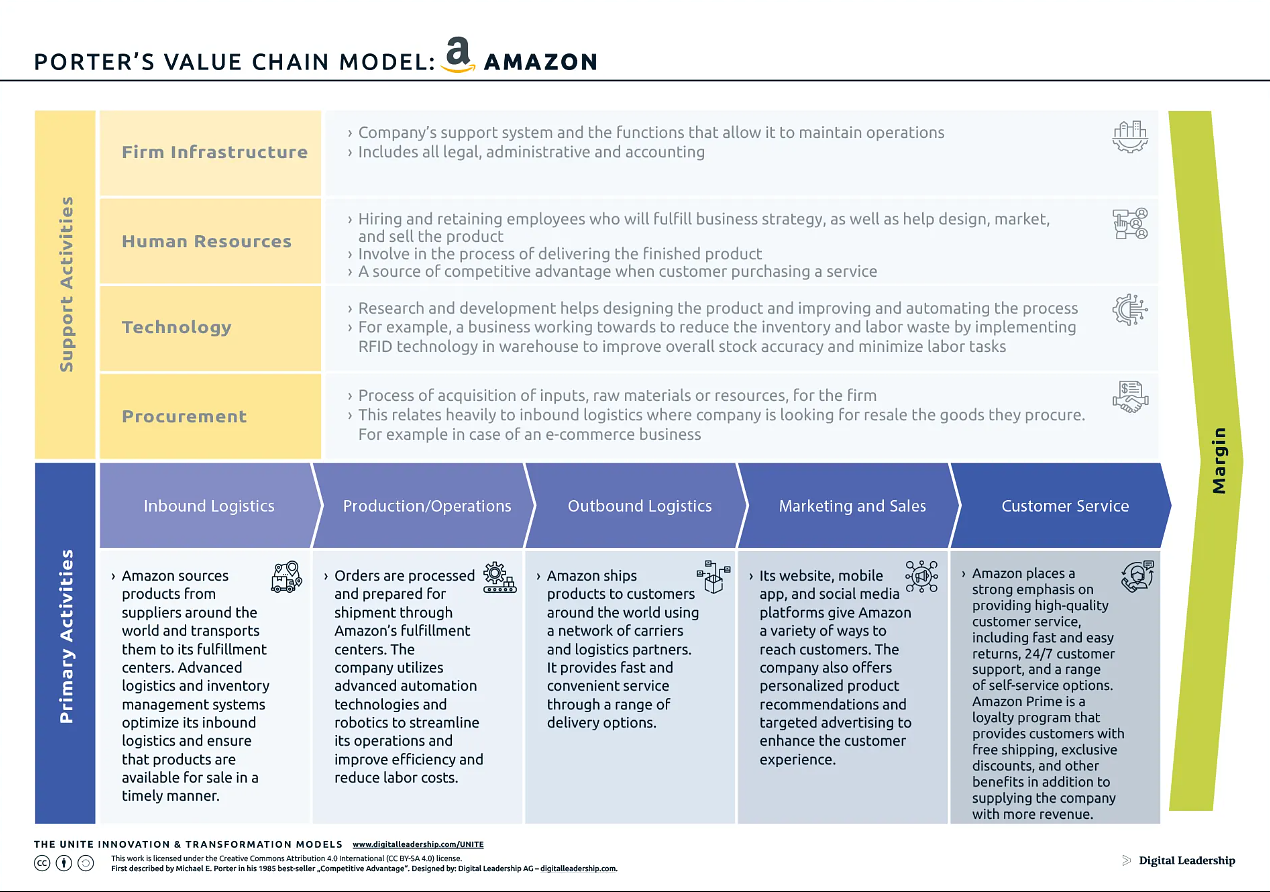

Benefits
Specifically, these are some of the benefits that can be achieved from inspecting and understanding deeply the company’s value chain:
• Align the company’s overall strategy with the identified value chain activities, ensuring that strategic initiatives are designed to enhance or optimize key value-adding processes.
• Identify opportunities for efficiency improvements within the value chain, aiming to reduce costs, streamline processes, and enhance overall performance.
• Explore areas within the value chain where innovation can lead to differentiation in products or services, helping the company stand out in the market.
• Allocate resources effectively by understanding which parts of the value chain contribute the most to the company’s success. This can involve optimizing investments in technology, human capital, or infrastructure.
• Evaluate potential risks and vulnerabilities within the value chain, such as supply chain disruptions, and implement strategies to mitigate these risks.
• Strengthen relationships with key suppliers and partners, ensuring that the supply chain is robust and capable of meeting the company’s needs.
• Use insights from the value chain to enhance the customer experience by focusing on areas that directly impact product or service quality, delivery, and support.
• Analyze cost structures at each stage of the value chain to identify opportunities for cost reduction without compromising quality or performance.
• Evaluate the environmental and social impact of the value chain. Implement sustainable practices and communicate CSR initiatives to stakeholders.
• Use knowledge of the value chain to assess potential acquisitions or partnerships that align with the company’s strategic objectives.
• Communicate the company’s value proposition to stakeholders, including employees, investors, and customers, emphasizing how the value chain contributes to the overall success of the business.
• Foster a culture of continuous improvement by regularly reviewing and optimizing value chain processes in response to changing market conditions and business goals.
By leveraging information about the value chain, you can make data-driven decisions, and, similar to using the SWOT Analysis, you can allocate resources more effectively and drive the company towards its strategic objectives. This holistic understanding of the value chain is crucial for sustained competitiveness and success in the marketplace today.

Exercise 1.1: Priority Pyramid Workshop

Course Manual 2: Competitive Analysis
Competitive analysis is one of the most crucial components of the Value Chain Inspect phase, as it helps a company understand the key competitive threats to its value chain. These threats may come from various sources—existing competitors, emerging upstart companies, technological advancements, or new free or low-cost solutions, such as Google Search. Performing a robust competitive analysis involves identifying these threats at each major point of the value chain and determining how they impact the company’s ability to compete in the market.
A well-executed competitive analysis allows companies to identify areas of vulnerability within their value chain and proactively address potential disruptions. Moreover, it provides insights into new opportunities, allowing companies to innovate, refine, or pivot their operations to maintain a competitive edge.
This course manual will cover key areas in competitive analysis, providing a structured approach to analyzing the competitive landscape. We will expand on the use of Porter’s Five Forces to inspect competitive threats across the value chain, explore examples of competitive dynamics in different industries, and offer a real-life case study and a group exercise to deepen understanding.
Understanding Competitive Threats
Competitive threats are an inevitable aspect of any business landscape. For companies, these threats often emerge from three primary sources:
1. Current Competitors: Established companies that are already competing in the same industry or market. They might innovate in ways that make them more appealing to customers, such as improving the quality of products or services, offering better pricing, or delivering a superior customer experience.
These competitors often have deep-rooted market presence, brand loyalty, and established infrastructure, which gives them a strong foundation to build upon. They frequently leverage these advantages to maintain their competitive edge by either refining their product offerings or incorporating new technologies.
Additionally, their larger customer base and access to significant resources allow them to experiment with incremental innovations or disruptive technologies to enhance operational efficiency. Whether it’s through cost reductions, adopting AI to streamline operations, or expanding their product portfolio, these companies continue to pose a formidable threat. Even if they maintain the status quo, their established brand and relationships with customers give them the ability to respond quickly to shifts in consumer preferences or market trends, making them formidable competitors to any new entrant or incumbent lagging in innovation.
2. New Entrants or Upstart Companies: These are often tech-driven companies that enter the market with disruptive innovations that challenge the status quo. For example, tech start-ups that leverage AI or automation can revolutionize areas like customer service, supply chain management, or marketing, posing a direct threat to traditional companies that have yet to adopt these technologies.
These new entrants are typically agile, unburdened by legacy systems, and more willing to take risks, allowing them to innovate at a rapid pace. Unlike established companies that may rely on traditional business models, these start-ups often focus on digital-first strategies, using technology to create efficiencies, lower costs, and deliver personalized experiences to customers. Their ability to scale quickly, adapt to changing market conditions, and meet evolving consumer demands can create significant disruptions, especially for larger companies that may struggle to implement changes swiftly.
These start-ups often target specific pain points within industries—such as slow response times in customer service or inefficiencies in supply chain logistics—offering solutions that are faster, more efficient, and cost-effective. By challenging established players with cutting-edge technologies, these upstarts not only attract customers but can also set new standards for service and performance, forcing traditional companies to rethink their strategies.
3. Substitute Solutions: Technology has lowered barriers in many industries, allowing free or near-free solutions to flourish. Google Search and ChatGPT are prime examples, where high-quality information and automation are offered at little to no cost, threatening industries that charge for similar services.
These substitute solutions can dramatically shift consumer behavior by providing accessible, user-friendly alternatives that reduce the need for paid services. For instance, industries like customer service, content creation, and even education are being disrupted by AI-powered tools, which can handle complex inquiries, generate content, or provide tutoring services—all for a fraction of the cost or even for free.
Similarly, Google Search offers vast amounts of information at no charge, reducing the demand for paid research, consultation, or information services. These substitutes often appeal to consumers by offering convenience and cost savings, while businesses that rely on traditional revenue models find themselves under pressure to innovate or justify their premium pricing. The availability of these solutions forces established companies to rethink their value propositions and explore ways to add unique value that cannot be easily replicated by free or low-cost alternatives.
Identifying these threats across each segment of the value chain is critical for maintaining a competitive edge. Competitive threats can directly impact areas such as:
• Product sourcing: Innovations in sourcing techniques or new players who source more efficiently can disrupt traditional supply chains.
These innovations often leverage advanced technologies such as blockchain, AI, or data analytics to optimize sourcing processes, resulting in lower costs, faster delivery times, and enhanced transparency. For example, companies that implement blockchain can provide real-time tracking of goods, ensuring greater accountability and reducing the risk of fraud or mismanagement. AI-powered platforms can also analyze vast datasets to predict demand, optimize order quantities, and identify the best suppliers, allowing businesses to source materials more efficiently than their competitors.
New entrants into the sourcing market may offer innovative models such as on-demand sourcing or direct-from-manufacturer platforms, bypassing traditional intermediaries and reducing costs. These disruptive techniques challenge established companies that rely on conventional, often slower or more expensive, sourcing methods. Traditional players may struggle to keep up if they fail to adopt similar innovations, as more efficient competitors can offer better pricing, faster turnaround times, and enhanced transparency to customers, shifting market dynamics in favor of the innovators.
• R&D: Competitors with better or faster R&D processes can bring superior products to market more quickly.
These companies often leverage cutting-edge technologies, streamlined workflows, and a culture of innovation that allows them to reduce development cycles and respond swiftly to market trends. Advanced R&D teams may use AI-driven simulations, machine learning algorithms, or big data analytics to accelerate product testing, improve accuracy, and predict consumer demand, giving them a significant competitive edge. By operating with agile methodologies and collaborative environments, these companies can experiment and iterate rapidly, identifying breakthroughs and refining products before their competitors.
This speed not only allows them to capture market share early but also positions them as leaders in innovation, drawing in more customers and partners. For traditional companies with slower, more bureaucratic R&D processes, keeping pace with these fast innovators becomes a major challenge. Without adapting to these faster methodologies, they risk losing ground in product quality, innovation leadership, and overall competitiveness in the marketplace.
• Marketing and Sales: Competitors with advanced digital marketing techniques or AI-driven customer relationship management (CRM) tools can gain an edge in customer acquisition and retention.
These companies utilize sophisticated tools like AI algorithms, data analytics, and machine learning to personalize marketing campaigns, segment audiences with precision, and deliver targeted advertisements. By analyzing customer behavior, preferences, and buying patterns in real-time, AI-driven CRM tools can tailor marketing messages to individual customers, improving engagement and conversion rates. Additionally, automation in lead generation and nurturing processes ensures that potential customers are guided through the sales funnel with minimal human intervention, leading to faster sales cycles and improved efficiency.
Competitors that leverage these tools can not only attract new customers more effectively but also retain existing ones by delivering highly personalized experiences that build loyalty. For companies relying on traditional marketing methods, this creates a significant challenge, as they struggle to match the precision, scale, and efficiency of AI-powered marketing strategies. Without adopting similar technologies, these companies risk losing market share to competitors who can adapt to evolving consumer expectations more effectively.
• Distribution: Companies with optimized logistics or superior distribution networks can deliver products faster and more cost-effectively.
These companies often leverage technologies such as AI, automation, and real-time data analytics to streamline their supply chain operations, ensuring that products are transported efficiently and at lower costs. For instance, AI can be used to predict demand and optimize delivery routes, reducing transportation costs and improving delivery speed. Advanced logistics networks, including the use of automated warehouses, drones, and robotics, can further reduce manual errors, increase throughput, and enhance accuracy in product delivery.
Companies like Amazon have set the benchmark with same-day or next-day delivery capabilities, which place immense pressure on competitors to match these high standards. Those with outdated or inefficient distribution models struggle to keep up, as they face higher operational costs and longer delivery times. The ability to deliver products quickly and at lower costs has become a significant competitive advantage, especially in industries like retail and e-commerce, where consumer expectations for fast, reliable delivery are continuously rising. Traditional companies must invest in modernizing their logistics networks or risk losing market share to these more agile competitors.
• Customer Service: Competitors with AI-based customer support can handle a higher volume of customer inquiries while offering personalized service at a lower cost.
AI-powered tools, such as chatbots and virtual assistants, enable companies to provide 24/7 customer service, answering common questions and resolving issues instantly without human intervention. These systems can handle vast numbers of inquiries simultaneously, reducing wait times and improving customer satisfaction. Moreover, AI can analyze previous interactions and customer data to offer personalized responses, tailoring solutions to each individual’s preferences and needs.
By continuously learning from interactions, these AI systems become more accurate and efficient over time. This level of service not only reduces the need for large customer support teams but also provides a seamless, consistent customer experience at a fraction of the cost. Competitors that rely solely on traditional human-operated customer service are often at a disadvantage, as they struggle to keep up with the demand and the personalized nature of AI-driven support. Without adopting similar technologies, they face higher operational costs, slower response times, and a lower ability to meet evolving customer expectations.
The goal of competitive analysis in this context is to assess these threats and find ways to mitigate their impact or even turn them into opportunities.

The Role of Porter’s Five Forces in Competitive Analysis
Porter’s Five Forces is a well-established framework for analyzing competitive pressures in an industry. It provides a comprehensive approach to understanding how various competitive factors shape market dynamics. By applying this framework, companies can identify specific points in their value chain where competitive threats are most likely to emerge and influence performance. Below are the five forces and how they apply to value chain analysis.
Threat of New Entrants: New competitors can challenge established companies by entering the market with innovative business models or disruptive technologies. These new entrants may introduce better products, services, or processes at lower prices, forcing established companies to adapt. The ease with which new entrants can enter a market depends on several factors, including barriers to entry, capital requirements, regulatory conditions, and brand loyalty. In areas such as R&D and product development, new entrants may be especially disruptive if they bring cutting-edge technologies or novel approaches.
Bargaining Power of Suppliers: The power of suppliers can influence a company’s value chain by impacting the cost and quality of essential materials or services. In industries where there are few suppliers or where suppliers offer unique, high-demand inputs, their bargaining power increases. For instance, companies reliant on rare or specialized materials for production may face challenges if suppliers raise prices or prioritize other buyers. A thorough competitive analysis should assess how shifts in supplier power might impact different parts of the value chain, such as sourcing and production.
Bargaining Power of Buyers: Buyers have the power to demand lower prices, higher quality, or better service, especially in markets where they have multiple options. Companies that operate in commoditized industries often face intense buyer pressure to improve their value proposition. In response, companies must innovate in product design, customer service, or distribution to maintain customer loyalty and stay competitive. The buyer’s influence is particularly important in areas like marketing and sales, where competitive differentiation is key to attracting and retaining customers.
Threat of Substitutes: Substitute products or services are alternatives that customers may turn to if they provide better value, convenience, or functionality. For example, in the coffee industry, consumers might switch from buying brewed coffee at Starbucks to using home coffee machines like Nespresso or Keurig. In the tech industry, AI-driven tools like ChatGPT may serve as a substitute for human-driven services. Companies must constantly monitor the market for emerging substitutes that can challenge their position in the value chain. Substitutes can affect various parts of the value chain, including customer service, product development, and distribution.
Industry Rivalry: The level of competition among existing players in an industry determines the intensity of rivalry. In industries with many competitors offering similar products or services, companies must continuously innovate and find new ways to differentiate themselves. Price wars, increased marketing expenditures, and constant improvements in product quality are common outcomes of high rivalry. Competitive analysis should focus on how this rivalry influences strategic areas of the value chain, such as product sourcing, marketing, and customer service.

Competitive Threats Across the Value Chain
To develop a comprehensive understanding of competitive dynamics, companies need to analyze threats across the major components of their value chain. Below are examples of how competitive threats manifest in different areas.
Product Sourcing: Competitors can disrupt product sourcing by developing more efficient or cost-effective sourcing techniques. For example, companies using blockchain for supply chain transparency can offer a higher level of trust and traceability to consumers, which might challenge competitors still reliant on traditional sourcing methods.
R&D and Innovation: In industries like pharmaceuticals or technology, a competitor with superior R&D capabilities can bring new products to market faster, gaining a first-mover advantage. Companies that fail to keep pace with technological advancements may struggle to remain competitive, particularly in fast-moving industries such as AI, biotechnology, and software.
Production and Manufacturing: Manufacturing innovations, such as 3D printing, advanced robotics, or automation, allow competitors to reduce production costs and increase output efficiency. Companies that do not adopt these advancements may find themselves at a competitive disadvantage in terms of both cost and production speed.
Distribution and Logistics: Efficient logistics and distribution networks are a significant competitive advantage, especially in industries like e-commerce, retail, and consumer goods. Companies that can deliver products faster and more cost-effectively will attract more customers. Competitors with superior distribution capabilities—such as Amazon’s logistics network—pose a significant threat to less agile companies.
Marketing and Sales: Digital marketing tools and AI-powered CRM systems allow competitors to engage with customers more effectively and personalize their marketing efforts. Companies that rely on outdated marketing techniques may lose customers to competitors that better leverage data-driven insights and digital engagement strategies.
Customer Service: The rise of AI-powered chatbots and automated customer service platforms has allowed companies to handle a higher volume of customer inquiries at a lower cost, providing personalized service while reducing human labor. Competitors that adopt these technologies can offer faster, more efficient customer support, posing a threat to companies that have not embraced automation.
Adapting to Competitive Threats
Once a company identifies the competitive threats within its value chain, it must adapt to mitigate these threats and maintain its competitive edge. There are several strategies for addressing competitive threats, including:
• Innovation: Companies must continuously innovate to stay ahead of competitors. This could involve adopting new technologies, improving product quality, or enhancing customer service.
• Operational Efficiency: By streamlining operations, companies can reduce costs and improve speed to market, giving them an advantage over competitors with less efficient value chains.
• Strategic Alliances: Partnering with other companies, especially tech firms, can help established businesses stay competitive by gaining access to new technologies or entering new markets.
• Diversification: Expanding into new markets or offering a broader range of products or services can reduce the impact of competition in any one area of the value chain.
Conclusion:
Competitive analysis is a critical part of the Value Chain Inspect phase, as it enables companies to identify where threats exist and where opportunities for growth and innovation lie. By understanding the competitive pressures in each area of the value chain, companies can take proactive steps to maintain their competitive edge and continue delivering value to customers. Leveraging frameworks like Porter’s Five Forces, companies can systematically assess the risks posed by competitors and develop strategies to address them.
Course Manual Two, focused on Competitive Analysis, directly supports the TechquisitionTM method’s core objective by helping senior management assess the competitive landscape within each segment of the company’s value chain. By identifying competitive threats—whether from existing competitors, new entrants, or substitute technologies—management can understand where vulnerabilities and opportunities lie. This insight is essential for making informed decisions about potential tech acquisitions or partnerships that can address these threats and create value. Competitive analysis helps the company align its acquisition strategy with market trends, customer demands, and evolving technological advancements. Furthermore, this analysis aids in confirming the specifications of the ideal target company by understanding where strategic investments in technology can strengthen the company’s competitive position. Ultimately, it ensures that the commitment to tech-driven transformation is grounded in a clear understanding of external pressures and opportunities, solidifying the need-to-have mindset critical for the success of the TechquisitionTM effort.

Case Study: Amazon’s Competitive Dominance in E-Commerce
Amazon has become a leading example of a company that has leveraged competitive analysis to dominate the e-commerce value chain. Over the years, Amazon’s strategic use of cutting-edge technology—such as AI, automation, and predictive analytics—has enabled it to outperform competitors in various critical areas of its operations, securing its place as a global leader in online retail.
One of Amazon’s primary competitive advantages lies in product sourcing. Amazon’s vast network of suppliers, combined with its third-party marketplace platform, enables the company to offer a massive selection of products at competitive prices. This marketplace model allows Amazon to benefit from economies of scale and ensures that customers can find virtually any product they need on the platform. Moreover, Amazon uses sophisticated algorithms to manage inventory efficiently, ensuring popular items remain in stock while minimizing the costs of excess inventory.
In the area of distribution, Amazon’s dominance is even more pronounced. The company has built a logistics network that is unmatched in the e-commerce industry. With a fleet of delivery vehicles, fulfillment centers strategically located around the globe, and innovative delivery methods like drones, Amazon can offer same-day or next-day delivery to millions of customers. This fast and reliable delivery service has set a new standard in the industry, forcing competitors to play catch-up. Amazon’s use of predictive analytics further enhances its distribution efficiency by forecasting demand and optimizing delivery routes to reduce costs and delivery times.
Another area where Amazon has revolutionized its value chain is customer service. The company has integrated AI-powered support systems, including its virtual assistant Alexa and chatbots, which handle a significant portion of customer inquiries more efficiently than human agents. These AI systems provide instant responses to common customer issues, improve resolution times, and operate 24/7. By minimizing human intervention, Amazon has significantly reduced the costs associated with customer support while enhancing the overall customer experience through faster and more personalized service.
Additionally, Amazon’s continuous investment in automation and technology allows the company to stay ahead of its competitors in operational efficiency and innovation. From the automation of warehouse operations with robots to the use of machine learning to personalize customer recommendations, Amazon remains at the forefront of e-commerce technology. This has allowed the company to scale rapidly while maintaining profitability and customer satisfaction.
By continuously innovating and improving every aspect of its value chain, Amazon has created an almost impenetrable competitive advantage in the e-commerce industry. Its ability to harness technology, streamline processes, and deliver exceptional customer service has set a benchmark for the industry. Competitors must not only match Amazon’s capabilities but also find ways to differentiate themselves in a market where Amazon’s dominance continues to grow.

Exercise 1.2: Competitive Threat Mapping

Course Manual 3: Identify Stakeholder Goals
In any organization, stakeholders play a crucial role in shaping the company’s strategies, policies, and operations. The stakeholders’ goals influence how the company allocates resources, sets priorities, and positions itself in the market. As part of the Value Chain Inspect phase, understanding how each area of the value chain aligns with stakeholder expectations is essential for ensuring that the company’s operations support long-term success and create value for all parties involved.
Stakeholders include a diverse group of individuals or entities—shareholders, employees, customers, suppliers, regulators, and the broader community—each of whom has distinct goals and interests. The goal of this phase is to evaluate how each part of the value chain aligns with the objectives of these stakeholders and to identify opportunities where improvements can be made. Understanding and managing stakeholder goals helps ensure that value chain activities are optimized not only for financial performance but also for stakeholder satisfaction, risk management, and sustainable growth.
This manual will explore the process of identifying and aligning stakeholder goals with the value chain, the impact on efficiency and innovation, and how this approach supports the long-term sustainability of the business.
Defining Stakeholders and Their Goals
Stakeholders are the individuals, groups, or organizations that are affected by or can influence the operations of the company. The primary stakeholders in most companies include:
• Shareholders and Investors: These stakeholders are primarily concerned with financial returns, such as revenue growth, profitability, and share price performance. They expect efficient use of resources and strategic decisions that enhance company value.
• Employees: Employees seek job security, career development opportunities, fair compensation, and a positive work environment. They are also increasingly focused on the company’s commitment to social responsibility and its ability to provide meaningful work.
• Customers: Customers expect high-quality products and services at competitive prices. They also value a positive customer experience, timely delivery, and companies that align with their personal values, such as those prioritizing sustainability and ethical practices.
• Suppliers: Suppliers are interested in building strong, long-term relationships with the company. They seek reliable contracts, prompt payments, and mutual growth opportunities.
• Regulators: These stakeholders ensure that the company complies with legal and regulatory requirements. Regulators are particularly concerned with the company’s adherence to industry standards, safety protocols, environmental laws, and fair labor practices.
• The Community: Companies are increasingly expected to contribute to the broader community through corporate social responsibility (CSR) initiatives, including environmental sustainability, philanthropy, and ethical business practices.
Each of these stakeholders has unique goals, and it is the company’s responsibility to ensure that its value chain aligns with these expectations. By doing so, the company can build stronger relationships with stakeholders and create a more resilient business model.

Stakeholder Goals and the Value Chain
For each segment of the company’s value chain, it is important to assess how operations align with stakeholder goals and identify opportunities for improvement. This alignment helps ensure that stakeholders remain engaged and supportive, while also enhancing the company’s competitive position.
1. Shareholders and the Value Chain
Shareholders and investors are particularly concerned with areas of the value chain that directly impact financial performance. These stakeholders want to see high returns on their investments, which often involves a focus on profitability, cost efficiency, and growth opportunities.
• Sourcing and Procurement: Efficient sourcing practices that reduce costs without sacrificing quality are important to shareholders, as they can directly impact the company’s profitability.
• R&D and Innovation: Investments in research and development are crucial for creating new products and services that drive revenue growth. Shareholders often view innovation as a long-term investment that can significantly enhance the company’s market value.
• Production: Streamlining production processes to increase efficiency, reduce waste, and lower costs contributes to higher profit margins, which is a key concern for investors.
• Distribution and Logistics: Efficient distribution networks that reduce shipping times and costs while maintaining product quality are critical for ensuring customer satisfaction and maintaining profitability.
• Sales and Marketing: Shareholders expect sales and marketing efforts to generate strong demand for products and services, driving revenue growth and market share expansion.
For shareholders, the primary goal is to see the company operate its value chain in a way that maximizes financial returns while minimizing risk. By aligning the value chain with shareholder interests, the company can attract investment and support long-term growth strategies.
2. Employees and the Value Chain
Employees are key stakeholders who interact with the value chain at every level. Their satisfaction and engagement are directly tied to how the company manages its operations, particularly in areas related to work environment, job security, and career development.
• Sourcing and Procurement: Employees involved in sourcing and procurement need clear guidelines, reliable supplier relationships, and opportunities for professional growth within their roles.
• R&D and Innovation: Employees in R&D thrive in environments that foster creativity, collaboration, and opportunities to work on cutting-edge projects. Aligning innovation efforts with employee career goals can increase job satisfaction and retention.
• Production: Employees working in production value safe working conditions, efficient processes, and access to training and development programs that enable them to advance their careers.
• Distribution and Logistics: Employees involved in logistics and distribution expect streamlined workflows, appropriate technology support, and clear communication across departments.
• Sales and Marketing: Sales and marketing employees want access to the best tools and data analytics to enhance performance and achieve their sales targets. Supporting employees in these roles with modern technologies and continuous learning opportunities improves morale and productivity.
By aligning the value chain with employee goals, the company can improve retention, productivity, and overall job satisfaction. This alignment is particularly important in industries with high turnover rates, as attracting and retaining top talent is a key driver of long-term success.
3. Customers and the Value Chain
Customers are a key focus for any business, and their goals are directly tied to the quality and value of the products or services offered. To meet customer expectations, companies must ensure that their value chain delivers consistently high-quality products, timely delivery, and responsive customer service.
• Sourcing and Procurement: Customers expect products made from high-quality materials sourced from ethical suppliers. Companies that can demonstrate a commitment to sustainable sourcing often build stronger relationships with ethically-conscious consumers.
• R&D and Innovation: Customers want innovative products that meet their needs, whether through new features, improved performance, or enhanced usability. A focus on customer-centric innovation helps the company stay relevant in a competitive marketplace.
• Production: Customers expect products to be produced efficiently and with consistent quality. In industries like automotive or electronics, production quality can significantly impact customer satisfaction and brand loyalty.
• Distribution and Logistics: Timely and accurate delivery is critical for meeting customer expectations. Companies with optimized logistics networks that ensure fast and reliable delivery are better positioned to retain customers.
• Sales and Marketing: Customers expect clear and honest marketing, as well as seamless purchasing experiences. Personalized marketing and streamlined sales processes contribute to a better overall customer experience.
Ensuring that each aspect of the value chain aligns with customer goals helps build trust and loyalty, which are essential for long-term revenue growth and brand strength.
4. Suppliers and the Value Chain
Strong supplier relationships are essential for ensuring that the value chain operates smoothly. Suppliers are concerned with building long-term partnerships, receiving fair compensation, and having the opportunity to grow alongside the company.
• Sourcing and Procurement: Suppliers expect transparency and reliability from the company. Fair and timely payments, clear contractual terms, and consistent demand are crucial for maintaining strong supplier relationships.
• R&D and Innovation: Suppliers involved in innovative projects, such as those providing cutting-edge materials or components, seek collaborative partnerships that allow for mutual growth. Engaging suppliers early in the R&D process can lead to better outcomes for both parties.
• Production: Suppliers providing raw materials or components for production expect the company to uphold agreed-upon quality standards and delivery schedules. This mutual respect ensures a stable supply chain.
• Distribution and Logistics: Suppliers involved in distribution often look for partnerships where efficiency and collaboration are prioritized. Clear communication and shared goals help improve logistical performance.
• Sales and Marketing: While suppliers may not have a direct role in sales and marketing, they benefit from the company’s success in these areas, as strong demand for the company’s products can lead to increased orders and growth opportunities for suppliers.
By aligning the value chain with supplier goals, companies can create more resilient and reliable supply chains that support long-term business success.
5. Regulators and the Value Chain
Regulatory compliance is a key concern for any company, and regulators play a significant role in shaping how the value chain operates. Companies must ensure that their value chain aligns with regulatory requirements related to safety, labor practices, environmental impact, and product standards.
• Sourcing and Procurement: Regulators often have strict requirements for how materials are sourced, particularly with regard to environmental and labor standards. Companies that comply with these regulations avoid fines and build a reputation for ethical practices.
• R&D and Innovation: Regulatory agencies may impose restrictions or guidelines on product development, particularly in industries like pharmaceuticals or energy. Ensuring compliance in R&D helps the company avoid costly delays or legal challenges.
• Production: Production processes must adhere to safety and environmental regulations. Ensuring that production facilities meet these standards is critical for avoiding fines and maintaining a strong public image.
• Distribution and Logistics: Companies involved in global trade must comply with regulations related to customs, tariffs, and transportation safety. Efficiently navigating these regulations helps ensure smooth distribution operations.
• Sales and Marketing: Advertising and marketing activities must comply with regulations related to truth in advertising, consumer protection, and privacy. Ensuring compliance helps avoid legal challenges and maintains consumer trust.
Aligning the value chain with regulatory expectations not only helps the company avoid legal issues but also enhances its reputation as a responsible corporate citizen.
6. The Community and the Value Chain
The broader community, including local residents, advocacy groups, and nonprofit organizations, expects companies to operate responsibly and contribute to social and environmental well-being.
• Sourcing and Procurement: Communities are increasingly concerned with ethical sourcing practices. Companies that prioritize sustainable sourcing are more likely to earn community support and build positive brand reputations.
• R&D and Innovation: Companies that focus on developing products that address community concerns, such as sustainability or public health, can build stronger ties with local and global communities.
• Production: The impact of production on local communities—whether through job creation, environmental impact, or infrastructure development—is a key concern. Companies that invest in local communities through responsible production practices and community engagement often benefit from stronger local support.
• Distribution and Logistics: Communities expect companies to minimize the environmental impact of their logistics operations, particularly in areas like carbon emissions and waste management. Sustainable distribution practices can strengthen a company’s relationship with the community.
• Sales and Marketing: Ethical marketing practices that align with community values help build trust and support for the company’s activities.
By aligning the value chain with community goals, companies can build stronger relationships with local stakeholders and enhance their overall social license to operate.

Measuring Alignment and Identifying Gaps
Once the company has identified stakeholder goals and mapped them to the value chain, the next step is to assess how well the company’s current operations align with these goals. This assessment involves evaluating:
Efficiency: Are the value chain processes optimized to meet stakeholder expectations in terms of cost, speed, and quality?
Efficiency within the value chain is critical for satisfying stakeholders, as it ensures that resources are utilized in a way that maximizes value while minimizing waste. For shareholders, an efficient value chain translates into higher profitability through reduced costs and improved margins. Customers benefit from faster delivery times and consistent product quality, enhancing their overall experience and loyalty. Employees also experience the benefits of streamlined processes, which can lead to clearer workflows, reduced workload stress, and greater job satisfaction.
Additionally, suppliers and partners value working with companies that have efficient operations, as it leads to more predictable demand and reliable business partnerships. By continually optimizing processes for speed, cost-effectiveness, and quality, the company not only enhances its competitive advantage but also strengthens its relationships with key stakeholders who rely on the company’s ability to deliver value efficiently and reliably.
Innovation: Is the company leveraging opportunities to innovate in ways that align with stakeholder interests, such as developing new products, improving sustainability, or enhancing customer experiences?
Innovation plays a pivotal role in maintaining competitiveness and driving growth, but it must align with the needs and expectations of stakeholders to be truly impactful. For shareholders, innovation can lead to new revenue streams, increased market share, and long-term value creation. Customers benefit from product improvements, new features, and enhanced services that meet evolving preferences and demands, fostering loyalty and satisfaction. Employees also thrive in innovative environments, as they are provided with opportunities to engage in creative problem-solving and contribute to cutting-edge projects, which can boost morale and job fulfillment.
Suppliers, too, may benefit from innovation, particularly when it leads to more efficient supply chains or the development of new materials and technologies. Moreover, companies that innovate with a focus on sustainability can meet regulatory requirements, reduce environmental impact, and appeal to eco-conscious stakeholders, including customers and the broader community. By embedding innovation into the value chain in ways that resonate with these diverse stakeholder groups, the company not only strengthens its market position but also creates shared value across its ecosystem.
Risk Mitigation: Are there areas of the value chain that pose risks to stakeholders, such as supply chain disruptions, regulatory non-compliance, or environmental impact? How can these risks be mitigated?
Risk mitigation is a critical component of value chain management, as unchecked risks can lead to significant disruptions that affect all stakeholders. For example, supply chain disruptions—such as those caused by geopolitical instability, natural disasters, or supplier failures—can impact product availability, leading to customer dissatisfaction and revenue loss. Regulatory non-compliance presents legal and financial risks, as fines, lawsuits, or operational shutdowns can result from failing to meet industry standards or governmental requirements. Environmental impact is another major area of concern, particularly for stakeholders focused on sustainability, including customers, regulators, and the broader community.
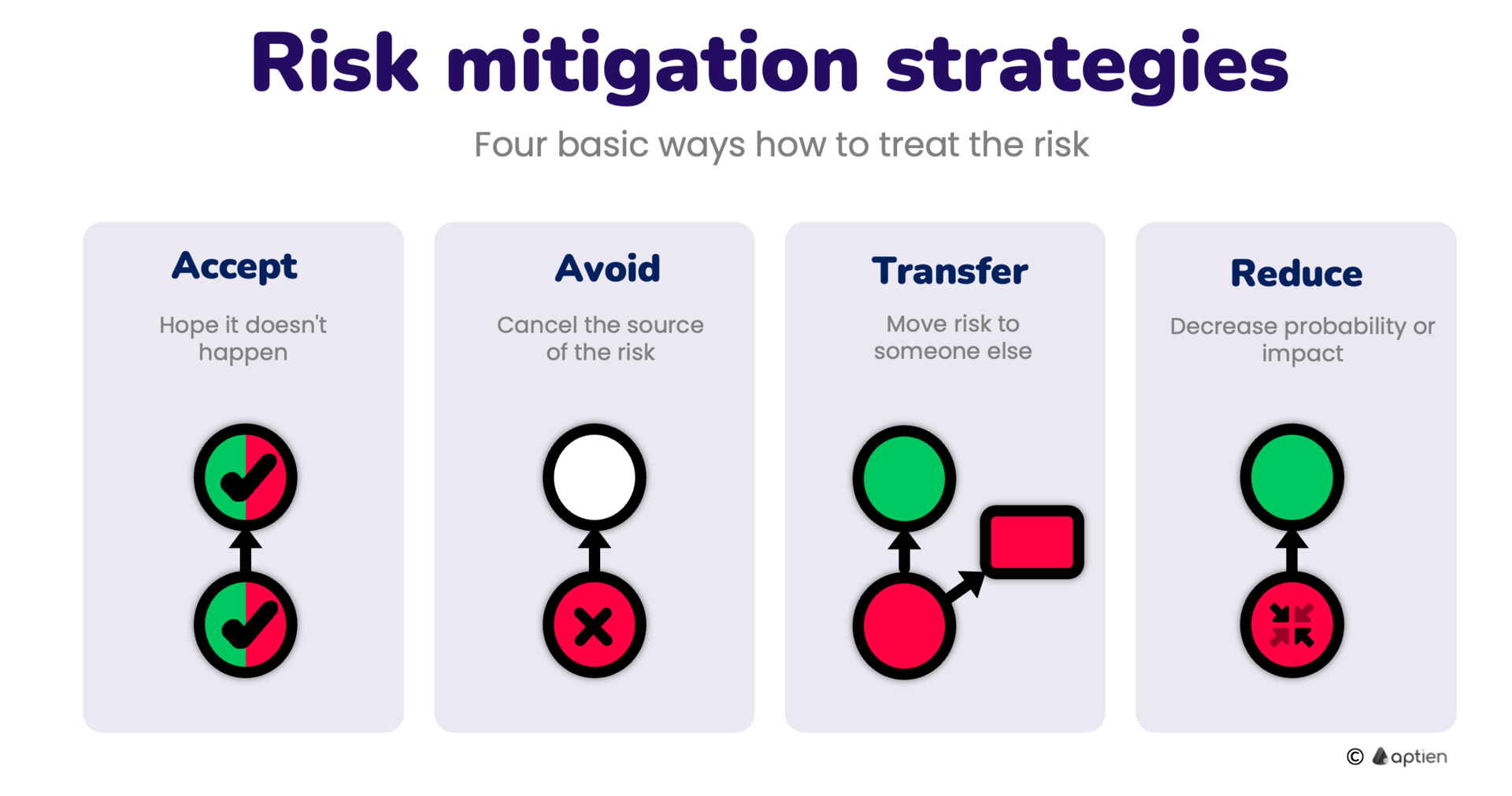
To mitigate these risks, companies must adopt proactive strategies, such as diversifying suppliers to reduce dependence on any single source, implementing robust compliance monitoring systems, and investing in sustainable practices that reduce environmental harm. By addressing potential risks throughout the value chain, companies can not only protect their operations and financial performance but also maintain the trust and confidence of key stakeholders who rely on the company’s ability to manage these challenges effectively.
Sustainability: Is the company meeting its stakeholders’ expectations regarding environmental and social responsibility?
Customers are increasingly making purchasing decisions based on a company’s environmental and social footprint, favoring brands that prioritize sustainable practices. Shareholders and investors are also more likely to support businesses that integrate environmental, social, and governance (ESG) principles into their operations, seeing them as more resilient and future-focused. Employees, especially younger generations, seek to work for companies that are committed to making a positive societal impact.
Sustainability in the value chain involves practices such as reducing carbon emissions, minimizing waste, using ethically sourced materials, and fostering fair labor practices throughout the supply chain. Companies that meet or exceed these expectations can enhance their reputation, improve stakeholder trust, and secure a competitive edge in the market. Conversely, failure to address sustainability concerns can lead to reputational damage, regulatory penalties, and a loss of stakeholder support. By embedding sustainability into every level of the value chain, companies can align with stakeholder values, ensure long-term viability, and contribute to global environmental and social goals.
Communication and Engagement: Are stakeholders adequately informed and engaged with the company’s efforts in each value chain segment?
Effective communication and engagement with stakeholders are critical for building trust, fostering transparency, and ensuring alignment with business goals. For shareholders, regular updates on the company’s value chain performance—such as reports on operational efficiency, sustainability initiatives, or technological advancements—reinforce their confidence in the company’s strategic direction. Customers expect clear communication about product sourcing, quality, and sustainability, which can influence their purchasing decisions and loyalty. Employees benefit from open communication, as it keeps them informed about operational changes, innovations, and how their roles contribute to the broader business strategy.
Suppliers and partners also need transparent and consistent communication to ensure alignment on production schedules, quality standards, and long-term collaboration. Engaging with regulators and the community through clear dialogue on compliance, sustainability, and corporate social responsibility initiatives further enhances the company’s reputation and social license to operate. By ensuring stakeholders are consistently informed and involved in decision-making processes, companies can build stronger relationships, increase stakeholder satisfaction, and create a more resilient and cohesive value chain.
By measuring alignment and identifying gaps, the company can prioritize areas for improvement and develop action plans to better meet stakeholder goals.
Conclusion:
Course Manual Three, focused on Identifying Stakeholder Goals, directly supports the TechquisitionTM method’s objective by ensuring that senior management aligns the company’s value chain with the expectations and goals of key stakeholders—such as shareholders, employees, customers, suppliers, and regulators. This alignment is essential when considering a technology acquisition, as it allows the company to prioritize value chain areas that support both operational success and stakeholder satisfaction. By understanding how each part of the value chain affects stakeholder objectives, management can make informed decisions about where a tech acquisition or partnership could deliver the most value. The manual also helps senior management assess whether the acquisition will meet long-term strategic goals and avoid conflicts with key stakeholders. This ensures that the company is fully committed to using acquisitions to drive transformation, with stakeholder alignment reinforcing the need-to-have mindset critical to the TechquisitionTM effort’s success.

Case Study: Unilever’s Sustainable Living Plan
Unilever, a global consumer goods company, provides a compelling example of how aligning stakeholder goals with the value chain can drive long-term success. Through its Sustainable Living Plan, launched in 2010, Unilever committed to integrating sustainability into every aspect of its value chain while addressing the needs of its key stakeholders, including customers, shareholders, employees, suppliers, regulators, and the broader community.
In sourcing, Unilever prioritized sustainable agriculture by working closely with suppliers to ensure that 100% of its agricultural raw materials were sustainably sourced. This move addressed growing consumer and regulatory demand for environmentally responsible practices and helped solidify long-term relationships with suppliers. Unilever also set strict environmental and ethical standards for its supply chain, ensuring that it adhered to best practices in labor rights and environmental stewardship.
In production, the company made significant strides in reducing its environmental footprint. It focused on cutting CO2 emissions, water usage, and waste across its global manufacturing facilities. By 2020, Unilever had achieved a 65% reduction in CO2 emissions per tonne of production and a 39% reduction in water use, reflecting its commitment to reducing its environmental impact. These efforts not only improved efficiency but also aligned with the goals of regulators and environmental groups, enhancing Unilever’s reputation as a leader in sustainable business practices.
In R&D, Unilever invested heavily in developing innovative, sustainable products that aligned with customer expectations for healthier and more environmentally friendly options. For example, the company introduced product lines with reduced plastic packaging, biodegradable ingredients, and sustainable palm oil. These innovations helped Unilever meet the growing consumer demand for sustainable products while also maintaining its competitive edge in the market.
Unilever also improved its distribution operations by enhancing logistics efficiency to lower carbon emissions. This involved optimizing transportation routes, using cleaner fuel alternatives, and consolidating shipments to reduce the environmental impact of product distribution. These efforts contributed to the company’s overall sustainability goals and responded to growing pressure from both regulators and customers to minimize the environmental impact of its supply chain.
By aligning its value chain with the goals of multiple stakeholders—customers, investors, employees, suppliers, and the community—Unilever not only built a strong brand reputation but also demonstrated that companies can balance profitability with social and environmental responsibility. The company’s long-term focus on sustainability has helped it remain competitive, attract ethically-conscious consumers, and position itself as a global leader in responsible business practices. This case shows how companies can achieve financial success while making a positive impact on society and the environment.

Exercise 1.3: Stakeholder Alignment Workshop

Course Manual 4: Identify Value Chain Inflection Points
The concept of inflection points within a company’s value chain refers to critical moments or areas where significant changes, decisions, or innovations can lead to a substantial impact—either positively or negatively—on the company’s performance, competitive advantage, or overall value creation. Inflection points represent opportunities for growth and innovation or, conversely, risks that could undermine competitiveness or disrupt operations if left unmanaged.
For companies looking to invest in or acquire technology companies, recognizing and strategically leveraging these inflection points is essential for enhancing value and creating a long-term competitive edge. Inflection points could emerge from various factors, such as technological advancements, regulatory shifts, market dynamics, economic factors, or internal organizational changes. By understanding and identifying these points, companies can make informed decisions about where to focus resources and attention in their value chain.
This manual will guide you through the process of identifying key value chain inflection points, their strategic importance, and how they relate to the company’s overall objectives. We will explore examples of inflection points across different industries and provide actionable insights for leveraging these points for strategic advantage.
Understanding Value Chain Inflection Points
A value chain inflection point is a critical juncture where changes in a process, technology, or external factors can significantly influence the company’s success or failure. These points typically emerge when certain conditions—such as new technology, market demands, or regulatory changes—require companies to adapt and evolve.
The identification of inflection points within the value chain allows companies to:
• Capture opportunities for innovation or expansion.
• Mitigate risks that could disrupt operations or diminish competitive advantage.
• Enhance flexibility and responsiveness to external pressures, such as economic downturns or shifts in consumer behavior.
Inflection points can be seen as a crossroad in a company’s journey where decisions or actions taken at that moment can have long-lasting effects. Companies that recognize and adapt to these points in their value chain are better positioned to remain competitive, maintain profitability, and drive growth.

Key Areas of Inflection Points in the Value Chain
Inflection points can occur across various segments of the value chain, each representing unique opportunities or challenges for the business. The major areas where inflection points typically arise include:
1. Supply Chain Management
Supply chain management is a vital component of the value chain, and inflection points here often revolve around the adoption of new technologies, geopolitical shifts, or changes in supplier relationships. For example, the integration of blockchain for tracking goods or AI-driven logistics optimization can dramatically enhance transparency, reduce delays, and improve efficiency.
Inflection points in supply chain management can be driven by:
• Disruptions in global supply chains (e.g., COVID-19, trade wars).
• The introduction of new technologies that streamline procurement and logistics.
• Shifts toward sustainable sourcing due to regulatory or consumer demands.
Navigating inflection points in supply chain management requires companies to be proactive and adaptive to changing conditions. When faced with disruptions like global crises or shifts in consumer demand, companies that invest in resilient, tech-enabled supply chains are better equipped to weather challenges and capitalize on opportunities. For instance, by embracing AI and blockchain, businesses can streamline procurement processes and improve supplier coordination, leading to greater efficiency and cost-effectiveness. Moreover, responding to the growing demand for sustainability not only enhances brand reputation but also ensures compliance with evolving regulatory standards. Companies that can successfully adapt their supply chains to these inflection points gain a competitive edge through reduced operational risks, improved delivery timelines, and a more agile response to market needs. When companies successfully navigate supply chain inflection points, they can achieve significant cost savings, improve reliability, and reduce environmental impact.
2. Production and Manufacturing
In the production and manufacturing segment, inflection points are often linked to technological advancements such as automation, robotics, or 3D printing. These innovations can drastically reduce production times and costs while improving quality and consistency.
Inflection points in production arise from:
• Adoption of advanced manufacturing technologies that improve speed, quality, and cost-effectiveness.
• Shifts in consumer demand that require agile production processes (e.g., customization or sustainability).
• Changes in regulations that affect production standards, requiring companies to adapt quickly.
Adapting to production and manufacturing inflection points is key to staying competitive in today’s fast-paced market. Companies that proactively embrace advancements like automation, robotics, or 3D printing are able to enhance their production capabilities, resulting in faster, more cost-efficient processes that also improve product quality. This agility allows businesses to better respond to shifting consumer demands, such as the growing preference for customized or sustainable products, without compromising efficiency. Additionally, staying ahead of regulatory changes by quickly adjusting production standards ensures that companies remain compliant while avoiding costly delays. By strategically leveraging these inflection points, businesses not only reduce waste and operational costs but also position themselves as leaders in innovation, gaining a competitive edge in the marketplace. Companies that recognize and leverage production inflection points can reduce waste, improve efficiency, and gain a competitive edge by being more responsive to market trends.
3. Distribution and Logistics
Distribution and logistics represent another critical area where inflection points can significantly impact the value chain. Companies that invest in innovative distribution solutions—such as drones for delivery, AI for route optimization, or autonomous vehicles—can reduce delivery times and costs while enhancing customer satisfaction.
Inflection points in this area arise from:
• The rise of e-commerce and the demand for faster, more efficient delivery systems.
• Technological innovations that streamline logistics and enable faster response to customer needs.
• Environmental regulations that require companies to adopt greener distribution practices.
Effectively managing inflection points in distribution and logistics enables companies to adapt to rapidly changing market conditions and customer expectations. By embracing innovations such as drones, AI-driven route optimization, and autonomous vehicles, businesses can significantly reduce delivery times and operational costs while improving customer satisfaction. As e-commerce continues to grow, the demand for faster and more efficient delivery systems becomes a critical competitive factor, with technological innovations playing a vital role in streamlining logistics operations. Moreover, adhering to environmental regulations and adopting greener distribution practices not only helps reduce the company’s carbon footprint but also appeals to environmentally conscious consumers. Companies that successfully navigate these inflection points can improve service levels, expand their market reach, and enhance sustainability, all while maintaining a competitive advantage in the evolving logistics landscape. Successfully navigating inflection points in distribution allows companies to expand market reach, improve service levels, and reduce carbon footprints.
4. Marketing and Sales
In marketing and sales, inflection points often revolve around the adoption of digital marketing strategies, AI-driven customer relationship management (CRM) tools, or e-commerce platforms. Companies that adapt to these changes can enhance their customer acquisition and retention while staying ahead of competitors.
Inflection points in marketing and sales can be triggered by:
• Shifts in consumer behavior, such as the rise of mobile commerce and social media engagement.
• The development of AI-driven personalization tools that offer more tailored customer experiences.
• Changes in customer expectations around transparency, social responsibility, and sustainability.
Adopting digital marketing strategies, AI-driven CRM tools, and e-commerce platforms enables businesses to better engage their target audience, optimize customer acquisition, and improve retention rates. As consumer behavior shifts toward mobile commerce and social media engagement, companies that leverage AI-driven personalization tools can create tailored, more impactful customer experiences. Additionally, as customer expectations increasingly focus on transparency, social responsibility, and sustainability, aligning marketing efforts with these values helps businesses build trust and loyalty. By embracing these inflection points, companies can not only improve conversion rates but also foster stronger brand loyalty and stay ahead in a highly competitive marketplace. Companies that successfully navigate customer service inflection points can significantly enhance customer satisfaction, retention, and loyalty. Companies that embrace these inflection points can better engage with their target audiences, improve conversion rates, and build stronger brand loyalty.
5. Customer Service
Inflection points in customer service are often driven by advances in AI, automation, and chatbots, which allow companies to handle higher volumes of customer inquiries while offering personalized support at lower costs.
Examples of inflection points in customer service include:
• The adoption of AI-driven customer support systems that can manage customer inquiries in real-time.
• Shifts toward 24/7 customer service availability through automation.
• Increasing consumer demand for personalized, immediate service via digital platforms.
By adopting AI-driven customer support systems, automation, and chatbots, businesses can manage higher volumes of inquiries in real-time, offering personalized support at a fraction of the cost of traditional customer service. The move toward 24/7 availability through automation meets growing consumer demand for immediate assistance, while AI tools allow for more tailored interactions, boosting customer satisfaction. As customers increasingly expect personalized, immediate service via digital platforms, companies that adapt to these changes can improve retention and loyalty by providing a seamless, responsive experience. This not only strengthens customer relationships but also reduces service costs, making it a critical inflection point in the value chain.

Technological Advancements as Inflection Points
Technological advancements are one of the most common triggers of inflection points within the value chain. The introduction of new technologies—such as AI, blockchain, Internet of Things (IoT), automation, and cloud computing —can create opportunities for companies to innovate and transform their operations.
For example:
• AI and machine learning are driving advancements in data analysis, enabling companies to predict market trends, optimize production schedules, and personalize marketing campaigns more effectively.
AI and machine learning are revolutionizing the way companies approach data analysis, unlocking new capabilities for predicting market trends, optimizing operations, and enhancing customer experiences. By analyzing vast amounts of data in real-time, AI-powered systems can identify patterns and insights that would be impossible for humans to detect manually. For example, in market trend prediction, AI can analyze consumer behavior, purchasing patterns, and macroeconomic factors to forecast shifts in demand, enabling companies to stay ahead of the competition.
In production, machine learning algorithms optimize scheduling by anticipating fluctuations in supply and demand, minimizing downtime, and reducing operational inefficiencies. Additionally, in marketing, AI enables hyper-personalization by segmenting audiences more precisely and delivering tailored messages based on individual preferences and behaviors. This level of predictive accuracy and operational efficiency allows businesses to make smarter, data-driven decisions, improve customer engagement, and ultimately gain a significant competitive edge.
• Blockchain technology is transforming supply chain transparency, allowing for real-time tracking of goods and reducing fraud.
Blockchain technology is revolutionizing supply chain management by providing unprecedented transparency and security through real-time tracking of goods. By creating an immutable, decentralized ledger, blockchain enables companies to monitor every step of the supply chain, from the origin of raw materials to the final delivery of products. This level of transparency significantly reduces the risk of fraud, as every transaction and movement is recorded and verified by all parties involved. For example, companies can track the authenticity of goods, ensuring that counterfeit products do not enter the supply chain.
Additionally, blockchain facilitates greater accountability among suppliers, manufacturers, and distributors by providing real-time data on the status and location of shipments, enhancing trust and collaboration. This technology also helps streamline compliance with regulatory requirements, as companies can easily verify that products meet safety and ethical standards. By leveraging blockchain, businesses can improve efficiency, reduce costs associated with manual tracking, and build greater trust with consumers who increasingly demand transparency and ethical sourcing.
• IoT is revolutionizing product development and customer service by enabling companies to gather and analyze data from connected devices in real-time.
IoT (Internet of Things) is transforming product development and customer service by enabling companies to collect and analyze real-time data from connected devices. Through sensors embedded in products, companies can monitor how these products are being used, gather performance data, and even predict maintenance needs. This real-time feedback loop allows for more agile and informed product development, enabling businesses to make improvements, release software updates, or introduce new features that better meet customer demands.
In customer service, IoT enables proactive support by detecting issues before customers are even aware of them, allowing companies to offer timely solutions and reduce downtime. For example, smart appliances or vehicles can send alerts directly to the service provider for maintenance or troubleshooting, improving the overall customer experience. By leveraging IoT, companies can enhance product innovation, deliver superior customer service, and build deeper relationships with their customers through real-time engagement and problem-solving.
Companies that proactively embrace these technologies can gain a competitive advantage by improving efficiency, reducing costs, and delivering superior customer experiences.
Regulatory and Market Dynamics as Inflection Points
Changes in regulations or market dynamics can also serve as significant inflection points within the value chain. Regulatory shifts, such as new environmental laws, data privacy regulations, or trade policies, can force companies to adapt their operations to remain compliant.
Similarly, market dynamics—such as changes in consumer preferences, the emergence of new competitors, or industry consolidations—can prompt companies to re-evaluate their strategies and operations. Companies that can anticipate and respond to these changes are better equipped to navigate risks and seize new opportunities.
For example:
• The rise of sustainability-focused regulations has pushed companies to re-evaluate their supply chains, sourcing strategies, and product designs.
• Consumer demand for ethical and eco-friendly products has prompted companies to innovate in product development and marketing.
By staying attuned to regulatory and market dynamics, companies can identify inflection points early and implement proactive measures to stay competitive.
Internal Organizational Changes as Inflection Points
Internal changes, such as leadership transitions, organizational restructuring, or cultural shifts, can also create inflection points. These changes often necessitate a re-evaluation of the company’s value chain processes to ensure alignment with new strategic priorities.
For example:
• A leadership change may result in a shift in the company’s approach to innovation, prompting a reassessment of R&D investments or production capabilities.
• Mergers and acquisitions can create inflection points as companies work to integrate operations, align cultures, and optimize value chain processes.
• Shifts in company culture—such as a move toward more agile and flexible ways of working—can also create inflection points that impact how teams collaborate, innovate, and execute.
Internal organizational changes require careful planning and management to ensure that the company remains agile and responsive to both internal and external pressures.

Identifying and Leveraging Inflection Points
To effectively identify and leverage inflection points within the value chain, companies should:
Conduct Regular Assessments: Continuously monitor key areas of the value chain for signs of emerging inflection points, such as technological advancements, regulatory shifts, or changes in market dynamics.
Continuously monitoring key areas of the value chain is essential for identifying emerging inflection points that can significantly impact a company’s performance. These inflection points might arise from various factors, including technological advancements, such as the adoption of AI or automation that could revolutionize processes, regulatory shifts that may introduce new compliance requirements or restrictions, or changes in market dynamics, such as evolving consumer preferences or increased competition. Regular assessments help companies stay proactive, rather than reactive, by allowing them to detect and respond to these shifts early.
By conducting frequent evaluations, businesses can identify opportunities for innovation, improve operational efficiency, and mitigate potential risks before they escalate. This ongoing vigilance ensures that companies can pivot quickly, adapt to changing conditions, and remain competitive in a dynamic business environment. Moreover, these assessments foster a culture of continuous improvement, driving the company toward long-term success.
Engage Cross-Functional Teams: Encourage collaboration across departments—such as R&D, production, marketing, and customer service—to identify potential inflection points and develop strategies for addressing them.
Encouraging collaboration across departments such as R&D, production, marketing, and customer service is essential for identifying potential inflection points and developing effective strategies to address them. Each department brings unique insights and expertise that can uncover emerging opportunities or risks within the value chain. For example, R&D teams may spot technological trends that could revolutionize product development, while production teams might identify efficiency gaps that could be improved through automation. Marketing could provide insights into shifting consumer behaviors or competitor actions, and customer service teams can highlight areas where customer feedback points to the need for product or service improvements.
By fostering communication and collaboration between these departments, companies can gain a comprehensive view of the business landscape, ensuring that no potential inflection point goes unnoticed. Cross-functional teams also help break down organizational silos, encouraging innovation and enabling the company to respond more quickly and cohesively to challenges and opportunities. This holistic approach enhances strategic decision-making and drives long-term value creation across the entire organization.
Stay Informed on Industry Trends: Keep a close eye on industry trends, competitor strategies, and technological innovations to stay ahead of the curve and anticipate inflection points before they occur.
Keeping a close eye on industry trends, competitor strategies, and technological innovations is crucial for staying ahead of the curve and anticipating inflection points before they occur. By actively monitoring emerging technologies, such as AI, blockchain, or IoT, companies can recognize potential disruptions or opportunities in their market that could transform their value chain. Similarly, paying attention to competitor strategies—including new product launches, marketing tactics, or operational shifts—provides insights into how the competitive landscape is evolving and where the company might need to pivot or innovate.
Monitoring broader industry trends, such as regulatory changes, shifts in consumer preferences, or economic fluctuations, ensures that companies are prepared to adapt and capitalize on new opportunities as they arise. Staying informed allows businesses to anticipate challenges, reduce risks, and seize competitive advantages by being proactive rather than reactive. In a fast-paced business environment, those who can forecast and respond to inflection points early are better positioned for sustained success and growth.
Develop Actionable Plans: Once an inflection point is identified, develop a clear action plan for how to respond. This could include investing in new technology, adjusting production processes, or pivoting marketing strategies to capitalize on emerging opportunities.
Once an inflection point is identified, it’s essential to develop a clear, actionable plan that outlines how the company will respond to and leverage the opportunity or mitigate the associated risks. This plan could involve investing in new technology, such as automation or AI, to enhance efficiency or stay competitive in a tech-driven landscape. Alternatively, it may require adjusting production processes to improve cost-effectiveness or scalability in response to market demands, or shifting towards more sustainable practices to meet regulatory requirements or consumer preferences. In the marketing realm, it might involve pivoting strategies—such as enhancing digital marketing efforts or adopting new customer engagement platforms—to align with changing consumer behaviors or competitor moves.
These action plans should be specific, measurable, and aligned with the company’s broader strategic goals. Additionally, cross-departmental collaboration is key to ensuring that all facets of the business are prepared for the transition. Having a well-thought-out and flexible action plan enables businesses to swiftly and effectively navigate inflection points, turning potential challenges into opportunities for growth and innovation.
Prioritize Flexibility: Build flexibility into value chain processes to allow for rapid adaptation when inflection points arise.
Building flexibility into value chain processes is critical for enabling rapid adaptation when inflection points arise. In a constantly changing business environment, rigid systems can hinder a company’s ability to respond quickly to new challenges or opportunities, such as shifts in market demand, technological advancements, or regulatory changes. By designing processes that are scalable, modular, and adaptable, companies can more easily adjust production schedules, supply chain logistics, or customer service protocols to meet emerging needs. For example, flexible manufacturing systems allow for quick reconfiguration to produce different products based on market trends, while agile supply chains enable companies to switch suppliers or routes in response to disruptions.
Moreover, fostering a culture of flexibility within teams—encouraging experimentation, rapid iteration, and continuous learning—helps ensure that employees are prepared to embrace change and innovate when needed. Prioritizing flexibility within the value chain not only minimizes the risks associated with inflection points but also enhances a company’s resilience, allowing it to seize new opportunities and stay competitive in a dynamic marketplace.
By taking a proactive approach to identifying and leveraging inflection points, companies can stay ahead of competitors, mitigate risks, and drive long-term value creation.
Conclusion:
Course Manual 4, focused on Identifying Value Chain Inflection Points, directly supports the TechquisitionTM method’s objective by enabling senior management to recognize the critical moments within their value chain where strategic changes or investments could significantly impact the company’s performance and competitive edge. By identifying these inflection points—whether driven by technological advancements, regulatory shifts, market dynamics, or internal changes—management can make informed decisions about where acquiring or partnering with a technology company can deliver the most value. This process ensures that the company isn’t passively reacting to changes but is strategically leveraging key opportunities for growth. Identifying and understanding these inflection points aligns with the need-to-have mindset, as it reinforces the importance of proactive planning and commitment to transformation. It also helps senior leadership evaluate the types of technology companies that would best fit the company’s needs and value chain priorities, ensuring that any acquisition supports long-term goals and enhances the company’s market position.

Case Study: Netflix and Its Streaming Transformation
Netflix is a prime example of a company that successfully identified and navigated a critical inflection point within its value chain. Originally a DVD rental service, Netflix recognized the growing consumer demand for digital content and advancements in internet streaming technology. In 2007, the company made a pivotal decision to shift its business model from DVD rentals to focus on streaming services, marking a major inflection point in its value chain.
By investing in streaming technology, Netflix was able to meet evolving consumer preferences for on-demand content, eliminating the physical limitations of DVD distribution. This strategic shift allowed Netflix to expand its customer base globally and significantly reduce operational costs associated with shipping physical products and managing inventory. The transition to streaming not only gave Netflix access to a much broader audience but also enhanced its ability to scale quickly and efficiently, positioning itself as a leader in the burgeoning digital entertainment space.
Another inflection point for Netflix was its decision to invest in original content production. Recognizing that streaming alone was not enough to differentiate itself from competitors like Hulu or Amazon Prime, Netflix made substantial investments in producing original series and films. This move allowed Netflix to control its content, reduce dependency on third-party licensing agreements, and create exclusive programming that drove customer loyalty and retention. The success of shows like House of Cards and Stranger Things helped cement Netflix’s position as a global leader in entertainment and content production.
Netflix’s ability to identify and act on these value chain inflection points—first with streaming and then with original content—transformed the company from a niche DVD rental business into a global entertainment giant. This case illustrates the importance of recognizing critical moments within the value chain and leveraging them for long-term success, showing how companies can adapt to industry shifts and emerging technologies to create sustained competitive advantages.

Exercise 1.4: Inflection Point Discovery Workshop

Course Manual 5: Example Target Companies
Identifying the right target companies for acquisition or partnership is a crucial step in any tech-driven value creation strategy. This phase of the Value Chain Inspect method focuses on finding and analyzing potential target companies that could enhance various parts of a company’s value chain. The target companies should align with strategic objectives such as improving operational efficiency, driving innovation, or expanding market reach.
In this manual, we will explore the process of identifying and evaluating target companies by assessing their potential to complement and strengthen specific areas of the company’s value chain. This includes conducting market research, leveraging databases, and using online tools to find suitable candidates. Moreover, we will discuss how different value chain areas—such as sourcing, production, R&D, marketing, and distribution—can benefit from acquiring or partnering with the right tech companies.
The core objective of this phase in the Example Target Companies course is to identify potential tech companies that could serve as suitable acquisition or partnership candidates. These companies should align with different aspects of the acquiring company’s value chain, providing opportunities for value creation through enhanced efficiency, innovation, or market expansion. The process of identifying these companies is not complicated and can be initiated with simple tools, such as Google searches or specialized industry databases like Crunchbase, CB Insights, or PitchBook. The search parameters used to find these companies should be derived from the insights gained in the previous four course manuals, ensuring that each target aligns with the company’s strategic priorities.
Searching for Target Companies
Identifying target companies requires a strategic and focused approach. There are several methods available for discovering suitable candidates, depending on the specific value chain area in which the company seeks to create value. Here are some key approaches to searching for example target companies:
Google Search and Online Tools: One of the simplest ways to begin identifying potential target companies is by conducting keyword searches online. Searching for companies that specialize in particular technologies, markets, or innovations can yield a wide array of potential candidates. For example, if a company is looking to enhance its supply chain efficiency, a search for “AI supply chain startups” or “blockchain logistics companies” might reveal interesting targets.
Industry Databases and Reports: Databases such as Crunchbase, CB Insights, or PitchBook offer in-depth information on tech startups and established companies across industries. These databases allow companies to filter results based on specific criteria, such as company size, funding stage, and technology focus.
Consulting with Experts: Industry analysts, consultants, and venture capital firms often have extensive networks and market insights, making them valuable partners in identifying potential target companies. Engaging with these experts helps companies uncover new opportunities that may not be visible through traditional search methods.
Conferences and Networking: Attending industry conferences, trade shows, and networking events provides an excellent opportunity to meet and connect with potential target companies. Many tech companies showcase their innovations at these events, offering insights into emerging technologies and future trends.
By using these methods, companies can compile a shortlist of promising tech companies that may align with their value chain needs. The next step is evaluating these companies based on their potential to create value.

Characteristics of an Interesting Target Company
A successful acquisition or partnership depends on identifying target companies with characteristics that complement the acquiring company’s strategic goals and value chain. The following are the key factors to consider when evaluating potential target companies:
1. Technological Synergy:
• Relevance of Technology: The target company’s technology should directly complement the acquiring company’s existing operations. For example, if a company is looking to enhance its production processes, a target company specializing in robotics automation would be ideal.
• Integration Capabilities: The target’s technology should be compatible with the acquiring company’s infrastructure, allowing for seamless integration into the value chain. This avoids disruption and enables faster time to market.
Technological synergy plays a crucial role in the success of any acquisition, as it ensures that the target company’s technology directly enhances the acquiring company’s operations. By selecting a target whose technology aligns with specific goals—such as improving production through robotics automation—the acquiring company can achieve greater efficiency and innovation. Additionally, seamless integration of the target’s technology into the existing infrastructure is essential to avoid operational disruptions and ensure a smooth transition. This compatibility not only accelerates time to market but also maximizes the value created by the acquisition, allowing both companies to benefit from a unified and optimized value chain.
2. Market Reach and Customer Base:
• Access to New Markets: Acquiring a company with a strong foothold in a market that the acquiring company has yet to enter can provide instant access to new customers and revenue streams. For example, a company seeking to expand its e-commerce platform could target a tech company that has developed cutting-edge digital payment solutions.
• Customer Base Alignment: The target company’s existing customers should align with the acquiring company’s ideal customer profile. This ensures that the acquisition expands the company’s reach without straining resources or altering its core business model.
Expanding market reach and customer base is a key benefit of acquiring the right target company. By acquiring a company with an established presence in new markets, the acquiring company can instantly gain access to new customers and revenue streams, accelerating growth in areas it has yet to enter. For example, targeting a tech company specializing in digital payment solutions could significantly boost an e-commerce platform’s capabilities. Additionally, ensuring alignment between the target company’s customer base and the acquiring company’s ideal customer profile is essential. This alignment helps the acquiring company broaden its reach while maintaining focus on its core business model, preventing resource strain and maximizing the potential of the acquisition.
3. Financial Health and Growth Potential:
• Revenue Growth: Target companies with strong revenue growth trends are more attractive, as they indicate robust demand for their products or services. This growth potential can accelerate the acquiring company’s ability to scale its own operations.
• Cost Efficiency: Companies that have demonstrated an ability to maintain profitability while controlling costs are attractive candidates. These companies can often be integrated into the acquiring company’s value chain with minimal disruptions and maximum synergies.
Financial health and growth potential are critical factors in assessing a target company’s viability for acquisition. Target companies that demonstrate strong revenue growth indicate a healthy demand for their products or services, making them more attractive as they offer immediate value and the potential to accelerate the acquiring company’s growth. This ability to scale operations can be a significant advantage for the acquiring firm. Additionally, companies that have achieved cost efficiency—maintaining profitability while keeping costs under control—are ideal candidates. Their operational discipline often ensures smoother integration into the acquiring company’s value chain, allowing for minimal disruptions and maximizing synergies, which further enhances overall profitability and growth post-acquisition.
4. Talent and Expertise:
• Access to Skilled Talent: Acquiring or partnering with a company that has a strong team of engineers, developers, or innovators can provide the acquiring company with valuable human capital. This is especially important in areas like R&D, where highly specialized skills are critical.
• Cultural Fit: The target company’s corporate culture should align with the acquiring company’s values and mission. A strong cultural fit reduces integration challenges, enhances collaboration, and boosts overall morale during the post-acquisition phase.
Access to skilled talent and expertise is a key advantage when acquiring or partnering with a target company. Companies with a strong team of engineers, developers, or innovators bring valuable human capital that can enhance the acquiring company’s capabilities, particularly in areas like R&D, where specialized skills are essential for innovation and growth. Additionally, ensuring a cultural fit between the two companies is crucial. When the target company’s corporate culture aligns with the acquiring company’s values and mission, it reduces integration challenges, fosters smoother collaboration, and boosts morale during the post-acquisition phase. This alignment helps ensure a successful merger, with teams working together cohesively toward shared goals.
5. Competitive Position:
• Industry Leadership: Target companies that are recognized as leaders in their niche or possess a significant competitive advantage are attractive for acquisition. Their expertise, patents, or technological superiority can help the acquiring company strengthen its position within its own industry.
• Disruptive Innovation: Companies that are developing disruptive technologies—such as AI, blockchain, or quantum computing—have the potential to revolutionize industries. Acquiring these companies enables the acquiring firm to future-proof its business and capture emerging opportunities.
A strong competitive position makes a target company highly attractive for acquisition, especially if the company is recognized as a leader in its niche or holds a significant competitive advantage. This leadership, often built through expertise, patents, or technological superiority, can help the acquiring company enhance its own position in the industry, offering a distinct edge over competitors. Additionally, companies that are at the forefront of disruptive innovation—developing cutting-edge technologies like AI, blockchain, or quantum computing—present unique opportunities. Acquiring these companies allows the acquiring firm to future-proof its business, capitalize on transformative trends, and capture emerging opportunities that could reshape the industry, ensuring long-term relevance and growth.

Identifying Value Chain Opportunities
Once potential target companies have been identified and evaluated, the next step is to map these companies against the areas of the value chain where they could have the greatest impact. This involves assessing how the acquisition or partnership would create value in specific areas, such as:
Sourcing: Companies that specialize in sustainable sourcing or blockchain-enabled supply chains can help the acquiring company ensure traceability, reduce waste, and meet environmental regulations. For instance, acquiring a tech company that provides real-time sourcing data could streamline procurement processes and reduce costs.
Companies that specialize in sustainable sourcing or blockchain-enabled supply chains offer significant value by ensuring greater transparency and efficiency in procurement operations. Sustainable sourcing focuses on using environmentally friendly and ethically responsible methods, which not only helps meet increasingly strict environmental regulations but also aligns with consumer demand for more ethical products. Blockchain technology adds another layer of value by enabling real-time traceability of materials and goods across the supply chain, ensuring that every step is transparent and verifiable.
This reduces the risk of fraud or contamination and improves accountability throughout the supply chain. Acquiring a tech company that provides real-time sourcing data can streamline the procurement process by enabling companies to monitor supplier performance, track shipments more efficiently, and anticipate potential delays or disruptions. These improvements ultimately lead to cost reductions, less waste, and a more resilient, transparent, and sustainable supply chain, enhancing the company’s operational efficiency and reputation for responsible business practices.
Production: Acquiring companies that focus on advanced manufacturing—such as those utilizing 3D printing or robotics automation—can revolutionize production capabilities. These technologies can reduce production times and costs while improving product quality and customization options.
Acquiring companies that specialize in advanced manufacturing technologies like 3D printing or robotics automation can dramatically enhance production capabilities. These innovations allow companies to streamline their manufacturing processes, significantly reducing production times and operational costs. For example, 3D printing enables rapid prototyping and the ability to produce complex, customized components with minimal waste, which is ideal for industries like aerospace, automotive, and healthcare. Robotics automation further improves efficiency by automating repetitive tasks, leading to greater precision, fewer errors, and a consistent level of quality across production lines.
Additionally, these technologies enhance customization options, allowing manufacturers to easily modify designs to meet specific customer needs or market demands. This not only improves product quality but also gives companies a competitive edge by offering more personalized products at scale. The integration of advanced manufacturing capabilities boosts overall production efficiency, helping companies stay competitive in fast-evolving markets.
R&D: Partnering with tech companies that excel in R&D can accelerate innovation within the acquiring company. Target companies specializing in AI, machine learning, or biotech may provide crucial expertise and intellectual property that drive new product development.
Partnering with tech companies that excel in research and development (R&D) can significantly accelerate innovation and growth within the acquiring company. Target companies that specialize in cutting-edge fields like AI, machine learning, or biotechnology bring valuable expertise, intellectual property, and proprietary technologies that can enhance the acquiring company’s ability to develop new products and solutions. By integrating these advanced R&D capabilities, the acquiring company can stay ahead of competitors, respond more quickly to emerging market demands, and capitalize on technological breakthroughs.
For example, partnering with a company focused on AI could lead to the development of automated solutions that optimize operations, while a biotech-focused partnership might result in the creation of life-saving pharmaceuticals or healthcare innovations. These collaborations not only boost the company’s internal R&D efforts but also help it tap into new markets, drive product development, and ultimately create a stronger pipeline of innovative products and services, reinforcing its position as a market leader.
Marketing and Sales: Acquiring companies that focus on AI-driven marketing or e-commerce platforms can enhance customer engagement and optimize sales processes. For example, a target company that offers a CRM platform powered by AI could help the acquiring company deliver more personalized marketing campaigns, boosting customer loyalty and conversion rates.
Acquiring companies that specialize in AI-driven marketing or e-commerce platforms can significantly enhance customer engagement and streamline sales processes. These technologies enable businesses to better understand and respond to customer needs through data-driven insights, leading to more targeted and effective marketing strategies. For example, a target company that offers a CRM platform powered by AI could help the acquiring company deliver highly personalized marketing campaigns by analyzing customer behavior, preferences, and purchasing patterns. This level of customization improves customer experiences, fosters greater customer loyalty, and increases conversion rates.
Furthermore, AI can automate and optimize the sales funnel, ensuring that leads are efficiently nurtured and turned into customers with minimal manual intervention. E-commerce platforms with integrated AI tools can also help improve user experience, track customer interactions in real-time, and recommend personalized product offerings, all of which drive revenue growth. Acquisitions in this area position the acquiring company to lead in customer engagement and maximize its sales performance in a highly competitive digital landscape.
Distribution: Companies that specialize in logistics optimization or autonomous delivery technologies can improve distribution capabilities. Acquiring a company that develops drones for delivery or autonomous shipping vehicles could reduce distribution times and costs, expanding the acquiring company’s market reach and improving customer satisfaction.
Acquiring companies that focus on logistics optimization or autonomous delivery technologies can significantly enhance the efficiency and effectiveness of distribution networks. By incorporating innovations such as drones for delivery or autonomous shipping vehicles, the acquiring company can drastically reduce distribution times and operating costs. These technologies enable faster, more reliable deliveries, allowing businesses to meet growing consumer expectations for speed and convenience, particularly in the e-commerce sector.
Furthermore, autonomous technologies reduce reliance on manual labor, lowering operational costs and minimizing human error. This improvement in efficiency can also expand the acquiring company’s market reach, as faster, more cost-effective distribution can enable them to enter new geographic regions and scale more quickly. Additionally, enhanced distribution capabilities lead to higher customer satisfaction, as faster deliveries and real-time tracking provide customers with a seamless and reliable experience. Overall, acquiring a company with these advanced technologies can give the acquiring firm a strategic edge in logistics, positioning it as a leader in next-generation distribution.

Evaluating Risks and Opportunities
When considering a tech company acquisition or partnership, it’s essential to evaluate both the risks and opportunities associated with the transaction. While the potential for value creation is significant, several challenges must be addressed to ensure success.
1. Integration Risks:
• Cultural Misalignment: Integrating two companies with different cultures can lead to friction, misunderstandings, and productivity loss. The acquiring company must carefully evaluate how the target company’s culture fits with its own and take steps to ensure smooth integration.
• Technology Integration: Even if the target company offers compelling technology, integrating that technology into the acquiring company’s existing infrastructure may be difficult. Compatibility issues, implementation costs, and disruptions to operations must be considered and planned for.
To successfully navigate integration risks, the acquiring company must address both cultural and technological challenges. Cultural misalignment can result in friction, misunderstandings, and decreased productivity, making it essential for the acquiring company to carefully assess how well the target company’s culture aligns with its own. Steps should be taken to promote a smooth integration, such as fostering open communication and blending values to ensure cooperation.
Similarly, technology integration can present difficulties, even if the target company has valuable innovations. Compatibility issues, implementation costs, and potential disruptions to operations need to be carefully evaluated and planned for, ensuring that the transition is seamless and minimizes negative impacts on productivity and performance. Thoughtful management of both cultural and technological aspects is crucial to maximizing the success of the acquisition.
2. Strategic Opportunities:
• Enhanced Innovation: Acquiring a tech company with a focus on R&D can accelerate innovation within the acquiring company. This allows the acquiring company to maintain a competitive edge and bring new products to market faster.
• Expanded Market Reach: Partnering with or acquiring a company that provides access to new geographic regions or customer segments can significantly boost revenue and open up new growth opportunities.
Acquiring a tech company presents significant strategic opportunities that can enhance the acquiring company’s innovation and market reach. By bringing in a company with a strong focus on R&D, the acquiring firm can accelerate its own innovation efforts, maintaining a competitive edge and enabling faster development and launch of new products. This innovation boost positions the company to stay ahead of industry trends and meet evolving customer needs.
Additionally, expanding market reach through a partnership or acquisition that opens access to new geographic regions or customer segments can lead to substantial revenue growth. This not only broadens the company’s footprint but also provides opportunities for long-term growth and scalability in untapped markets. These strategic advantages make acquisitions a powerful tool for driving business expansion and competitiveness.
After conducting the initial research and evaluating potential companies, a shortlist of the most promising target companies should be created. This list can then be refined based on further due diligence, including examining the company’s financials, growth potential, and cultural fit with the acquiring company. The goal is to identify companies that offer the greatest potential to enhance the value chain in a meaningful and sustainable way.

Examples
Below are some company examples to illustrate how acquiring or partnering with the right tech companies, can enhance different parts of the value chain. These examples show how strategic acquisitions have transformed companies in various industries.
1. Apple’s Acquisition of AuthenTec (2012):
Apple acquired AuthenTec, a company specializing in fingerprint sensors, for $356 million in 2012. This acquisition was driven by the desire to enhance Apple’s product development and security features. AuthenTec’s fingerprint technology was later integrated into Apple’s iPhones as Touch ID, a key security feature that significantly improved user experience by providing a simple and secure way to unlock devices, authorize payments, and manage personal information.
• Value Chain Enhancement: Apple leveraged AuthenTec’s technology to strengthen the R&D and production areas of its value chain. The acquisition helped Apple innovate faster in the field of biometric security and integrate cutting-edge technology seamlessly into its product lineup.
• Relevance: This example shows how acquiring a tech company with niche expertise can provide innovation in product design and security features, which are critical to maintaining a competitive edge in the consumer electronics industry.
2. Amazon’s Acquisition of Kiva Systems (2012):
Amazon acquired Kiva Systems, a robotics company specializing in automated warehouse technologies, for $775 million. Kiva’s robots helped automate Amazon’s warehouse operations, allowing for faster and more efficient picking, packing, and shipping of products.
• Value Chain Enhancement: Kiva’s technology transformed Amazon’s logistics and distribution processes, improving operational efficiency and reducing fulfillment times. The use of robotics also led to significant cost savings by minimizing labor costs and errors in the warehouse.
• Relevance: This acquisition showcases how a company can enhance its distribution capabilities by acquiring a tech company that focuses on logistics optimization. For companies looking to improve their supply chain and distribution processes, Kiva serves as a prime example of leveraging automation to gain a competitive advantage.
3. Microsoft’s Acquisition of LinkedIn (2016):
Microsoft acquired LinkedIn, the largest professional networking platform, for $26.2 billion. This acquisition was aimed at enhancing Microsoft’s cloud computing and customer relationship management (CRM) services by integrating LinkedIn’s massive user base and data with Microsoft’s products, such as Office 365 and Dynamics 365.
• Value Chain Enhancement: LinkedIn’s data and social networking capabilities enriched Microsoft’s marketing and sales processes by offering powerful insights into professional networks, user behavior, and customer needs. This allowed Microsoft to better tailor its services to business professionals and expand its reach in the corporate market.
• Relevance: For companies looking to enhance their marketing and sales capabilities, the Microsoft-LinkedIn deal is an excellent example of how acquiring a company with a large customer base and valuable data can drive deeper customer engagement and improve product offerings.
4. Google’s Acquisition of DeepMind (2015):
Google acquired DeepMind, an artificial intelligence (AI) company, for $500 million. DeepMind’s AI technology has since been integrated into various Google products and services, including Google Assistant, Search, and healthcare applications. The acquisition was part of Google’s long-term strategy to advance its AI capabilities.
• Value Chain Enhancement: DeepMind’s expertise in AI has accelerated Google’s R&D efforts, particularly in machine learning and data analysis. This acquisition has allowed Google to innovate more rapidly in AI-driven services and develop new products that leverage cutting-edge AI technologies.
• Relevance: Companies looking to enhance their R&D capabilities through AI and machine learning can learn from Google’s acquisition of DeepMind, as it demonstrates how investing in advanced technology can lead to breakthroughs in product innovation and service optimization.
5. Walmart’s Acquisition of Jet.com (2016):
Walmart acquired Jet.com for $3.3 billion to strengthen its position in the e-commerce market and compete with Amazon. Jet.com brought expertise in online retail, digital marketing, and logistics, helping Walmart modernize its e-commerce infrastructure and expand its customer base.
• Value Chain Enhancement: Jet.com’s technology and expertise significantly enhanced Walmart’s marketing and sales processes by improving its e-commerce platform, customer experience, and digital marketing strategies. Walmart was able to expand its market reach, particularly among younger, more tech-savvy consumers.
• Relevance: This example illustrates how acquiring an e-commerce company can help a traditional retailer improve its marketing, sales, and distribution strategies to better compete in the digital age. Walmart’s acquisition of Jet.com allowed it to accelerate its transition into the digital space and improve its overall customer engagement.
Conclusion:
Course Manual 5 links directly to the TechquisitionTM method’s core objective by guiding senior management in identifying the right target technology companies that can enhance or transform specific areas of their value chain. The manual emphasizes the need for a strategic and well-researched approach to finding companies that align with the business’s long-term goals, ensuring that any acquisition or partnership is driven by clear opportunities for value creation. By thoroughly evaluating target companies based on technological synergy, market reach, talent, and innovation potential, the manual supports the idea that senior leadership must make a committed decision to transform the market value of the company through tech acquisitions. This process ensures that the company is not approaching acquisitions with a “nice-to-have” mindset, but rather with a firm strategic imperative backed by market analysis and value chain alignment, all of which are crucial for the success of the TechquisitionTM effort.

Case Study: Google’s Acquisition of Nest
In 2014, Google acquired Nest Labs, a smart home technology company specializing in thermostats, smoke detectors, and security systems, for $3.2 billion. This acquisition was a key move in Google’s broader strategy to expand into the Internet of Things (IoT) and the rapidly growing smart home technology market. At the time, the market for connected home devices was projected to see significant growth, driven by increasing consumer demand for home automation and connected devices.
Nest’s expertise in developing IoT-enabled devices allowed Google to quickly gain a foothold in this emerging sector. The acquisition created strong technological synergy, as Google integrated Nest’s hardware products with its existing software ecosystem, particularly its AI and voice assistant capabilities, such as Google Assistant. This combination of Nest’s innovative hardware with Google’s advanced software positioned Google to lead the smart home revolution, offering consumers connected devices that were both intelligent and easy to use.
In addition to the technological benefits, Google’s acquisition of Nest brought access to a highly skilled talent pool focused on innovation in home automation. Nest’s team, known for its pioneering work in smart home devices, significantly boosted Google’s capacity to develop new IoT products and expand its hardware portfolio. Nest’s strong commitment to user-friendly design and product development further aligned with Google’s vision of delivering seamless, connected experiences to consumers.
The acquisition also helped Google expand its market reach. Nest had already established a solid reputation and customer base in the smart home market, with its products highly regarded by consumers for their quality and ease of use. By bringing Nest into its portfolio, Google was able to leverage this existing customer base and the trust that Nest had built, accelerating Google’s growth in the IoT space. This acquisition positioned Google as a major player in the smart home industry, enabling it to compete with other tech giants like Amazon and Apple.
Ultimately, the Google-Nest acquisition showcased the strategic value of identifying and acquiring target companies that align with and complement the acquirer’s value chain. By acquiring Nest, Google not only entered a high-growth market but also enhanced its own capabilities, paving the way for future innovations in the smart home and IoT sectors. This case study highlights how the right acquisition can create new opportunities and enhance existing strengths, enabling companies to lead in rapidly evolving markets.

Exercise 1.5: Identifying Example Target Companies

Course Manual 6: Value Creation Potential Analysis
In this phase of the Value Chain Inspect workshop, the objective is to assess how a tech company acquisition can drive value creation in different areas of the company’s value chain. Value creation potential analysis is a critical step in understanding how an acquisition will impact key performance areas such as cost efficiency, competitive advantage, revenue growth, and long-term strategic alignment. By focusing on these factors, companies can determine which parts of the value chain have the highest potential for transformation and how a strategic acquisition can enhance overall business outcomes.
This manual provides a comprehensive approach to evaluating the potential value that can be created through an acquisition, focusing on specific parts of the value chain such as sourcing, production, R&D, marketing, distribution, and customer service.
Understanding Value Creation Potential
Value creation refers to the process by which a company enhances its worth or improves its competitive position. In the context of a tech acquisition, this often comes from improving efficiencies, expanding market reach, or driving innovation. Assessing value creation potential involves asking how the target company can strengthen each part of the acquiring company’s value chain and contribute to the overall business strategy.
Key factors to assess include:
• Enhancing Competitive Advantage: How can the target company provide a unique competitive edge in key markets or industries? What proprietary technology or innovations can it offer to distinguish the acquiring company from its competitors?
Acquiring a target company with unique proprietary technology or innovations can significantly boost the acquiring company’s competitive edge in key markets or industries. This could include cutting-edge technologies like AI, blockchain, or machine learning that differentiate the acquiring company from its competitors by offering superior products, services, or operational efficiencies.
A target company may also possess intellectual property, such as patents or exclusive processes, which can be leveraged to create market barriers and defend against competitors. Furthermore, the acquisition might grant access to a strong brand reputation or a loyal customer base, further strengthening the acquiring company’s position in the market. By integrating these unique technologies or assets, the acquiring company can outpace competitors and set new industry standards, ultimately securing long-term growth and profitability.
• Cost Efficiency: Can the target company’s technology or operations reduce costs in production, sourcing, or other key areas? Is there potential for streamlining processes or automating workflows to improve the overall cost structure?
Acquiring a target company with advanced technology or optimized operations can lead to significant reductions in costs across key areas such as production, sourcing, and logistics. For example, the target company might offer automation tools or AI-driven solutions that streamline repetitive tasks, reduce human error, and increase overall efficiency. This could translate into lower labor costs, faster production cycles, and reduced waste in manufacturing.
Additionally, technologies like real-time data analytics or blockchain-enabled supply chain management could enhance sourcing efficiency by improving transparency, reducing delays, and optimizing supplier relationships. The potential to automate workflows and simplify processes helps the acquiring company improve its cost structure, enabling it to operate more leanly and allocate resources more effectively, which can ultimately enhance profitability and competitiveness.
• Revenue Growth: How will the target company’s products or services contribute to revenue growth? Does it provide access to new markets or customer segments, or help the acquiring company upsell to its existing customer base?
The acquisition of a target company can directly contribute to revenue growth by expanding the acquiring company’s product or service offerings, enabling access to new markets or untapped customer segments. For instance, the target company may have innovative products or services that complement the acquiring company’s portfolio, allowing for cross-selling or upselling to the existing customer base.
Additionally, the target company might have established a strong presence in geographic regions or industries where the acquiring company is underrepresented, opening doors to fresh revenue streams. The acquisition can also introduce new technologies or platforms that increase customer engagement, enhance product differentiation, and strengthen market share. Ultimately, by integrating the target company’s offerings and expertise, the acquiring company can diversify its revenue streams and accelerate growth, driving long-term financial success.
• Strategic Positioning: How does the acquisition align with the company’s long-term strategic objectives? Does it improve the company’s positioning in areas like digital transformation, sustainability, or customer service innovation?
An acquisition can significantly enhance the acquiring company’s long-term strategic positioning by aligning with its core objectives in areas such as digital transformation, sustainability, or customer service innovation. For example, acquiring a tech company that specializes in AI or cloud computing could accelerate the acquiring company’s digital transformation efforts, enabling it to modernize operations and better compete in a tech-driven market.
Similarly, acquiring a company with a strong focus on sustainability could bolster the acquiring firm’s environmental goals, improve supply chain efficiency, and align with growing consumer demand for socially responsible practices. If the target company excels in customer service innovation, it could enhance the acquiring company’s ability to deliver personalized, responsive customer experiences, fostering stronger brand loyalty and customer satisfaction. By strategically aligning the acquisition with these key objectives, the acquiring company can strengthen its market position, adapt to evolving industry trends, and achieve long-term growth and competitive resilience.

Analyzing Value Chain Areas
Each area of the value chain offers distinct opportunities for value creation. To effectively assess where value can be maximized, it’s important to break down the potential impact by focusing on individual segments.
1. Sourcing:
• Competitive Advantage: Tech companies that specialize in sustainable sourcing or supply chain automation can drive significant value in procurement processes. By acquiring a company with expertise in blockchain-enabled supply chains or real-time data analytics, an acquiring company can ensure greater transparency, reduce sourcing costs, and ensure ethical standards.
• Cost Efficiency: Acquisitions that improve sourcing can reduce waste, cut supplier costs, and optimize procurement efficiency through automation and predictive analytics.
Incorporating a tech company that specializes in sustainable sourcing or supply chain automation can significantly enhance both the competitive advantage and cost efficiency of an acquiring company. By leveraging the target company’s expertise in areas such as blockchain-enabled supply chains or real-time data analytics, the acquiring company can achieve greater transparency across its procurement processes, ensuring that ethical standards are met and waste is minimized. This level of visibility not only strengthens trust with stakeholders but also helps reduce sourcing costs.
Additionally, through automation and predictive analytics, the acquiring company can optimize procurement efficiency, streamline supplier management, and better anticipate market changes, leading to long-term cost savings and enhanced operational performance. This strategic integration positions the company as a leader in sustainable and efficient sourcing practices.
2. Production:
• Competitive Advantage: Companies focused on robotics automation or advanced manufacturing technologies can improve production efficiency and product quality, providing a significant competitive edge. An acquisition in this space could allow a company to scale production, reduce lead times, and customize products more efficiently.
• Cost Efficiency: Reducing labor costs and improving production timelines can result in substantial cost savings. Automation technologies, for example, help streamline production processes, minimizing errors and enhancing productivity.
Acquiring a company that specializes in robotics automation or advanced manufacturing technologies can significantly enhance both the competitive advantage and cost efficiency of an acquiring firm. With cutting-edge technologies, the acquiring company can improve production efficiency and product quality, enabling it to scale operations more effectively, reduce lead times, and offer greater customization to meet market demands. This provides a competitive edge by allowing the company to differentiate itself through superior production capabilities.
Additionally, by integrating automation technologies, the company can reduce labor costs, streamline production processes, and minimize errors, all of which contribute to significant cost savings and enhanced productivity. This strategic investment in advanced production technologies positions the company for sustainable growth and operational excellence.
3. R&D:
• Competitive Advantage: Acquiring companies with a strong focus on AI, machine learning, or biotech can accelerate innovation within R&D, creating products that are difficult for competitors to replicate. This leads to enhanced intellectual property and technological capabilities.
• Revenue Growth: New product development driven by cutting-edge R&D can open up new revenue streams and provide the acquiring company with an advantage in product differentiation.
Acquiring a company with a strong focus on AI, machine learning, or biotechnology can significantly boost the acquiring company’s R&D capabilities, leading to a marked competitive advantage. The ability to accelerate innovation and develop advanced products that are difficult for competitors to replicate enhances the company’s intellectual property and strengthens its technological leadership. This, in turn, creates a defensible position in the market.
By driving new product development through cutting-edge R&D, the company can unlock new revenue streams and achieve greater product differentiation. These innovations not only expand the company’s market offering but also provide a critical edge in industries where staying ahead of technological trends is essential for long-term growth and profitability.
4. Marketing and Sales:
• Competitive Advantage: Acquiring companies that offer AI-driven marketing platforms or specialize in e-commerce optimization can significantly improve customer targeting and engagement. AI-enabled tools help companies create personalized marketing campaigns, improving conversion rates and customer retention.
• Revenue Growth: By leveraging advanced marketing technologies, companies can reach new customers more efficiently, improve sales funnel performance, and increase overall revenue.
Acquiring a company that offers AI-driven marketing platforms or specializes in e-commerce optimization can provide a significant competitive advantage by enhancing customer targeting and engagement. With the integration of AI-enabled tools, the acquiring company can create highly personalized marketing campaigns, which lead to improved conversion rates and greater customer retention. These advanced tools allow for more precise marketing efforts, helping the company stand out in a crowded market.
Additionally, this acquisition can drive revenue growth by enabling the company to reach new customer segments more efficiently, improve the overall performance of the sales funnel, and increase sales volume. By optimizing marketing and sales processes, the company can expand its market presence and boost long-term profitability.
5. Distribution:
• Competitive Advantage: Acquiring companies that focus on logistics optimization or autonomous delivery technologies can transform distribution capabilities, reducing delivery times and costs. This provides an edge in markets where speed and efficiency are critical to customer satisfaction.
• Cost Efficiency: By integrating advanced distribution technologies, companies can streamline logistics, reduce transportation costs, and optimize warehouse management.
Acquiring companies that specialize in logistics optimization or autonomous delivery technologies can offer a significant competitive advantage by transforming distribution capabilities. These technologies enable the company to reduce delivery times and operational costs, which is especially critical in markets where speed and efficiency are key drivers of customer satisfaction.
Faster and more reliable delivery services help the company stand out among competitors, giving it a distinct edge. In terms of cost efficiency, integrating advanced distribution technologies allows for the streamlining of logistics processes, reduction of transportation costs, and optimization of warehouse management. These improvements lead to a leaner, more efficient distribution network, which lowers overall operating costs while enhancing service quality.
6. Customer Service:
• Competitive Advantage: Acquisitions focused on AI-driven customer support or chatbot technologies can significantly enhance customer service efficiency. Companies that integrate AI solutions into their service channels can handle higher volumes of inquiries at lower costs while offering personalized customer experiences.
• Cost Efficiency: Automation in customer service reduces staffing needs, improves response times, and enhances overall customer satisfaction, leading to lower churn rates and increased loyalty.
Acquiring companies that specialize in AI-driven customer support or chatbot technologies can provide a strong competitive advantage by significantly improving the efficiency of customer service operations. By integrating AI solutions into their service channels, companies can handle a larger volume of customer inquiries at a much lower cost, while still offering personalized customer experiences.
This allows for faster, more accurate responses, which enhances customer satisfaction and positions the company as a leader in customer care innovation. In terms of cost efficiency, automation in customer service reduces the need for large customer support teams, improves response times, and ensures that customer interactions are consistent and effective. These efficiencies contribute to lower customer churn, increased loyalty, and ultimately, higher customer lifetime value, all while keeping operational costs under control.
Measuring Value Creation
Once the potential value creation in each part of the value chain is identified, the next step is to develop metrics for measuring success. This includes both qualitative and quantitative benchmarks.
1. Competitive Advantage Metrics:
• Market share improvement
• Patents or proprietary technologies acquired
• Technological differentiation from competitors
By focusing on competitive advantage metrics, companies can track the success of an acquisition in enhancing their market position. Key indicators include market share improvement, which reflects the company’s ability to capture a larger portion of the industry through its strengthened offerings. Additionally, acquiring patents or proprietary technologies helps protect the company’s innovations, providing exclusive rights that further establish its dominance. Finally, achieving technological differentiation from competitors is a critical metric, as it demonstrates the company’s unique capabilities and innovations, positioning it as a leader in its sector and offering a sustained edge in the marketplace.
2. Cost Efficiency Metrics:
• Percentage reduction in production or sourcing costs
• Reduction in labor or operational expenses
• Improved inventory turnover rates
Cost efficiency metrics provide a clear measure of how well an acquisition is improving the company’s financial performance. A key indicator is the percentage reduction in production or sourcing costs, which shows how effectively the acquired technologies or processes are cutting expenses in critical areas. Another important metric is the reduction in labor or operational expenses, reflecting the efficiency gains from automation or streamlined workflows.
Finally, improved inventory turnover rates demonstrate how well the company is managing its resources, ensuring that products move quickly through the supply chain, minimizing excess stock, and reducing holding costs. These metrics collectively illustrate the impact of the acquisition on enhancing operational efficiency and cost savings.
3. Revenue Growth Metrics:
• Percentage increase in sales from new customer segments
• Increase in cross-sell and upsell opportunities
• Improved average customer lifetime value (CLV)
Revenue growth metrics are essential for tracking how an acquisition drives increased sales and customer engagement. A key metric is the percentage increase in sales from new customer segments, which shows how effectively the acquisition has expanded the company’s reach into untapped markets. Additionally, the increase in cross-sell and upsell opportunities reflects the company’s ability to leverage the new products or services from the acquisition to generate more revenue from its existing customer base. Finally, improved average customer lifetime value (CLV) measures how well the acquisition has enhanced customer loyalty and long-term profitability, indicating that customers are engaging more deeply and spending more over time. These metrics provide a comprehensive view of how the acquisition contributes to sustained revenue growth.
4. Strategic Alignment Metrics:
• Achievement of key milestones in long-term strategy (e.g., digital transformation, sustainability goals)
• Integration of the target company’s technology into the acquiring company’s value chain
• Increased customer satisfaction and loyalty ratings
Strategic alignment metrics help assess how well an acquisition supports the company’s broader long-term goals. The achievement of key milestones in the long-term strategy, such as progress in digital transformation or sustainability goals, demonstrates that the acquisition is contributing to the company’s overall vision and objectives. Another critical metric is the integration of the target company’s technology into the acquiring company’s value chain, which highlights how effectively the acquired assets are being utilized to enhance operations. Finally, increased customer satisfaction and loyalty ratings indicate that the acquisition is positively impacting the customer experience, strengthening brand loyalty and long-term relationships. Together, these metrics show how closely the acquisition aligns with and enhances the company’s strategic direction.

Risks and Challenges in Value Creation
While the potential for value creation through tech acquisitions is substantial, it’s essential to consider the risks and challenges involved.
1. Integration Risks:
• Cultural Misalignment: As covered in previous manuals, cultural differences can undermine the potential for value creation if not managed carefully. Ensuring that both companies share similar values and have compatible work cultures is key to successful integration.
• Technology Integration: Even if the target company offers valuable technology, integrating that technology with existing systems may be challenging. Issues such as compatibility, implementation costs, and potential disruptions to current operations must be addressed early in the acquisition process.
Successfully navigating integration risks is essential to realizing the full value of an acquisition. Cultural misalignment between the acquiring and target companies can lead to misunderstandings, reduced productivity, and hindered collaboration if not properly managed. Ensuring that both companies share similar values and have compatible work cultures is critical to fostering a smooth integration process. Likewise, technology integration poses significant challenges, as even valuable technologies may face compatibility issues with existing systems. Addressing potential implementation costs, disruptions, and system compatibility early in the acquisition process is crucial to minimizing operational risks and ensuring a seamless transition. Proactive management of both cultural and technological aspects is key to maximizing value creation from the acquisition.
2. Overestimation of Synergies:
• Synergy Risks: Overestimating the synergies between the acquiring and target companies can result in unfulfilled expectations. Proper due diligence is required to assess the true potential for value creation and avoid overpaying for perceived synergies that may not materialize.
Overestimating synergies between the acquiring and target companies can lead to unfulfilled expectations and significant financial risks. Companies may overpay for an acquisition if they assume greater synergy potential than what is realistically achievable. This often occurs when the benefits of combining operations, technologies, or markets are overestimated without a thorough assessment. To mitigate this risk, proper due diligence is essential to accurately assess the true potential for value creation. By conducting a detailed analysis of the operational, technological, and cultural fit between the two companies, the acquiring firm can better understand where synergies exist and where challenges may arise, ensuring a more realistic approach to post-acquisition integration and value creation.
Conclusion:
Course Manual 6 directly supports the core objective of the TechquisitionTM method by providing a framework for senior management to assess the value creation potential of acquiring or partnering with a technology company. It aligns with the idea that to successfully transform the market value of their company, the CEO and senior management must focus on strategic investments that enhance key areas of the value chain, such as sourcing, production, R&D, marketing, and distribution. This manual helps management evaluate how acquiring the right tech company can enhance competitive advantage, reduce costs, and drive revenue growth, which are critical to the success of any acquisition. By assessing the opportunities and risks tied to various value chain segments and ensuring alignment with long-term strategic goals, Course Manual 6 enables executives to make informed, data-driven decisions that strengthen their company’s position in an evolving technological landscape, fulfilling the foundational commitment required by the TechquisitionTM process.

Case Study: Facebook’s Acquisition of Instagram
In 2012, Facebook acquired Instagram for $1 billion, a move that has since proven to be one of the most successful tech acquisitions in recent history. Instagram, at the time a growing photo-sharing app, offered Facebook several strategic opportunities for value creation. The acquisition helped Facebook strengthen its position in the social media space while adding a powerful new platform that catered to a younger, more visually-oriented demographic.
• Enhanced Innovation: Facebook capitalized on Instagram’s innovative features, such as its strong focus on user-generated content, visual storytelling, and the rise of influencer marketing. These elements aligned perfectly with Facebook’s broader strategy to maintain its leadership in social networking and keep users engaged with fresh, visually appealing content. By integrating Instagram’s features and leveraging its appeal to younger audiences, Facebook was able to fuel its own growth and broaden its range of user experiences.
• Expanded Market Reach: Instagram’s rapidly growing user base, especially among younger demographics, provided Facebook with an opportunity to extend its reach in the social media landscape. The acquisition enabled Facebook to solidify its dominance by diversifying its platforms and appealing to a wider variety of users. Over time, Instagram’s strong user growth and popularity among millennials and Gen Z helped it become a crucial part of Facebook’s overall social media ecosystem.
• Revenue Growth: Instagram’s advertising platform eventually became a major revenue driver for Facebook. Leveraging Instagram’s visual appeal and its popularity with brands and influencers, Facebook integrated advertising into the app, creating a powerful tool for digital marketers. Instagram’s advertising platform not only boosted Facebook’s overall revenue but also contributed significantly to its leadership in the digital advertising space.
This acquisition demonstrated how Facebook leveraged Instagram’s strengths to enhance its competitive advantage, drive revenue growth, and achieve long-term strategic alignment with its goal of maintaining leadership in the rapidly evolving digital and social media landscape. It highlights the importance of acquiring companies that align with and amplify the strategic goals of the acquirer, leading to substantial value creation.

Exercise 1.6: Identifying Value Creation Opportunities

Course Manual 7: Availability of Opportunities
The core objective of the Availability of Opportunities phase within the Value Chain Inspect process is to evaluate the potential for acquiring or investing in a technology company across different areas of the value chain. Understanding the breadth of opportunities in each segment helps senior management assess where investments could generate the most significant impact, whether it’s through enhancing competitive advantage, streamlining processes, or driving innovation.
This manual focuses on analyzing the availability of opportunities within the value chain, identifying sectors that present abundant potential targets and assessing how those targets can align with the company’s strategic goals. In some cases, there may be thousands of available opportunities, while in others, there could be tens of thousands or more. Identifying which parts of the value chain offer the most opportunities is crucial to improving the likelihood of finding a suitable acquisition that aligns with the company’s long-term growth strategy.
Importance of Evaluating Availability of Opportunities
Evaluating the availability of opportunities in different parts of the value chain is a critical step in understanding where the greatest potential for growth or improvement lies. Each area of the value chain, from sourcing to marketing and distribution, presents different opportunities for acquisitions. These opportunities vary based on market maturity, the pace of technological innovation, and the competitive landscape.
The availability of target companies in these sectors can be driven by several factors, including:
• Technological Advancements: Sectors experiencing rapid technological innovation, such as AI, cloud computing, and robotics, are likely to have a greater pool of potential target companies.
Sectors undergoing rapid technological innovation—such as AI, cloud computing, and robotics—tend to offer a larger pool of potential target companies for acquisition. These industries are characterized by constant breakthroughs that drive efficiency, automation, and new business models, making them fertile ground for startups and tech companies developing cutting-edge solutions. For example, companies specializing in AI can offer transformative tools for data analysis, customer service, and predictive decision-making, while those in cloud computing enable scalable, cost-effective infrastructure solutions.
Similarly, robotics companies are revolutionizing manufacturing, logistics, and even healthcare by automating complex tasks. As these technologies continue to evolve, the number of innovative companies emerging in these fields grows, offering a wide range of acquisition opportunities for businesses looking to stay competitive, adopt new technologies, or enter high-growth markets. This dynamic nature makes these sectors especially attractive for strategic investments and partnerships.
• Market Trends: Emerging markets and sectors with strong growth potential, like e-commerce or green technologies, tend to offer more acquisition opportunities.
Emerging markets and sectors with strong growth potential, such as e-commerce and green technologies, present significant acquisition opportunities. These industries are rapidly expanding due to changing consumer preferences, regulatory support, and technological advancements. For example, e-commerce has experienced explosive growth driven by increasing online shopping demand and the need for more sophisticated digital payment solutions, logistics, and last-mile delivery systems. This creates a wealth of opportunities for companies to acquire startups and established players that specialize in these areas.
Similarly, green technologies, which focus on sustainable solutions like renewable energy, electric vehicles, and waste reduction, are thriving as businesses and governments prioritize environmental responsibility. Acquiring companies in these sectors can help the acquiring firm gain a competitive edge by aligning with growing consumer demand for eco-friendly products and complying with stricter environmental regulations. As these markets continue to evolve, they provide an ever-expanding pool of target companies, allowing businesses to capitalize on innovative solutions and high-growth potential.
• Industry Competition: Highly competitive industries may see consolidation, creating more available acquisition targets as companies seek mergers or partnerships to remain competitive.
In highly competitive industries, the pressure to maintain or enhance market position often leads to consolidation, creating more acquisition opportunities as companies seek mergers or partnerships to stay competitive. In such industries, businesses may face rising operational costs, shrinking margins, or increasing innovation demands, which drives them to consider joining forces with competitors or complementary companies to strengthen their market presence.
For example, sectors like telecommunications, pharmaceuticals, and fintech frequently experience consolidation as firms merge to gain access to new technologies, customer bases, or economies of scale. This competitive environment accelerates the number of acquisition targets, as smaller or struggling companies may be more willing to sell or partner with larger firms to survive or grow. By acquiring companies in these consolidating industries, businesses can gain a strategic advantage, expand their market share, and enhance their overall competitive positioning, ensuring long-term sustainability in a crowded marketplace.
Understanding these factors helps companies focus their search for acquisition targets on areas with the most potential, ensuring a higher likelihood of finding a company that aligns with the acquiring firm’s value chain needs.

Analyzing Value Chain Segments
Different segments of the value chain offer varying levels of opportunities for tech acquisitions, and it is essential to assess which areas present the best investment options.
1. Sourcing:
In sourcing, there are thousands of potential companies focusing on sustainable procurement, blockchain-enabled supply chains, and AI-driven sourcing solutions. The rise of sustainable business practices and demand for ethical sourcing has led to a growing pool of companies specializing in this field. For example, tech companies that offer supply chain automation tools, real-time analytics, or blockchain traceability are emerging rapidly, offering valuable solutions to optimize procurement processes.
Opportunity Availability: Moderate to high, driven by the increasing need for sustainable sourcing and blockchain technologies that ensure transparency and ethical compliance across global supply chains.
The availability of acquisition opportunities in sustainable sourcing and blockchain technologies is rated as moderate to high, largely due to the growing demand for transparency and ethical compliance in global supply chains. As businesses across various industries face increasing pressure from consumers, regulators, and investors to operate more responsibly, there has been a surge in tech companies developing solutions that enhance supply chain visibility and ensure sustainable practices. Blockchain technology, for example, allows companies to track the provenance of goods in real-time, ensuring ethical sourcing of materials and compliance with environmental and labor standards.
This innovation reduces the risk of supply chain fraud, strengthens brand trust, and helps meet sustainability goals. Additionally, as more companies look to reduce their carbon footprint and adhere to global standards, the need for sustainable sourcing solutions continues to rise, driving the emergence of tech startups and established players focused on this niche. The resulting pool of potential acquisition targets is considerable, providing ample opportunities for businesses looking to integrate these technologies into their value chains and meet modern compliance requirements.
2. Production:
The production sector offers a vast array of opportunities due to rapid advancements in automation, robotics, 3D printing, and advanced manufacturing techniques. Startups and tech companies focusing on automating traditional production processes or creating smart factories are increasingly attractive targets for acquisition.
Opportunity Availability: High, given the widespread adoption of robotics and automation technologies across industries to enhance production efficiency, reduce costs, and improve scalability.
The opportunity for acquisition opportunities is high, driven by the widespread adoption of robotics and automation technologies across various industries. As businesses increasingly prioritize production efficiency, cost reduction, and scalability, robotics and automation solutions have become essential for staying competitive. Industries such as manufacturing, logistics, healthcare, and agriculture are rapidly integrating automated systems to streamline operations, enhance precision, and minimize human error.
Robotics technology, for example, allows companies to automate repetitive tasks, leading to faster production times and reduced labor costs, while improving product quality. The high demand for automation technologies has spurred the growth of numerous tech companies focused on innovative solutions like robotic process automation (RPA), AI-powered robotics, and autonomous systems. As a result, there is a vast pool of acquisition targets that offer cutting-edge technologies capable of transforming production processes and scaling operations. Businesses looking to future-proof their production capabilities and gain a competitive edge will find ample opportunities in this thriving sector.
3. R&D:
In the R&D sector, opportunities for acquisitions are abundant, especially in high-tech fields such as AI, machine learning, biotechnology, and quantum computing. Companies specializing in R&D often lead innovation in their industries, creating new products and pushing the boundaries of technology. Acquiring companies with strong R&D capabilities can accelerate the acquiring company’s product development and innovation processes.
Opportunity Availability: High, driven by the significant focus on cutting-edge technologies and the ongoing race for innovation in competitive industries.
The availability of acquisition opportunities is particularly high in sectors driven by cutting-edge technologies such as AI, machine learning, biotechnology, and quantum computing. These industries are characterized by a constant race for innovation, where staying ahead of the competition requires continuous development of new products, services, and processes. The relentless pursuit of technological breakthroughs has led to the rise of numerous startups and tech companies specializing in advanced R&D, creating a vast pool of acquisition targets for companies looking to accelerate their innovation capabilities.
In highly competitive industries such as pharmaceuticals, autonomous vehicles, and fintech, acquiring firms that are pushing the boundaries of technology allows companies to gain a strategic advantage by integrating state-of-the-art solutions into their own value chains. The strong focus on innovation in these sectors, combined with a rapidly evolving technological landscape, ensures a wealth of high-potential targets, providing opportunities for companies to enhance their product offerings, drive growth, and maintain a competitive edge in the marketplace.
4. Marketing and Sales:
The marketing and sales segment of the value chain has seen a surge in opportunities, particularly with the rise of AI-driven marketing platforms, CRM systems, and e-commerce optimization. Startups offering personalized marketing solutions, AI-powered customer relationship management, or automated sales platforms are becoming critical for businesses looking to enhance customer acquisition, retention, and engagement.
Opportunity Availability: High, due to the growing need for digital marketing tools and data analytics in a highly competitive global marketplace.
The availability of acquisition opportunities in the digital marketing and data analytics sectors is high, driven by the increasing demand for these tools in a highly competitive global marketplace. As businesses strive to better understand consumer behavior, improve customer engagement, and optimize marketing strategies, the need for advanced digital marketing solutions and data-driven insights has surged. Companies offering AI-powered marketing platforms, CRM systems, and e-commerce optimization tools are in high demand, as they help businesses tailor personalized marketing campaigns, improve conversion rates, and enhance customer loyalty.
The rise of big data and analytics has further expanded this space, as companies seek technologies that can analyze vast amounts of data to uncover trends, predict customer behavior, and make informed decisions. As competition intensifies in both B2B and B2C sectors, businesses are turning to tech companies that offer innovative solutions to stay ahead. This has created a large pool of potential acquisition targets, making it a ripe environment for companies looking to enhance their marketing and sales processes through technology-driven acquisitions.
5. Distribution:
The distribution sector presents numerous opportunities for acquisitions, especially with the increasing focus on logistics optimization and autonomous delivery technologies. Companies developing drone delivery systems, autonomous vehicles for logistics, or AI-powered supply chain management platforms are prime candidates for acquisition in this space.
Opportunity Availability: Moderate to high, as logistics and distribution are critical to ensuring efficiency in fast-paced industries like e-commerce and manufacturing.
The availability of acquisition opportunities in logistics and distribution is moderate to high, particularly due to the critical role these sectors play in ensuring efficiency in fast-paced industries like e-commerce and manufacturing. As consumer demand for faster delivery times and seamless order fulfillment grows, companies are increasingly seeking solutions that enhance their supply chain management and distribution networks. This has driven the development of innovative technologies such as AI-powered logistics platforms, autonomous delivery vehicles, and warehouse automation systems, which are now essential for companies looking to streamline their operations and reduce costs.
In industries like e-commerce, where same-day or next-day delivery has become the standard, the ability to optimize logistics processes is a key competitive advantage. Similarly, manufacturing firms rely on efficient distribution networks to ensure timely delivery of materials and products, directly impacting production timelines and profitability. As a result, a broad pool of tech companies focusing on these areas has emerged, creating ample opportunities for acquisitions that can improve operational efficiency and meet the growing demands of fast-paced global markets.
6. Customer Service:
The customer service industry is increasingly driven by AI-powered chatbots, automation, and machine learning. Acquiring companies that specialize in AI-driven customer service solutions can help streamline support processes, reduce response times, and enhance customer satisfaction through personalized interactions. There is a growing pool of such tech companies as businesses look to improve their customer service efficiency.
Opportunity Availability: Moderate, with growing interest in AI-driven customer service solutions that improve operational efficiency and enhance customer experience.
The availability of acquisition opportunities in AI-driven customer service solutions is moderate but steadily increasing, as more companies recognize the value of using AI to improve operational efficiency and enhance the overall customer experience. With rising customer expectations for fast, personalized service, businesses are turning to technologies like chatbots, AI-powered virtual assistants, and automated customer support platforms to handle inquiries and provide 24/7 service. These tools not only reduce the burden on human customer service teams but also offer more efficient and scalable solutions that improve response times and accuracy.
As a result, tech companies specializing in machine learning, natural language processing, and automation are in growing demand. Their ability to create personalized interactions, anticipate customer needs, and resolve issues quickly makes them attractive targets for companies looking to enhance their customer service capabilities while keeping costs under control. As interest in these AI-driven solutions continues to grow, there is an expanding pool of potential acquisition targets in this space, making it a compelling area for strategic investment.

Factors Impacting Availability of Opportunities
1. Market Maturity:
Certain sectors of the value chain may have a higher number of available opportunities based on the maturity of the market. For instance, sourcing and production sectors might have more opportunities in industries where automation and digital transformation are still in their early stages. Conversely, R&D in sectors like biotechnology or AI may present fewer opportunities due to high competition but higher strategic value due to the niche expertise required.
The maturity of a market plays a significant role in determining the availability of acquisition opportunities within different sectors of the value chain. In markets where automation and digital transformation are still in their early stages, such as sourcing and production, there tends to be a larger pool of companies offering innovative solutions, making these sectors ripe for acquisition opportunities. As industries continue to modernize their processes, more startups and tech firms emerge to provide the necessary tools and technologies, creating a wealth of potential targets.
On the other hand, sectors like R&D in high-tech fields such as biotechnology or AI may have fewer available acquisition targets due to the niche expertise and high competition within these industries. However, while there may be fewer opportunities, the strategic value of acquiring companies in these sectors is often higher, as they provide cutting-edge innovations and specialized knowledge that can offer a significant competitive advantage. As such, market maturity influences not only the quantity but also the quality of opportunities, with more mature markets offering fewer but highly valuable targets.
2. Competitive Landscape:
The availability of opportunities is also influenced by the competitive landscape. Industries experiencing rapid growth or increased competition, such as e-commerce or green energy, are likely to have more target companies available for acquisition as companies strive to consolidate or innovate to stay competitive.
The competitive landscape of an industry greatly influences the availability of acquisition opportunities. In industries experiencing rapid growth or heightened competition, such as e-commerce or green energy, there tends to be a larger number of companies seeking to consolidate or innovate in order to stay competitive. As businesses in these sectors strive to differentiate themselves and gain market share, many smaller or specialized firms emerge offering innovative solutions that can help larger companies maintain their edge. For example, in e-commerce, the rise of digital payment platforms, logistics optimization, and AI-driven customer engagement tools has led to an influx of startups and tech companies that can be prime acquisition targets for larger players.
Similarly, in green energy, as regulatory pressures and consumer demand for sustainability grow, companies focusing on renewable energy technologies, energy storage solutions, or eco-friendly materials are becoming attractive targets. The fast-paced, competitive nature of these industries drives innovation and creates a dynamic environment where companies are more open to mergers and acquisitions, offering a wealth of opportunities for businesses seeking to enhance their capabilities or expand their market reach.
3. Technology Adoption Rates:
In sectors where technology adoption rates are high, such as logistics with the rise of autonomous vehicles or customer service with AI-driven chatbots, there is a broader pool of tech companies developing innovative solutions. This presents a greater number of acquisition opportunities for companies seeking to integrate these technologies into their value chains.
The rate at which industries adopt new technologies significantly impacts the availability of acquisition opportunities. In sectors where technology adoption is high, such as logistics with the rise of autonomous vehicles or customer service with AI-driven chatbots, there is a growing pool of innovative tech companies developing cutting-edge solutions. These advancements drive a broader range of potential acquisition targets as companies rush to offer the latest innovations that help businesses increase efficiency, reduce costs, and improve customer experiences. In logistics, for example, companies focusing on autonomous delivery systems, drone technology, or AI-powered route optimization are revolutionizing supply chain operations, creating valuable acquisition opportunities for larger companies seeking to stay ahead in a competitive market.
Similarly, in customer service, the widespread adoption of AI chatbots and machine learning algorithms is transforming the way businesses engage with customers, leading to more tech firms entering the space to meet rising demand. These high adoption rates signal that integrating such technologies into existing value chains can provide a significant competitive advantage, making acquisition an attractive strategy for companies looking to capitalize on this technological momentum.

Strategic Value of Identifying Abundant Opportunities
The more opportunities available, the higher the chance of identifying a target company that aligns well with the acquiring company’s value chain. Analyzing availability not only helps in locating potential acquisition targets but also assists in long-term strategic planning. This ensures that companies invest in sectors where they can achieve the most substantial returns or strategic benefits.
• Increased Flexibility: With more opportunities available, companies have greater flexibility in choosing targets that align with their specific value chain needs and long-term strategy.
• Better Fit: The larger the pool of potential acquisitions, the more likely a company is to find a tech firm whose products, services, or technologies align well with its operational requirements and goals.
• Risk Mitigation: By exploring multiple opportunities, companies can better manage acquisition risks by selecting the most appropriate target from a diverse pool of options.
Conclusion:
Course Manual 7 aligns closely with the TechquisitionTM method objective by helping senior management assess the availability of opportunities for acquiring or investing in the right technology company within various areas of the value chain. It emphasizes the importance of identifying a broad pool of potential target companies to increase the likelihood of finding a good strategic fit. This approach is essential for management to confirm their commitment to transforming the company’s market value through acquisition. By evaluating how many opportunities exist in sourcing, production, R&D, marketing, and distribution, management can ensure their efforts are focused on the most impactful segments of the value chain. The manual encourages a need-to-have mindset, guiding senior leadership to strategically select companies that align with value chain inflection points, competitive trends, and market dynamics—ensuring the acquisition creates tangible value and meets the company’s long-term strategic goals. Without this focused approach, the TechquisitionTM effort risks being undermined by too many competing priorities and a lack of clear direction.

Case Study: Walmart’s Acquisition of Parcel
In 2017, Walmart acquired Parcel, a last-mile delivery startup specializing in same-day deliveries for e-commerce companies in New York City. The acquisition was part of Walmart’s broader strategy to improve its logistics and distribution capabilities to better compete with Amazon’s dominance in the e-commerce sector. By focusing on the last-mile delivery space, Walmart sought to enhance its ability to deliver products more quickly and efficiently to customers in urban areas.
• Availability of Opportunities: Walmart’s decision to acquire Parcel was influenced by the increasing availability of companies focused on last-mile delivery solutions, a rapidly growing sector within logistics. Parcel’s established infrastructure and specialized technology made it an ideal fit for Walmart’s value chain, specifically in the areas of distribution and logistics. The abundance of opportunities in the logistics sector allowed Walmart to select a company that would directly improve its ability to fulfill e-commerce orders swiftly.
• Strategic Fit: The acquisition of Parcel significantly enhanced Walmart’s competitive advantage by improving delivery times and overall customer satisfaction. Parcel’s technology and operational model allowed Walmart to provide fast and reliable delivery options, helping the company better compete in the highly competitive e-commerce space. This acquisition not only strengthened Walmart’s logistical capabilities but also improved its service offerings to customers, making it a strong contender against Amazon’s same-day delivery services.
This case demonstrates how identifying and acquiring a target company with the right capabilities can lead to enhanced operational efficiency and improved competitive positioning in a fast-growing and technology-driven sector.

Exercise 1.7: Identifying Potential Opportunities

Course Manual 8: Proximity to the Core
The Proximity to the Core phase in the Value Chain Inspect process emphasizes the importance of understanding how closely different parts of the value chain are aligned with the company’s core business operations. This alignment is critical for determining where the company creates the most value for its customers and how it can prioritize resources, optimize processes, and protect its competitive edge. A thorough evaluation of proximity to the core also helps guide strategic decisions, such as identifying which activities should be outsourced and which ones should be invested in to enhance profitability and differentiation.
The primary objective of this phase is to understand why certain areas of the value chain—such as production, R&D, distribution, and marketing—are more closely tied to the core of the business. This deeper understanding ensures that when acquiring or investing in a tech company, the integration will result in better alignment with the parent company’s primary activities, maximizing the potential for growth and competitive advantage.
Defining the Core Business
A company’s core business refers to the central and most important activities that are essential for creating and delivering value to its customers. These activities represent the core competencies, processes, products, or services that the company offers, setting it apart from competitors in the marketplace. The core business drives the company’s unique value proposition, which is the reason customers choose its products or services over those of competitors. It is this value creation that forms the foundation of the company’s operations and the basis for its market presence and growth.
For example, for a technology company like a software provider, the core business might revolve around its software development processes, the ability to create innovative solutions, and customer support services that ensure clients receive ongoing assistance and upgrades. Meanwhile, a manufacturing company may define its core business around efficient production processes, supply chain management, and the quality of the materials it sources.
Identifying core value chain areas is essential because it enables a company to focus on activities that contribute most directly to its market differentiation and competitive advantage. Core value chain areas are those processes and operations that, when optimized, can enhance the company’s ability to deliver superior value to customers. For example, a company that excels in production and distribution but struggles with marketing might need to invest more in marketing technologies or partnerships. However, if the company’s competitive advantage is in production efficiency, it would be critical to ensure that production is continually optimized and aligned with the company’s goals.
In the context of acquisitions, aligning the target company with the parent company’s core business is key to successful integration and value creation. When the acquired company’s operations closely complement the acquirer’s core business, the chances of operational synergies, seamless integration, and enhanced market share are much higher. For example, if a logistics company acquires a tech firm specializing in automated warehousing systems, this would be a natural fit, as the new technology could directly improve its core operations.
On the other hand, acquisitions that fall outside of the company’s core areas, such as a logistics company acquiring a software company unrelated to its distribution systems, could lead to inefficiencies. Non-core acquisitions often distract from the parent company’s main goals, resulting in poor resource allocation and difficulties in fully realizing the acquisition’s potential. This misalignment can dilute focus, create operational challenges, and even hinder growth if the new company’s offerings don’t contribute to or enhance the primary business objectives.
Ultimately, understanding and focusing on the core business ensures that a company remains grounded in the activities that matter most, especially when considering investments and acquisitions. It helps companies make strategic decisions that are more likely to result in long-term success, growth, and competitive advantage.

Evaluating Proximity to the Core in Value Chain Areas
1. Sourcing:
Sourcing is a fundamental aspect of many businesses’ core operations, particularly those in industries like retail, manufacturing, and consumer goods. The closer sourcing is aligned to a company’s core business, the greater the opportunity to control product quality, negotiate better terms with suppliers, and maintain supply chain stability.
In highly competitive industries, strategic sourcing directly contributes to a company’s ability to reduce costs and ensure product availability. For example, a retail company may acquire a technology company specializing in AI-driven procurement systems to strengthen its core sourcing capabilities, ensuring that its supply chain remains efficient and adaptable to market changes.
Proximity to the Core: High, especially in industries where cost efficiency and supply chain agility are critical to maintaining competitive advantage.
Proximity to the Core: In industries where cost efficiency and supply chain agility are critical to maintaining a competitive advantage, sourcing plays a highly strategic role and is closely aligned with the company’s core business. The ability to secure high-quality materials at competitive prices while maintaining a flexible and responsive supply chain can directly impact a company’s ability to deliver value to its customers. For example, in industries like retail, manufacturing, and consumer goods, where margins are often tight, optimizing sourcing operations can lead to significant cost savings, improved production timelines, and better product availability.
Companies that invest in innovative sourcing technologies, such as AI-driven procurement systems or blockchain for supply chain transparency, can ensure they are more agile in responding to market demands and disruptions. This close alignment of sourcing with the core business enhances the company’s ability to adapt quickly, reduce costs, and ensure that the supply chain remains a strong contributor to overall business success. Therefore, sourcing holds a high level of proximity to the core in these industries, as it directly influences the company’s operational effectiveness and competitive positioning.
2. Production:
Production is often one of the closest activities to a company’s core business, particularly in industries like manufacturing, automotive, or pharmaceuticals. Here, production efficiency directly affects the company’s ability to deliver value to customers. A company that is able to optimize production processes through automation or improved quality control will see substantial benefits in terms of cost savings, speed to market, and product reliability.
For companies that produce physical goods, acquiring a tech company with expertise in robotics or smart manufacturing can significantly enhance production capabilities, reduce operational costs, and improve scalability. This acquisition would have a direct impact on the company’s ability to create and deliver products, aligning closely with its core objectives.
Proximity to the Core: Very high, as efficient production processes are central to ensuring a company’s ability to meet customer demands and maintain profitability.
In many industries, the proximity of production processes to the core business is very high, as efficient production is fundamental to a company’s ability to meet customer demands and maintain profitability. The production process directly influences product quality, output capacity, and cost management, all of which are critical to ensuring customer satisfaction and competitive pricing. Companies that can streamline and optimize their production processes can reduce waste, lower operating costs, and deliver products to market faster. This efficiency not only improves profit margins but also strengthens the company’s ability to scale in response to market demand.
For businesses in sectors such as automotive, consumer goods, or technology manufacturing, production is often the heartbeat of the company’s value chain. Innovations in production technologies—such as robotics, automation, or smart manufacturing—further enhance the company’s operational capacity and agility, allowing it to meet customer expectations while maintaining profitability. Because of its direct impact on a company’s overall performance, production holds a central position in the company’s core business, making it a key area for investment and strategic focus.
3. R&D:
Research and Development (R&D) is often a critical area tied closely to a company’s core, especially for technology-driven industries such as software, biotechnology, and pharmaceuticals. In these sectors, innovation and product development drive market differentiation and long-term growth. Investing in or acquiring companies that have advanced R&D capabilities can help a company enhance its innovation pipeline and develop products that keep it ahead of the competition.
For example, acquiring a company that specializes in biotech research or AI-driven product development can accelerate a parent company’s ability to innovate, ensuring that it continues to develop cutting-edge products that appeal to customers.
Proximity to the Core: High, particularly in industries where product development and innovation are critical to maintaining competitive advantage.
In industries where product development and innovation are essential to maintaining a competitive advantage, the proximity of R&D to the company’s core business is high. In sectors like technology, biotechnology, pharmaceuticals, and automotive, continuous innovation is a key driver of market leadership and differentiation. Companies must constantly develop new products, improve existing ones, and explore cutting-edge technologies to stay ahead of competitors and meet evolving customer demands. R&D plays a pivotal role in this process, providing the intellectual property, patents, and breakthroughs that fuel a company’s growth and relevance.
For example, a tech company focusing on AI or machine learning relies heavily on its R&D capabilities to create unique products that can disrupt the market. Investing in R&D not only strengthens a company’s innovation pipeline but also enhances its ability to adapt to market trends and regulatory changes. The close alignment of R&D with the company’s core business ensures that innovation remains a cornerstone of the company’s strategy, helping it retain a leadership position and secure long-term success in a rapidly changing competitive landscape.
4. Marketing and Sales:
Marketing and sales are often close to a company’s core, as these activities directly impact how a company engages with customers and drives revenue. Effective marketing and sales strategies enable a company to differentiate itself from competitors, attract new customers, and increase brand loyalty. Acquiring a company with expertise in AI-driven marketing or e-commerce optimization can enhance a company’s ability to reach new customer segments, personalize campaigns, and improve conversion rates.
In a world increasingly driven by digital marketing and data analytics, companies that invest in these capabilities can create a more targeted, data-driven approach to customer engagement, which directly influences sales and profitability.
Proximity to the Core: Moderate to high, depending on the industry’s reliance on customer acquisition and retention strategies to drive revenue growth.
The proximity of marketing and sales to a company’s core business is moderate to high, depending on how critical customer acquisition and retention strategies are to driving revenue growth within the industry. In sectors such as e-commerce, financial services, or consumer goods, where revenue is heavily dependent on the ability to attract and retain a loyal customer base, marketing and sales are closely aligned with the company’s core operations. These industries often rely on data-driven strategies, personalized marketing campaigns, and effective sales funnels to continuously engage customers and generate repeat business. Companies in these sectors invest heavily in digital marketing, AI-powered CRM systems, and targeted advertising to optimize customer interactions, improve conversion rates, and increase customer lifetime value.
Conversely, in industries where customer acquisition plays a less central role—such as certain B2B sectors or utilities—the proximity of marketing and sales may be lower but still important for overall business success. In any case, when marketing and sales are closely aligned with a company’s core operations, they directly influence brand positioning, market share, and revenue generation, making them key components in sustaining long-term profitability.
5. Distribution and Logistics:
For companies that rely on physical goods, distribution and logistics are often integral to the company’s core business. Efficient distribution systems ensure that products reach customers in a timely and cost-effective manner, which directly influences customer satisfaction and retention. Companies that acquire tech firms specializing in logistics optimization or autonomous delivery systems can streamline their distribution processes, reduce transportation costs, and improve service delivery.
For example, an e-commerce company acquiring a logistics startup with AI-driven route optimization technology can significantly enhance its ability to deliver products quickly and efficiently, strengthening its overall value chain.
Proximity to the Core: High for companies in industries where fast, reliable distribution is key to maintaining competitive advantage and customer satisfaction.
The proximity of distribution to a company’s core business is high, particularly in industries where fast and reliable delivery is essential for maintaining a competitive advantage and ensuring customer satisfaction. In sectors such as e-commerce, retail, food delivery, and logistics, efficient distribution systems are crucial for meeting customer expectations and staying ahead of competitors. These industries thrive on the ability to deliver products quickly, accurately, and cost-effectively, with any disruptions in distribution posing a risk to the company’s reputation and market share.
Companies that can optimize their distribution networks—through innovations like AI-driven logistics, autonomous delivery vehicles, or smart inventory management systems—are better positioned to scale their operations, reduce delivery times, and improve the customer experience. For example, companies like Amazon have built their competitive edge around their ability to deliver products to customers quickly through a sophisticated, tech-enabled distribution system. Because distribution directly impacts customer loyalty, revenue generation, and operational efficiency, it remains a high-priority area that is closely aligned with the core business in industries where timely delivery is critical.
6. Customer Service:
Customer service plays a pivotal role in maintaining brand reputation and ensuring long-term customer satisfaction. For companies in industries where customer interaction is a key differentiator—such as telecommunications, banking, and retail—investing in technology that enhances AI-driven customer support or personalized service can directly impact the company’s core ability to retain customers and build brand loyalty.
For instance, a telecommunications company acquiring a tech company with expertise in AI chatbots can enhance its customer service capabilities by offering faster, more personalized responses, ultimately reducing churn rates and improving customer satisfaction.
Proximity to the Core: Moderate to high, depending on the company’s reliance on customer service as a key differentiator in its market.
The proximity of customer service to a company’s core business is moderate to high, particularly for companies that rely on customer service as a key differentiator in highly competitive markets. In industries such as telecommunications, hospitality, financial services, and retail, the quality of customer service is often central to building brand loyalty, enhancing the customer experience, and reducing churn rates. Companies that emphasize fast, efficient, and personalized customer support gain a significant edge over competitors, as customer satisfaction is closely linked to repeat business and positive word-of-mouth.
For example, businesses that invest in AI-driven customer service tools like chatbots, 24/7 support systems, and personalized assistance can handle large volumes of customer inquiries more efficiently, thereby improving response times and satisfaction levels. In industries where customer retention and satisfaction are directly tied to revenue growth, customer service becomes an integral part of the value chain, closely aligned with the company’s core operations. In other industries where customer interaction is less critical, the proximity may be lower, but in all cases, ensuring a strong service culture enhances the company’s overall competitiveness and long-term success.

Strategic Decisions Influenced by Proximity to the Core
Understanding the proximity to the core helps companies make key strategic decisions, particularly when it comes to determining whether to outsource non-core activities or invest in core value chain areas that drive profitability and growth. Activities that are further from the core, such as certain administrative functions or back-office operations, can often be outsourced to reduce costs and improve efficiency. In contrast, activities that are closely tied to the core, such as production, R&D, and customer engagement, should be prioritized for investment and optimization.
• Outsourcing Non-Core Activities: Companies may choose to outsource functions like payroll, IT management, or customer support in order to focus more resources on core business areas. This allows the company to operate more efficiently and allocate capital where it will have the greatest impact.
Many companies choose to outsource non-core functions—such as payroll, IT management, and customer support—in order to concentrate resources on areas that are more critical to their core business operations. Outsourcing these tasks allows businesses to streamline operations, reduce overhead costs, and free up valuable capital and human resources to invest in activities that directly impact value creation and competitive advantage.
For example, instead of allocating in-house teams to manage administrative functions like payroll or IT, which may not directly contribute to revenue growth or market differentiation, companies can partner with specialized third-party providers. This shift enables the organization to focus on strategic areas such as R&D, production, or customer acquisition, where internal expertise and direct involvement drive innovation and growth. Additionally, outsourcing can offer cost savings, improve service quality, and provide access to the latest technology and expertise without requiring a major internal investment.
By delegating non-core activities to external vendors, companies can optimize their operations and ensure that resources are allocated to the areas that have the greatest impact on their core objectives.
• Investing in Core Areas: On the other hand, areas that are closely tied to the company’s value creation process—such as production, R&D, or logistics—require ongoing investment to enhance competitiveness. By acquiring or investing in tech companies that improve these key areas, the company can drive long-term profitability and market differentiation.
Areas that are central to a company’s value creation process, such as production, R&D, or logistics, require consistent and strategic investment to maintain and enhance competitiveness. These core functions are the driving forces behind the company’s ability to innovate, deliver products efficiently, and meet customer demands. Investing in or acquiring tech companies that can enhance these key areas enables the company to build a stronger foundation for long-term profitability and market differentiation.
For instance, acquiring a company specializing in advanced manufacturing technologies can streamline production, reduce costs, and increase output, positioning the company to scale its operations more effectively. Similarly, investing in R&D-focused firms allows a company to accelerate innovation, bringing new products to market faster and maintaining a competitive edge. In logistics, adopting AI-driven supply chain solutions can improve delivery times and reduce inefficiencies, providing better service to customers and standing out in a competitive landscape.
By focusing resources on enhancing core areas, companies ensure that their most critical operations remain cutting-edge and capable of driving future growth, setting them apart from competitors.
Conclusion:
Course Manual 8 directly supports the TechquisitionTM method objective by helping senior management assess which areas of the value chain are most critical to the company’s core business. This understanding is crucial for identifying and investing in the right technology company, as it ensures that acquisitions or partnerships align with the company’s key value-driving operations. By evaluating proximity to the core, management can prioritize resources on areas that have the greatest impact on customer value, competitive advantage, and profitability. This course ensures that senior leadership is making informed decisions about where to focus their efforts, enabling them to select a target company that fits strategically within their value chain. Without a clear understanding of these core areas, acquisitions may be less impactful or may not yield the desired value transformation. Thus, this manual strengthens the commitment to strategic alignment and value creation, both of which are essential for the success of the TechquisitionTM effort.

Case Study: Amazon’s Acquisition of Kiva Systems
In 2012, Amazon acquired Kiva Systems, a robotics company specializing in warehouse automation, for $775 million. This acquisition was a strategic move aimed at enhancing Amazon’s core distribution and logistics operations to improve efficiency and scale its e-commerce business.
• Proximity to the Core: At the core of Amazon’s business is its ability to deliver products to customers quickly and efficiently. The integration of Kiva’s robotics technology into Amazon’s warehouses allowed the company to significantly streamline its order fulfillment process. By automating key aspects of its warehouse operations, Amazon was able to reduce labor costs, speed up delivery times, and better handle increasing demand, all of which are critical to its customer-centric model.
• Strategic Fit: The acquisition of Kiva Systems aligned closely with Amazon’s core business of e-commerce and distribution. The ability to automate warehouse operations with Kiva’s robots allowed Amazon to improve its logistical efficiency—a key differentiator in the highly competitive e-commerce market. The investment in warehouse automation reinforced Amazon’s core capabilities, driving both cost efficiency and customer satisfaction by ensuring faster and more accurate deliveries.
This case demonstrates the strategic importance of acquiring companies that are closely aligned with an acquiring company’s core business. By integrating technology that directly enhanced its core logistics operations, Amazon ensured a better fit and realized significant value creation, strengthening its competitive advantage in the global e-commerce market.

Exercise 1.8: Core Value Chain Prioritization

Course Manual 9: Geographic Relevance
The Geographic Relevance phase in the Value Chain Inspect process focuses on evaluating how the geographic location of a target company impacts its fit within the acquiring company’s value chain. Geography can play a significant role in determining whether an acquisition will lead to synergies and strategic benefits, especially in areas like market access, supply chain integration, regulatory environments, and cultural compatibility. For companies looking to expand their footprint, reduce costs, or optimize global operations, understanding the geographic relevance of a target company is essential.
In this manual, we will explore how geography influences key areas of the value chain and why companies must consider location as a critical factor when assessing acquisition opportunities. Additionally, we will discuss the strategic impact of geography on market positioning, regulatory compliance, and cultural integration to ensure successful post-acquisition integration.
The Importance of Geographic Relevance in Acquisitions
Geography can significantly impact the success or failure of a company’s M&A strategy, especially when it comes to integrating the target company into the acquiring company’s value chain. Several factors related to location must be considered during the acquisition process, as geographic proximity or distance can create both opportunities and challenges for the acquirer.
1. Market Access:
Market Access is one of the most important factors when considering the geographic relevance of a target company. Acquiring a company in a region where the acquirer has limited or no presence can provide immediate access to new consumer markets and expand the company’s footprint. For instance, entering a rapidly growing market in an emerging economy can unlock new revenue streams by tapping into rising consumer segments, such as the growing middle class in developing countries. This opportunity allows the acquiring company to diversify its customer base, reducing reliance on existing markets and boosting overall revenue growth.
However, expanding into a new geographic region comes with unique challenges. Companies must navigate the local regulatory environment, which may differ significantly from those in their home market, requiring compliance with new laws and industry standards. Additionally, understanding and adapting to local consumer preferences is critical to avoid misalignments in product or service offerings. Local competitive dynamics may also differ, with regional players who have a deeper understanding of the market potentially posing a significant threat. Thus, while geographic expansion can enhance market access and drive growth, it also introduces complexities that require careful planning to ensure successful integration and market penetration.
In summary, the geographic location of the target company can be a powerful driver of growth by providing access to new markets, but it must be evaluated in light of the regulatory, cultural, and competitive challenges that come with entering a new region. Proper strategic planning is essential to ensure that the acquisition enhances market reach without introducing complications that could undermine the benefits of expansion.
2. Supply Chain Integration:
Geography is a crucial factor when it comes to the integration of supply chains, as it directly impacts logistics efficiency, transportation costs, and overall operational effectiveness. Acquiring a company that is located near key suppliers or major distribution hubs can lead to significant advantages in streamlining supply chain processes. Proximity to raw material suppliers or major transportation routes enables faster and more reliable access to essential inputs, reducing the time and cost associated with transporting goods. This proximity is especially beneficial in industries like manufacturing and retail, where delays or disruptions in the supply chain can lead to lost revenue, inefficiencies, or reduced competitiveness. When the target company’s location aligns geographically with existing supply chain operations, it can optimize procurement, inventory management, and production scheduling, resulting in improved overall performance.
For example, in manufacturing, acquiring a company near a key supplier of raw materials allows the acquiring firm to secure materials more quickly, reducing inventory holding costs and ensuring a steady supply to meet production demands. In retail, having distribution centers close to key transportation routes, such as highways, ports, or airports, can significantly speed up delivery times, allowing products to reach customers faster while also minimizing logistics expenses.
On the other hand, acquiring a company that is geographically distant from the acquiring firm’s existing supply chain infrastructure can present significant challenges. Longer distances can lead to increased transportation costs, extended lead times, and greater complexity in coordinating supply chain activities across various locations. For example, acquiring a company located on a different continent or in a remote area may introduce logistical hurdles that complicate the movement of goods, require more intermediaries, and increase the risk of disruptions, such as delays or issues related to customs regulations.
In such cases, geographic distance can become a liability unless proactive measures are taken to mitigate the challenges. To overcome these obstacles, acquiring companies may need to invest in technology or infrastructure to bridge the geographic gap and maintain operational efficiency. For instance, using real-time supply chain management systems, automated tracking tools, or advanced logistics software can help optimize coordination across distant locations, enabling better visibility and control over the movement of goods. Additionally, investments in local distribution centers or regional transportation hubs can create a more agile and responsive supply chain that reduces the negative impact of geographic separation.
In summary, geographic proximity plays a critical role in supply chain integration, with closer locations offering clear advantages in terms of cost reduction, logistics efficiency, and overall supply chain performance. When geographic distance is a factor, careful planning, and targeted investments in technology and infrastructure are essential to ensure smooth operations and to fully realize the benefits of the acquisition. Without these considerations, geographic distance can lead to inefficiencies and higher operational costs that negate the strategic value of the acquisition.
3. Regulatory and Cultural Considerations:
Geographic location significantly influences the regulatory and cultural environments in which a target company operates, and these factors can have a profound impact on the success of an acquisition. Every region has its own unique regulatory frameworks, compliance requirements, and legal systems, which the acquiring company must carefully navigate. For example, acquiring a company in the European Union means adhering to strict regulations such as the General Data Protection Regulation (GDPR), which imposes stringent rules on data privacy and handling. Failing to comply with these regulations can result in hefty fines and legal consequences, complicating the integration process. Similarly, acquiring a company in China might involve facing more stringent government oversight, local market regulations, and restrictions on foreign ownership or data sharing. These regulatory environments vary widely across regions, and understanding these differences is critical for ensuring smooth and compliant integration.
Beyond legal and regulatory hurdles, cultural factors are equally important and can make or break the success of an acquisition. Cultural alignment between the acquiring and target companies is essential for fostering collaboration, maintaining employee morale, and ensuring operational efficiency. For example, differences in business practices, management styles, or even communication protocols can lead to misunderstandings or conflicts. In regions with distinct cultural norms—such as Asia, where business relationships and hierarchy may hold more significance than in Western countries—it is crucial for the acquiring company to recognize and adapt to these cultural nuances.
Cultural mismatches can result in employee disengagement, high turnover, or inefficient operations if not properly managed. If the target company’s workforce is used to a certain way of working, imposing a different corporate culture can lead to resistance or dissatisfaction. On the other hand, a company that has deep-rooted relationships with local stakeholders—such as customers, suppliers, or government officials—may provide a smoother integration path. These existing relationships can help the acquiring company navigate the local business landscape more effectively and establish a stronger foothold in the region.
Successful acquisitions take into account both regulatory and cultural considerations. Thorough due diligence is required to understand the legal obligations and potential risks in the target company’s region, while careful attention must be paid to how cultural differences might affect the integration process. In some cases, it may be necessary to bring in local experts or consultants to facilitate a smoother transition and to bridge gaps in understanding between the acquiring and target companies. Managing these regulatory and cultural aspects effectively can pave the way for a successful integration and long-term value creation.
In summary, geography plays a crucial role in shaping the regulatory and cultural environments of a target company. Acquisitions in different regions require navigating local laws and regulations, while also addressing cultural differences to ensure smooth integration. Failing to account for these factors can lead to significant challenges, but with proper management and understanding, companies can overcome these obstacles and achieve successful, compliant, and culturally aligned integrations.

Geographic Relevance in Key Value Chain Areas
Geography can have a varied impact on different areas of the value chain, from sourcing and production to customer service and R&D. Below is a breakdown of how geographic relevance affects key parts of the value chain and what considerations should be made during the acquisition process.
1. Sourcing:
Geographic relevance in sourcing plays a pivotal role in ensuring cost-efficiency, reliability, and operational continuity. When acquiring a company, the proximity to key suppliers and sources of raw materials can provide a distinct strategic advantage, particularly in industries that rely heavily on raw material inputs, such as manufacturing or energy. Being close to these suppliers can significantly reduce transportation costs and lead times, which directly improves the efficiency of the supply chain. For example, if a manufacturing company acquires a target firm located near an abundant source of raw materials, such as a mining region or agricultural hub, it ensures a steady, cost-effective supply of essential resources. This can lead to more predictable pricing, reduced risks of shortages, and greater control over the entire production process, making the company more resilient to supply chain shocks.
Moreover, geographic proximity allows for better communication and coordination with suppliers, facilitating stronger relationships, quicker responses to changing demands, and enhanced supply chain transparency. Close proximity also opens the door to just-in-time inventory systems, where materials are delivered exactly when needed, minimizing the need for large inventories and thus lowering warehousing and storage costs. This strategy can be particularly advantageous in sectors where market demands shift rapidly, allowing the company to adapt without being burdened by excess inventory.
However, acquiring a company located far from key suppliers can introduce significant challenges. Geographic distance increases the complexity of logistics, leading to higher transportation costs, longer shipping times, and a higher risk of disruptions caused by factors like weather, geopolitical instability, or natural disasters. A geographically distant supply chain also becomes more vulnerable to fluctuations in fuel prices or global transportation constraints, as seen during events like the COVID-19 pandemic, which severely impacted global supply chains. In such cases, the geographic distance from suppliers can create bottlenecks, slow down production, and lead to stockouts, resulting in missed revenue opportunities and dissatisfied customers.
Furthermore, distant sourcing may expose the company to currency fluctuations and trade barriers that can impact the cost and availability of raw materials. Navigating customs regulations and potential tariffs can also add layers of complexity and cost to the supply chain. In extreme cases, reliance on distant suppliers can leave the company exposed to supply chain shocks beyond its control, such as port closures or significant delays in shipping routes.
To mitigate these risks, companies must conduct thorough due diligence when evaluating the geographic relevance of a target company in relation to its suppliers. In some instances, technology and logistical innovations, such as advanced supply chain management software or partnerships with third-party logistics providers (3PLs), can help bridge geographic gaps. Alternatively, the acquiring company may need to consider regional diversification to reduce dependence on a single supply source or explore infrastructure investments to enhance the resilience of the supply chain.
In summary, geographic proximity to suppliers is a key determinant of supply chain efficiency and resilience. While close proximity offers clear advantages in terms of cost savings, lead time reduction, and operational reliability, geographic distance can introduce vulnerabilities that need to be carefully managed. A strategic evaluation of the geographic relevance of sourcing during the acquisition process is essential to maintaining a stable, cost-effective, and robust supply chain.
2. Production:
Geography plays a critical role in shaping production operations, particularly for companies that depend on regional manufacturing hubs to achieve cost efficiency and operational effectiveness. When considering an acquisition, the location of a target company’s production facilities can offer substantial benefits, especially if those facilities are situated in regions known for favorable labor costs, advanced manufacturing technologies, or established industrial infrastructure. For example, acquiring a manufacturing company in Asia or Eastern Europe, where labor costs are lower and production processes are well-established, can result in significant cost savings. These regions often have mature supply chains and access to skilled labor, enabling companies to optimize production processes, lower unit costs, and boost profitability.
In industries such as electronics, automotive, and apparel, many companies strategically choose to locate production facilities in regions with low labor costs to remain competitive in pricing while maintaining high-volume production. For instance, electronics manufacturers often establish production hubs in countries like China or Vietnam, where skilled labor is available at a fraction of the cost compared to Western economies, and where suppliers of necessary components are in close proximity. This not only reduces labor expenses, but also shortens production lead times, enabling faster response to market demands and reducing the need for large inventories.
Moreover, some regions are renowned for their advanced manufacturing capabilities, offering access to cutting-edge technologies like automation, robotics, and 3D printing. Acquiring a company with production facilities in such regions can greatly enhance operational efficiency, allowing the acquiring company to scale production rapidly, reduce human error, and improve product quality. These technologies also enable greater flexibility in customization, making it easier to meet specific customer demands and adjust production runs to changing market conditions.
However, acquiring production facilities in regions with high labor costs or strict regulatory environments can erode potential cost advantages. For example, regions like Western Europe or North America are often subject to higher wages, stringent labor laws, and environmental regulations, which can drive up the cost of production and reduce profit margins. In these cases, companies may face challenges in maintaining cost competitiveness, particularly if the target company operates in sectors with tight margins or price-sensitive markets. Additionally, regions with heavy regulatory burdens may require significant investments in compliance, adding another layer of complexity and cost to the acquisition process.
Regulatory restrictions, such as environmental standards or worker protection laws, can also impact production operations. In regions where these regulations are more stringent, companies may face increased costs related to meeting compliance requirements, such as investing in eco-friendly production technologies or adopting fair labor practices. While these factors can strengthen the company’s corporate social responsibility (CSR) image and sustainability profile, they may also present financial challenges that need to be carefully managed during the integration process.
In some cases, geographic considerations extend beyond cost advantages to include strategic benefits, such as proximity to key markets. For example, acquiring production facilities in Europe or North America may be beneficial for companies that prioritize just-in-time delivery to customers in those regions. In these cases, the ability to produce and distribute goods quickly and efficiently within local markets can outweigh the higher labor costs, especially in industries where speed to market is a competitive differentiator.
Ultimately, when evaluating the geographic relevance of production facilities during an acquisition, companies must weigh several factors, including labor costs, access to technology, regulatory environments, and proximity to key markets. While some regions offer clear advantages in terms of cost reduction and efficiency, others may present challenges that require strategic planning and investment to overcome. Thorough due diligence is essential to ensure that the acquisition aligns with the acquiring company’s long-term goals and operational needs, allowing for the optimization of production processes and the realization of potential cost savings.
3. R&D and Innovation:
Geographic relevance in R&D and innovation is a crucial factor in determining a company’s ability to access world-class talent, cutting-edge technologies, and vibrant research ecosystems that can drive sustained innovation. Regions such as Silicon Valley in the U.S. or Shenzhen in China are renowned for their dense concentration of technology companies, research institutions, venture capital, and highly skilled professionals, making them global hubs of innovation. Companies operating in these regions have a distinct advantage due to their proximity to talent pools with deep expertise in emerging technologies like AI, machine learning, biotech, and semiconductor development. Moreover, these hubs foster a culture of collaboration and competition, which accelerates the pace of innovation, making them ideal locations for companies looking to stay at the forefront of technological advancement.
Acquiring a company in these innovation-rich ecosystems offers numerous strategic benefits. First, it provides access to top-tier engineers, scientists, and developers, who are critical for driving the company’s research and development (R&D) efforts forward. For instance, Silicon Valley is home to some of the world’s most prestigious universities, such as Stanford and UC Berkeley, whose graduates often lead groundbreaking research in technology. This proximity allows the acquiring company to tap into a constant flow of new ideas, research breakthroughs, and entrepreneurial talent. Furthermore, being part of such an ecosystem can also lead to valuable partnerships with other technology firms, startups, and research institutions, enabling companies to stay ahead of industry trends and technological disruptions.
In addition to talent, innovation hubs like Shenzhen and Silicon Valley have developed extensive infrastructures that support rapid prototyping, product development, and scaling, all of which are essential for maintaining a competitive edge in fast-evolving industries. Shenzhen, in particular, has earned a reputation as the “hardware capital of the world,” where companies can quickly iterate on new hardware products, thanks to the region’s advanced supply chain networks and world-class manufacturing capabilities. Acquiring a company with R&D facilities in such regions provides the acquiring firm with immediate access to resources that are otherwise difficult to replicate in regions lacking these innovation infrastructures. This ensures that the company can bring new products to market faster, innovate more effectively, and stay ahead of competitors.
In contrast, acquiring a company located in a region with limited access to skilled talent or a less developed innovation ecosystem may not provide the same strategic advantages. For example, regions that lack a strong foundation in STEM (Science, Technology, Engineering, and Mathematics) education or where research and development are underfunded are likely to experience talent shortages and slower innovation cycles. Companies based in these areas may struggle to attract the caliber of talent necessary to drive breakthrough innovations, which can lead to stagnation in R&D and a diminished ability to compete on a global scale. The absence of cutting-edge research institutions or technology clusters can also mean fewer opportunities for collaboration, reducing the likelihood of serendipitous innovation or the rapid adoption of new technologies.
Moreover, geographic limitations in R&D can extend beyond talent and infrastructure to include regulatory and government support for innovation. In some regions, regulatory environments may not favor rapid development or the commercialization of new technologies, especially in highly regulated industries like pharmaceuticals, biotech, or aerospace. In contrast, regions with strong government incentives for R&D, such as tax breaks, grants, and research funding, can provide a more supportive environment for sustained innovation, further highlighting the importance of geographic relevance when considering an acquisition in R&D.
In summary, the geographic location of a target company’s R&D and innovation facilities plays a pivotal role in determining its ability to innovate effectively and remain competitive in the long term. Acquiring companies in innovation hubs like Silicon Valley or Shenzhen ensures access to top-tier talent, cutting-edge technologies, and a vibrant ecosystem of collaboration, providing a strategic advantage in driving technological breakthroughs. Conversely, acquisitions in regions lacking these advantages may result in slower innovation cycles, talent shortages, and limited opportunities for growth, making geographic relevance a critical consideration in R&D-driven acquisitions.
4. Marketing and Sales:
The geographic location of a target company plays a critical role in shaping its marketing and sales strategies, especially when it comes to local market access and customer relationships. Acquiring a company that already has an established presence and strong brand recognition in a particular region can provide a substantial strategic advantage for the acquiring firm. For instance, a multinational corporation acquiring a local business in a Southeast Asian market would benefit from that company’s pre-existing customer base, local expertise, and entrenched distribution channels. This acquisition enables the multinational firm to bypass the time-consuming and expensive process of building brand awareness from scratch, allowing for a more seamless integration and quicker return on investment. The acquiring company can leverage the local company’s established reputation, loyalty, and trust with consumers to immediately enhance its presence in the region, accelerating its market entry and growth.
Moreover, a target company with deep connections to the local marketing ecosystem—including established relationships with media outlets, advertising agencies, influencers, and sales networks—provides the acquiring company with valuable inroads for promotional campaigns and product launches. These relationships often take years to develop, and acquiring a company with these connections gives the acquiring firm a significant advantage. Additionally, the local company’s understanding of cultural nuances in consumer behavior—from language preferences to social norms and seasonal buying patterns—can lead to more effective marketing strategies and a better alignment with customer expectations. For example, acquiring a company in Southeast Asia with a deep understanding of local preferences and festive shopping seasons can enable the acquiring company to tailor its offerings and promotions to resonate with local consumers, increasing the likelihood of success.
However, the geographic location of a target company can also present challenges, particularly if the acquiring firm lacks an understanding of local consumer behavior, cultural preferences, or marketing channels. Without a clear grasp of these factors, the acquiring company might struggle to connect with consumers in the new region, leading to ineffective marketing strategies or misaligned sales approaches. For instance, in markets like Southeast Asia, where digital commerce is growing rapidly but consumer trust in online transactions may vary, a lack of understanding in how locals prefer to engage with brands—whether through social media platforms like LINE, WeChat, or Facebook, or through more traditional channels—can hinder the success of sales campaigns.
Another potential challenge is navigating the local competition. Entering a market with entrenched competitors who have a deep understanding of local dynamics can put the acquiring company at a disadvantage. Competitors who are well-versed in local customer preferences, pricing sensitivities, and cultural trends can more easily respond to the acquiring company’s presence, intensifying the competition. If the acquiring firm is unprepared for these dynamics, it could lead to an inability to capture significant market share or, worse, damage to the newly acquired company’s local reputation.
Additionally, differences in regulatory environments and advertising norms across regions can affect how a target company’s marketing and sales strategies are implemented. In some regions, marketing activities are heavily regulated, and without proper knowledge of local advertising laws, the acquiring firm risks regulatory penalties, reputational harm, or the failure of marketing campaigns. This is especially relevant in highly regulated markets like Europe, where compliance with GDPR or restrictions on certain types of advertising can significantly impact a company’s approach to digital marketing and consumer outreach.
Furthermore, the ability to scale the newly acquired company’s marketing efforts across a broader geographic region depends heavily on cultural compatibility. For example, marketing strategies that work well in Western markets may not necessarily resonate with consumers in Asia, where cultural values and social norms differ. If the acquiring company fails to localize its marketing and sales approach, it may struggle to generate the same level of success that the target company had previously achieved in its home market. In this case, underestimating cultural differences and consumer expectations can result in a poor brand fit and missed opportunities.
In conclusion, the geographic location of a target company is a crucial factor in determining its marketing and sales success. Acquiring a company with a strong local presence offers significant advantages, such as immediate access to established customer bases and key marketing relationships, enabling faster market penetration and more effective growth. However, entering a new region without a thorough understanding of local consumer behavior, competitive dynamics, and cultural preferences can lead to challenges in building brand trust, developing effective marketing campaigns, and ultimately achieving long-term market success. Geographic awareness is, therefore, essential for ensuring a smooth integration and maximizing the benefits of the acquisition.
5. Distribution and Logistics:
Geographic relevance is particularly critical in distribution and logistics, where proximity to key markets, customers, and transportation hubs can directly impact the efficiency and effectiveness of an acquiring company’s supply chain operations. In a highly competitive business environment, the ability to deliver products quickly and reliably is a vital differentiator that can significantly influence customer satisfaction, retention, and brand loyalty. Acquiring companies with strategically located distribution centers, warehouses, or logistics infrastructure near major metropolitan areas or key markets can provide a substantial competitive advantage. This geographic proximity allows companies to streamline the last-mile delivery process, which is often the most time-consuming and costly phase of distribution, thereby reducing delivery times and transportation expenses.
For example, a retail company acquiring a logistics firm with warehouses located near densely populated urban areas can drastically improve its ability to fulfill same-day or next-day delivery promises, which are increasingly becoming the standard in e-commerce and retail industries. This capability not only enhances customer service by meeting modern consumer expectations for faster delivery but also reduces the company’s reliance on third-party logistics providers, giving it more control over its end-to-end distribution network. Furthermore, having logistics infrastructure close to key transportation routes, such as highways, ports, or airports, enables companies to optimize shipping routes, reduce transit times, and minimize operational costs associated with transportation, warehousing, and inventory management.
On the other hand, acquiring a company whose distribution networks are located far from major markets can introduce significant logistical inefficiencies. These inefficiencies can manifest in various ways, such as increased shipping costs, longer delivery times, and reduced inventory turnover. For instance, if a company acquires a logistics firm with warehouses in remote or rural areas, it may face difficulties in meeting delivery deadlines, especially for customers in urban centers or high-demand regions. Additionally, the geographic distance from key markets can necessitate higher transportation costs, especially for industries that rely on frequent shipments of goods, as longer transit routes and more complex logistics arrangements lead to higher fuel consumption, labor costs, and handling fees.
Moreover, logistical delays caused by geographic misalignment between distribution centers and customer demand can result in stockouts, missed sales opportunities, and customer dissatisfaction. For businesses operating in industries where timely delivery is essential, such as perishable goods, pharmaceuticals, or high-value electronics, any delays in distribution can lead to significant financial losses or reputational damage. In such cases, geographic misalignment not only affects operational efficiency but also jeopardizes the company’s ability to compete in fast-paced markets where speed and reliability are paramount.
In addition to the immediate logistical implications, geographic location also influences long-term scalability. Acquiring a company with well-placed distribution centers enables the acquiring firm to scale its operations more efficiently as demand grows. For instance, a company with logistics infrastructure situated near expanding metropolitan areas can adapt more readily to future demand by increasing throughput without needing to invest heavily in additional facilities. Conversely, if the acquired company’s distribution assets are located in areas with limited growth potential, the acquiring firm may struggle to adapt to changes in market dynamics or customer demand, leading to bottlenecks and inefficiencies as the business scales.
Finally, geographic relevance in distribution and logistics is also linked to sustainability and environmental impact. Companies with closely integrated distribution networks can reduce their carbon footprint by minimizing transportation distances and adopting greener logistics practices. For example, a company acquiring a logistics firm with distribution hubs strategically located to serve multiple nearby markets can not only reduce delivery times and costs but also cut down on fuel consumption, emissions, and other environmental impacts associated with long-distance transportation. Conversely, companies with inefficiently located distribution centers may find it more challenging to implement sustainable logistics practices, leading to higher costs and negative environmental consequences.
In conclusion, the geographic relevance of a target company’s distribution and logistics infrastructure is a critical factor in the success of an acquisition. A strategically located distribution network can provide a significant competitive edge by enabling faster deliveries, reducing costs, and improving overall operational efficiency. Conversely, poor geographic alignment can lead to logistical challenges, higher costs, and reduced customer satisfaction, making it essential for acquiring companies to thoroughly evaluate the location of distribution assets during the acquisition process.

Strategic Considerations for Geographic Relevance
When evaluating the geographic relevance of a target company, companies must assess how location impacts strategic fit. This includes evaluating the potential synergies created by proximity to key markets, suppliers, and production facilities, as well as understanding the risks related to regulatory and cultural differences. Below are key strategic considerations:
• Market Expansion: How does the geographic location of the target company provide access to new customers or regions? Will this acquisition allow the company to diversify its market reach and expand into high-growth areas?
The geographic location of the target company is a key factor in determining its potential for market expansion. By acquiring a company located in a new or underserved region, the acquiring firm can access new customers and enter high-growth markets that were previously out of reach. This geographic expansion can help the company diversify its market reach, reducing dependence on existing markets and spreading risk across multiple regions. For example, acquiring a company in an emerging economy with a growing middle class may provide opportunities to tap into rising consumer demand. Additionally, entering new markets through acquisition allows the company to bypass the challenges and time constraints of building a presence from scratch, accelerating its ability to capture market share.
• Supply Chain Optimization: Can the target company’s location enhance supply chain efficiency by reducing lead times, lowering costs, or securing better access to materials?
The location of the target company can significantly contribute to supply chain efficiency by reducing lead times, lowering transportation costs, and providing better access to critical raw materials or suppliers. A well-positioned target company near key supply hubs or distribution networks can streamline logistics, ensuring that goods move through the supply chain faster and more cost-effectively. This geographic advantage can also help mitigate the risks of supply chain disruptions, such as delays or increased expenses, which are often caused by long-distance shipping or complex import/export regulations. By acquiring a company in a strategic location, the acquiring firm can optimize its supply chain, resulting in smoother operations and improved cost management.
• Regulatory and Compliance Factors: What are the legal and regulatory implications of acquiring a company in a particular region? Are there compliance risks or local market regulations that may impact the acquisition?
The legal and regulatory implications of acquiring a company in a particular region are crucial to assess during the acquisition process. Different regions have unique compliance requirements, laws, and regulations that can significantly impact the integration and operation of the target company. For example, acquiring a company in the European Union may come with stringent GDPR data protection laws, while in other regions, complex taxation laws or trade regulations may impose additional challenges. If not properly addressed, these compliance risks can result in legal liabilities, financial penalties, or operational delays. Understanding the local regulatory landscape is essential to ensure that the acquisition complies with all relevant laws and does not expose the acquiring company to unforeseen risks or regulatory hurdles that could complicate the post-acquisition integration process.
• Cultural Fit: Does the target company operate in a region with a business culture that aligns with the acquiring company’s values and practices? Are there potential challenges related to integrating employees, management, or business practices across different cultural environments?
The business culture of the target company’s region plays a crucial role in determining how smoothly the integration process will unfold. When the target company operates in a region where the cultural values and business practices align with those of the acquiring company, the chances of a successful integration increase significantly. Shared values, work ethics, and management styles can facilitate collaboration between teams, ensuring smoother transitions and fewer disruptions. However, if the target company is in a region with a different business culture, there may be challenges in integrating employees, management, or operational practices. Potential issues like differing communication styles, attitudes toward hierarchy, or approaches to problem-solving can lead to misunderstandings, decreased morale, or operational inefficiencies. Therefore, assessing cultural fit is critical to ensure that the acquisition does not encounter major challenges in cross-cultural management.
Conclusion:
Course Manual 9 on Geographic Relevance is closely aligned with the TechquisitionTM objective, as it emphasizes the strategic importance of understanding how the geographic location of a target company can affect its fit within the acquiring company’s value chain. Geographic factors, such as market access, supply chain integration, regulatory environments, and cultural considerations, directly impact the ability to create value through acquisition. This manual ensures that senior management takes a thorough and informed approach to evaluating potential target companies, aligning the acquisition strategy with the company’s core business goals and market positioning. By understanding the geographic relevance, management can make better decisions about where to invest, ensuring that acquisitions are not made based on a superficial “nice-to-have” approach, but rather are grounded in a must-do mindset focused on achieving long-term strategic value. This understanding of geography within the value chain is crucial for identifying the right technology company to acquire and ensuring a successful integration that transforms market value.

Case Study: Ford’s Acquisition of Romanian Plant
In 2008, Ford acquired a manufacturing plant in Romania, a strategic decision that was heavily influenced by the geographic relevance of the region. Romania offered favorable labor costs, access to the European market, and proximity to the raw materials and logistics hubs that Ford needed for its European operations. This acquisition was a key part of Ford’s plan to enhance its production efficiency and expand its market presence within Europe.
• Geographic Relevance: Romania’s location provided Ford with an efficient production base for exporting vehicles across Europe. Its proximity to major European markets and important transportation routes allowed Ford to reduce shipping times and cut transportation costs. Additionally, Romania’s lower labor costs compared to Western Europe offered Ford a significant cost advantage. This combination of factors enabled Ford to improve its supply chain and production efficiency, which were critical to maintaining its competitive position in the global automotive industry.
• Strategic Fit: The acquisition aligned perfectly with Ford’s strategy of optimizing its production capabilities in Europe while strengthening its market presence in the region. The plant in Romania gave Ford access to the European market, helping the company meet regional demand more efficiently. By improving production efficiency and lowering costs, Ford was able to increase its overall competitiveness in the European automotive market. This acquisition also demonstrated Ford’s commitment to securing strategic manufacturing locations that enhanced its global operations.
This case highlights the importance of geographic relevance when making acquisition decisions. Ford’s move to acquire a plant in Romania allowed the company to improve its manufacturing operations, reduce costs, and increase its competitiveness in the European market. It serves as a strong example of how geography can influence the success of an acquisition and create long-term strategic benefits for the acquiring company.

Exercise 1.9: Geographic Fit Analysis

Course Manual 10: Culture Fit
The concept of culture fit is an increasingly critical aspect of mergers and acquisitions (M&A), particularly when assessing how well a target company can integrate into the acquiring company’s value chain. In the context of tech acquisitions, the importance of cultural alignment becomes even more pronounced. Start-ups, especially in the tech industry, often have a fast-paced, innovative culture, while larger, more established corporations may operate with a more structured, hierarchical, and risk-averse approach. If these cultural differences are not managed properly, the acquisition could face significant challenges in retaining talent, maintaining productivity, and avoiding conflicts that could ultimately derail the merger’s success.
For the acquiring company’s value chain, understanding the importance of culture fit is vital for achieving smooth integration across different areas such as product development, supply chain management, and customer service. If the target company’s culture is misaligned with the acquiring company’s broader strategy, integrating the start-up’s operations into the value chain can become inefficient and create bottlenecks. This course manual explores how cultural alignment impacts different areas of the value chain and highlights the strategic importance of ensuring that a start-up’s culture complements the acquirer’s vision.
Culture Fit Across the Value Chain
1. Product Development and Innovation: In tech company acquisitions, product development is often one of the most sensitive areas to cultural misalignment. Start-ups tend to thrive on agility, creativity, and the freedom to innovate. Employees in start-ups are typically used to working in non-hierarchical, fast-paced environments, where they have significant autonomy to pursue bold, disruptive ideas. This flexibility allows them to respond quickly to changing market conditions, test new concepts, and pivot when necessary. The entrepreneurial spirit that defines start-ups often relies on a fail-fast approach, where taking risks and experimenting with new technologies or products is encouraged and celebrated.
However, when a start-up is acquired by a larger company, the cultural differences in product development processes can create friction. Larger organizations often have well-established procedures, formal approval hierarchies, and risk mitigation strategies that are designed to ensure stability and reduce uncertainty. While these processes can provide structure and minimize errors, they can also slow down decision-making and innovation, potentially stifling the creativity that is essential for driving product development forward in a tech start-up. Larger companies are often more risk-averse, focusing on incremental improvements to existing products rather than disruptive innovation, which may be at odds with the start-up’s innovative DNA.
For example, if the acquiring company imposes its bureaucratic systems on the start-up’s agile teams, it could lead to delays in product development, frustration among employees, and even turnover of key talent who feel constrained by the larger company’s processes. Employees who are used to the freedom to experiment and move quickly may become disengaged if they feel their creative contributions are being slowed down or blocked by layers of management and formal approvals.
In contrast, a well-aligned cultural fit in product development can foster a synergistic relationship where both entities benefit. Start-up employees can continue to work in a way that supports their innovative potential, while gaining access to the larger company’s resources, distribution channels, and market reach. The acquiring company, on the other hand, can learn from the start-up’s agile methodologies, potentially adopting some of its practices to drive internal innovation. When the cultures align, it creates an environment where innovation can flourish, leading to the development of cutting-edge products that leverage the strengths of both the start-up’s agility and the larger company’s scale and expertise.
Ultimately, for a tech acquisition to be successful in terms of product development and innovation, the cultural fit between the two companies is essential. If the start-up’s innovative spirit can be preserved within the framework of the larger company, the acquisition can lead to a powerful combination of creativity, speed, and resource backing, driving long-term growth and competitive advantage in the market. Conversely, failing to address cultural misalignment in this critical area can result in missed opportunities, talent loss, and a slowdown in the very innovation that made the start-up an attractive acquisition target in the first place.
2. Supply Chain Management: In relation to supply chain management, the role of cultural alignment is often overlooked, but it is critical for ensuring smooth operations and long-term success following an acquisition. Cultural differences can significantly impact the way employees from both organizations approach key aspects of supply chain management, including problem-solving, communication, and collaboration with suppliers. A start-up with a fast-paced, agile culture may focus on quick problem resolution, relying on improvisation and rapid adjustments to deal with disruptions in the supply chain. This flexibility allows them to react to sudden market shifts or logistical challenges swiftly.
On the other hand, larger companies, particularly those with established supply chain networks, often prioritize structured procedures, formal communication protocols, and risk management strategies. These organizations may value stability over speed, focusing on minimizing risks through well-defined processes that involve multiple layers of decision-making. Their approach to supply chain management is typically more methodical, with a greater emphasis on long-term planning, vendor relationships, and compliance with regulatory requirements.
When these two cultures merge, misalignments in supply chain management practices can lead to inefficiencies and conflicts. For example, the start-up’s improvisational problem-solving approach may clash with the acquiring company’s risk-averse procedures, resulting in delays or miscommunication. Employees from the start-up may feel constrained by the larger company’s slower decision-making processes, while the acquiring company’s team might view the start-up’s quick, ad-hoc problem-solving as reckless or disorganized.
These cultural differences can also extend to collaboration with suppliers. A start-up that has built strong, informal relationships with its suppliers may struggle to adapt to the acquiring company’s formal vendor management systems, where strict contracts, compliance checks, and structured negotiations dominate. Conversely, the larger company’s rigid supply chain policies could stifle the flexibility and agility that allowed the start-up to thrive in the first place, especially when dealing with unexpected supply chain disruptions or crises.
To avoid these challenges, it’s essential to align cultural practices between the two organizations in supply chain management. This involves creating a hybrid approach that balances the start-up’s agility with the acquiring company’s structured processes, allowing both teams to collaborate effectively. For instance, the acquiring company could adopt some of the start-up’s agile practices for rapid problem resolution, while the start-up could benefit from the larger company’s risk management expertise and strategic planning capabilities.
By fostering a culture of open communication and collaborative problem-solving, the integrated supply chain can run more efficiently, with fewer disruptions and better coordination. Employees from both organizations can work together to leverage the start-up’s innovative mindset and the larger company’s operational expertise, leading to a more resilient and adaptable supply chain. When cultural fit is prioritized in supply chain management, the combined organization can achieve improved logistical efficiency, cost savings, and better supplier relationships, ultimately enhancing overall performance and competitiveness.
3. Marketing and Sales: Cultural fit is crucial in marketing and sales, where the integration of two companies directly impacts the customer-facing aspects of the business. In acquisitions, especially those involving start-ups, the cultural differences in how each company approaches customer engagement and sales strategies can either fuel success or create challenges. Start-ups often thrive on innovative, customer-first approaches, leveraging modern digital marketing techniques, social media platforms, and data-driven sales strategies to quickly build relationships with customers and drive engagement. Their agility allows them to rapidly experiment with new marketing trends, such as influencer marketing, personalized customer journeys, and real-time customer data analysis to refine sales strategies.
However, when a start-up merges with a larger, more established company, these modern, fast-paced marketing techniques may clash with the more traditional marketing approaches of the acquiring firm. The larger company may rely on brand legacy, focusing on long-term, well-established advertising campaigns and customer loyalty programs that prioritize stability and consistency over experimentation. While these traditional strategies provide a reliable foundation for customer relationships, they may lack the agility and personalization that start-ups are known for.
Without proper cultural alignment, conflicts may arise in marketing or brand messaging. The acquiring company may see the start-up’s innovative approach as too risky or unproven, while the start-up might view the larger company’s traditional strategies as outdated or inefficient. These tensions can lead to disjointed messaging, where the brand struggles to maintain a consistent voice across platforms, risking confusion among both existing customers and newly acquired customer segments.
For example, a start-up’s use of social media campaigns or influencer partnerships may not align with the more conservative brand identity of the larger company, leading to brand dilution or customer alienation. Similarly, conflicts in sales strategies—where start-ups rely on data analytics to optimize customer experiences in real-time—may not easily integrate into the established sales processes of the acquiring company, which could still be relying on legacy CRM systems and manual sales tracking.
A strong cultural fit ensures that the best practices from both companies are merged effectively into a unified strategy. By creating an open, collaborative environment, the acquiring company can incorporate the start-up’s innovative methods without undermining the stability and reputation of its traditional marketing and sales operations. The start-up, in turn, benefits from the broader resources and market reach of the larger company, allowing it to scale its innovative customer engagement techniques more effectively.
Additionally, a well-aligned culture encourages cross-team collaboration between marketing and sales departments, ensuring that both teams work together to integrate customer insights, create unified campaigns, and optimize sales funnels. This allows the combined company to leverage the strengths of both cultures—the start-up’s agility and the established company’s market presence—to drive revenue growth and brand loyalty. Without such alignment, there’s a risk of alienating key employees and customers, leading to potential setbacks in brand identity and sales performance.
Ultimately, cultural alignment in marketing and sales is essential to fostering a cohesive brand strategy, enhancing customer relationships, and achieving long-term growth for the combined entity.
4. Customer Service: Cultural fit plays a critical role in customer service, particularly when integrating a start-up that prioritizes personalization and flexibility with a larger company that may depend on more standardized processes to manage high volumes of customer inquiries. Start-ups, especially those in the tech sector, often thrive on providing agile, tailored customer service experiences, where they can rapidly respond to individual customer needs, implement innovative service solutions, and adjust their approach based on real-time feedback. This flexibility allows them to offer unique, customer-centric experiences that foster strong loyalty and brand advocacy.
In contrast, larger companies often rely on well-established customer service protocols that are designed for scale and efficiency. These companies may have call centers or automated response systems that prioritize resolving a large number of inquiries quickly but may lack the personal touch that start-ups excel in. The rigidity of these structured systems can sometimes lead to customer dissatisfaction, especially when customers feel they are being treated as just another number rather than receiving personalized care.
When the customer service cultures of the two companies clash, it can result in inconsistent customer service experiences, where customers may experience delays, misunderstandings, or a loss of the personal attention they once received from the start-up. This misalignment can erode customer trust and degrade the overall quality of service, which could have been one of the key differentiators for the start-up before the acquisition. For example, a start-up that built its reputation on 24/7 customer support or live chat functionality might see its service levels drop if integrated into a company that uses outsourced call centers with limited service hours.
However, strong cultural alignment in customer service ensures that the strengths of both companies are preserved and even enhanced during the integration process. The start-up’s agile, customer-first approach can be adopted by the larger company, which may lead to improved customer satisfaction and loyalty across both legacy and newly acquired customer bases. By embracing the start-up’s innovative service methods—such as AI-driven chatbots, real-time troubleshooting, or proactive customer outreach—the larger company can introduce more flexibility and personalization into its customer care processes.
In turn, the start-up can benefit from the acquiring company’s resources and infrastructure, allowing them to scale their innovative service solutions to handle a broader customer base without sacrificing quality. For example, the larger company’s investment in CRM systems, customer data analytics, or omnichannel support may help the start-up enhance its service delivery while maintaining its commitment to personalized customer care.
Moreover, cultural alignment in customer service fosters collaboration between the two teams, enabling them to share best practices, align on service standards, and create a unified customer service strategy that combines the agility of the start-up with the scale and efficiency of the larger company. This can ultimately lead to higher customer retention rates, increased customer satisfaction scores, and an overall improvement in the company’s reputation for excellence in customer service.
Without this alignment, the risk of service degradation, inconsistent customer experiences, and employee frustration becomes much higher, potentially jeopardizing the long-term success of the acquisition. Therefore, ensuring a strong cultural fit in customer service is essential to maintain and improve the customer experience post-acquisition, leveraging the best of both companies to create a more customer-focused and competitive organization.
Cultural Challenges in M&A
Cultural Challenges in M&A are one of the most critical, yet often overlooked, aspects of ensuring a successful merger or acquisition. When two companies come together, their corporate cultures—the shared values, practices, and norms that define how employees interact and work—can either align to create a more robust organization or clash, leading to a host of problems. These challenges typically arise from the incompatibility between the working cultures of the two companies, especially when there is a vast difference in the size and maturity of the organizations involved.
For example, larger companies often bring with them a top-down hierarchical structure that emphasizes standardized procedures, risk management, and formal decision-making processes. This structure can feel rigid and bureaucratic, especially for employees from smaller companies or start-ups, who are accustomed to flexibility, rapid decision-making, and a hands-on approach. Start-ups often value agility, with less red tape and a stronger focus on innovation and autonomy in day-to-day operations.
This cultural clash can manifest in several problematic ways:
• Talent Retention Issues: When the employees of a start-up, who are used to a dynamic, entrepreneurial work environment, are suddenly placed in a structured, corporate setting, they may feel stifled. The introduction of formal processes and standard operating procedures may feel restrictive to them, curbing their creative freedom and innovation. This sense of restriction often leads to employee disengagement and, ultimately, high employee turnover, especially among the start-up’s top talent. If the acquiring company imposes too much structure, it risks losing key employees who were critical to the start-up’s success in the first place.
• Employee Disengagement: Cultural misalignment can lead to a disconnect between the employees of the two companies. Employees from the acquired company may feel like they no longer belong, especially if they are forced to adopt new values or procedures that contradict their established way of working. This can result in a loss of motivation, creativity, and loyalty, which can have a negative impact on the company’s overall performance. In fact, disengaged employees are more likely to be less productive, miss deadlines, and resist change, making the integration process more difficult and prolonging the period of adjustment.
• Operational Inefficiencies: When two companies with different cultural approaches to operations, management, and collaboration come together, it can lead to operational inefficiencies. For instance, in a start-up, decision-making processes are typically quick, often relying on small, cross-functional teams to address challenges. In a larger corporation, decisions often require multiple levels of approval, which slows down execution and frustrates employees who are used to rapid progress. The imposition of rigid procedures in areas like product development, customer service, or marketing can hinder the start-up’s ability to stay agile and innovative.
• Resistance to Change: Another common issue is the resistance to change from the employees of both the acquiring and the target companies. In some cases, employees may resist adopting new cultural norms or practices introduced during the integration process. This resistance can create a culture of inertia, where employees cling to the old ways of working, undermining the success of the merger or acquisition.
Communication is another major challenge in M&A, particularly in scenarios involving companies from different cultural or geographic backgrounds. Differences in communication styles—whether formal versus informal, hierarchical versus collaborative, or direct versus indirect—can create friction between employees, departments, and leadership teams. In a hierarchical culture, for instance, employees may expect top-down directives and may hesitate to offer feedback, whereas in a more collaborative culture, employees might be used to open communication and cross-departmental input. This clash in communication expectations can lead to misunderstandings, misalignment, and project delays.
In cross-border acquisitions, these issues are often magnified by language barriers, different time zones, and diverging social norms. A company headquartered in the U.S., for example, may acquire a company in Japan, where there are significant differences in business etiquette, communication styles, and decision-making processes. While employees in the U.S. may be more accustomed to informal, direct communication, their counterparts in Japan may prioritize formal communication and group consensus before decisions are made. This divergence can lead to delays in decision-making and frustration on both sides if not properly managed.
Furthermore, differences in workplace expectations and hierarchical norms can lead to friction during the integration process. For instance, in some cultures, deference to authority is highly valued, with employees being less likely to challenge or question leadership. In contrast, more egalitarian cultures may encourage employees to speak freely and contribute ideas, regardless of rank. This can result in miscommunication or feelings of disrespect if employees from different cultural backgrounds don’t understand each other’s expectations.
To address these challenges, companies need to develop comprehensive cultural integration strategies that prioritize open communication, employee engagement, and a clear understanding of both companies’ cultural values. This often involves conducting cultural assessments prior to the merger, establishing integration teams to manage the transition, and fostering a shared vision for the combined organization. Leadership also plays a critical role in setting the tone for cultural integration, modeling behaviors that align with the desired company culture, and ensuring that employees feel supported throughout the transition.
By proactively managing cultural differences and fostering a sense of shared purpose, companies can overcome the cultural challenges of M&A, ensuring smoother integration and creating a more unified, high-performing organization.

Strategies for Cultural Alignment
1. Cultural Due Diligence: Conducting cultural due diligence is critical in assessing how well the target company’s values, leadership styles, and work practices align with those of the acquiring company. By thoroughly evaluating the cultural landscape of both companies before the acquisition, potential clashes can be identified early, allowing for a proactive strategy to address them.
2. Leadership Integration Leadership integration: Is another key factor in ensuring cultural alignment. The integration of leaders from both companies is essential to model the desired culture and set the tone for the rest of the organization. Having leaders who understand and respect the cultural differences can create an environment that fosters collaboration and cooperation.
3. Employee Engagement Programs: Engaging employees from both companies in the integration process can help foster a sense of belonging and shared purpose. Hosting workshops, team-building activities, and regular check-ins with employees can promote open communication and a better understanding of cultural expectations.
Conclusion:
Course manual 10, focused on Culture Fit, directly links to the course objective by emphasizing the critical role of cultural alignment in the success of a tech company acquisition. For the TechquisitionTM method to succeed, the acquired company’s culture must align with the acquiring company’s broader strategic goals. Without this alignment, even if a target company offers promising technology or market opportunities, the integration could falter due to internal conflicts, employee turnover, or operational inefficiencies. Culture fit ensures that the innovative edge of a tech company is maintained, while also allowing for seamless integration into the value chain. By assessing and prioritizing culture fit during the value chain inspection, senior management ensures that the acquisition supports the company’s long-term strategic objectives, driving value creation and minimizing risks associated with cultural clashes.

Case Study: Facebook’s Acquisition of WhatsApp
One of the most notable examples of cultural integration challenges is Facebook’s acquisition of WhatsApp in 2014 for $19 billion. WhatsApp, known for its minimalist, no-frills business model and strong commitment to user privacy, operated under a vastly different culture from Facebook, which is driven by advertising and data monetization.
• Cultural Fit: WhatsApp’s founders and employees prioritized privacy and ad-free communication, which clashed with Facebook’s advertising-driven business model. Despite these cultural differences, Facebook allowed WhatsApp to maintain its independence, which helped avoid a significant cultural clash during the early stages of integration.
• Strategic Fit: Despite the differences in culture, WhatsApp’s global reach and large user base were key strategic assets for Facebook. The acquisition allowed Facebook to expand its footprint in emerging markets and maintain its dominance in the messaging space, even though the cultural differences between the two companies remained.
This case illustrates the importance of understanding and respecting cultural differences while maintaining the strategic goals of the acquisition.

Exercise 1.10: Cultural Alignment Workshop

Course Manual 11: Assessment of Trade-offs
In the context of acquiring a technology company, assessing trade-offs across the value chain is one of the most critical steps in determining where a potential acquisition can provide the most strategic value and return on investment (ROI). Evaluating trade-offs involves balancing several factors, such as strategic alignment, revenue generation potential, ease of integration, and risk management, with the goal of identifying the value chain areas where an acquisition can yield the highest value.
This course manual explores the key components that should be considered when assessing trade-offs in a tech acquisition and how these factors interact with a company’s value chain. Understanding these trade-offs can help senior executives and decision-makers maximize the benefits of a tech acquisition while mitigating risks and optimizing the integration process.
Strategic Alignment with the Company’s Objectives
When assessing trade-offs in a tech acquisition, one of the most critical factors is how well the target company aligns with the acquiring company’s long-term strategic objectives. Strategic alignment ensures that the acquisition is not just about growth in the short term, but also about enhancing the company’s overall positioning and helping it achieve its future vision. This alignment maximizes the potential for synergies, ensures smooth integration across the value chain, and creates the foundation for long-term success.
For example, if a company’s goal is to become a leader in digital transformation, acquiring a tech company with cutting-edge AI technology would support this ambition. However, acquiring a company with products outside the acquirer’s core areas—such as hardware or unrelated software—may dilute the company’s focus and limit the potential value that can be generated. In this scenario, strategic misalignment could lead to inefficiencies in resource allocation, confusion among stakeholders, and ultimately, a less successful integration.
Strategic alignment also means understanding how the acquisition will fit into the broader competitive landscape. A well-aligned acquisition strengthens the company’s market position, allowing it to capitalize on emerging trends and defend against competitive threats. Misaligned acquisitions, on the other hand, can lead to market confusion, undermine the brand, and reduce the company’s ability to compete effectively.
In evaluating strategic alignment, the following key questions should be considered:
• Does the target company’s technology, expertise, or products complement the acquirer’s current offerings or enhance its value chain? This goes beyond simple compatibility—it looks at how the target company’s assets will enhance the acquirer’s core business areas, whether through improving operational efficiency, bolstering R&D capabilities, or expanding customer offerings.
• How does the acquisition help the company achieve its long-term goals? This could include entering new markets, building new revenue streams, or supporting product diversification. For example, if the acquirer has plans to expand into digital services, acquiring a company with strong digital capabilities directly supports this goal.
• Can the acquired company strengthen or develop core competencies? This includes both current competencies (such as technology expertise or operational excellence) and emerging capabilities (such as innovation in AI or machine learning). Strategic alignment ensures that the acquisition builds on the acquirer’s strengths, rather than forcing it to stretch beyond its areas of expertise, reducing the likelihood of integration challenges or operational risks.
Ensuring strategic alignment in acquisitions isn’t just about fitting together two companies—it’s about creating synergies that will drive long-term growth, maintain competitive advantage, and support the company’s broader objectives. Misalignment can lead to resource wastage and missed opportunities, while a strategically aligned acquisition can enhance market leadership, innovation, and profitability.

Revenue and Profit Potential
Revenue and profit potential are crucial factors in the decision-making process when evaluating tech company acquisitions. The financial upside of an acquisition is often one of the main drivers behind the investment decision. Acquisitions that offer opportunities for significant revenue growth or profit enhancement are typically prioritized, as they can provide immediate or long-term financial benefits to the acquiring company. However, understanding how these benefits materialize across different areas of the value chain is essential for a holistic evaluation of the acquisition’s financial impact.
For example, areas like marketing and sales are often viewed as immediate revenue generators. By acquiring a company with advanced marketing technology, innovative customer engagement tools, or established distribution channels, the acquirer can tap into new customer bases and increase its market share. This can lead to a relatively quick boost in revenue as the company gains access to untapped markets or leverages the target’s sales expertise to improve its own performance.
On the other hand, investments in R&D or production often have a more indirect or long-term impact on profitability. Acquiring a tech company with strong R&D capabilities might not lead to immediate revenue gains, but it can significantly enhance product innovation. This, in turn, can lead to the development of new products, services, or technologies that offer substantial competitive advantages. The long-term profit potential in these areas often lies in the ability to innovate faster and bring new, differentiated products to market ahead of competitors.
Production is another area where the benefits may be realized over a longer period, particularly in terms of cost savings and efficiency gains. For instance, an acquisition that allows a company to improve its manufacturing processes, through automation or the use of cutting-edge technologies like 3D printing, may not immediately boost profits. However, over time, the cost reductions and efficiency improvements can drive substantial gains in profitability, especially if these improvements scale across multiple product lines or regions.
To thoroughly assess the revenue and profit potential of an acquisition, decision-makers need to consider several key factors:
• Impact on short-term and long-term revenue growth: Acquisitions that open up access to new customer segments or high-growth markets can provide a short-term boost to revenue. However, the ability to sustain and grow that revenue over the long term is equally important. For example, an acquisition that allows the company to expand into emerging markets—such as Southeast Asia or Sub-Saharan Africa—could lead to significant revenue growth, provided the acquirer can successfully integrate into these markets and continue to innovate to meet local consumer needs.
• Access to high-growth markets or new customer segments: Acquiring companies that operate in high-growth industries—such as artificial intelligence, renewable energy, or fintech—can give the acquirer an edge in capturing new customer segments. If the target company has a strong presence in rapidly expanding sectors, this acquisition can lead to rapid revenue expansion. Additionally, companies with unique customer relationships or a loyal customer base provide immediate access to new segments, helping the acquirer broaden its market reach without starting from scratch.
• Projected profit margins and overall profitability: Profit potential must be assessed by looking at the target company’s existing profit margins and the potential for margin expansion after integration. For example, if the target company has strong operational efficiencies, its technology or processes may be scaled across the acquirer’s business to enhance overall profitability. It’s also critical to evaluate how the acquisition will impact the company’s overall cost structure. For instance, acquiring a company with highly automated production facilities can help lower operational costs, increasing profit margins.
• Opportunities to increase profitability through synergies: A key element of revenue and profit potential lies in the synergies that can be realized through the acquisition. These can include cross-selling opportunities, cost savings through the elimination of redundancies, or enhanced operational efficiencies through the integration of complementary technologies. Synergies are often where the true value of an acquisition lies, allowing the combined companies to achieve greater profitability than they would as separate entities.
Revenue and profit potential must be viewed both in terms of short-term gains and long-term growth opportunities. While some areas of the value chain, like sales and marketing, might offer quick wins in revenue generation, other areas such as R&D and production may yield more sustainable profit growth in the long run. Therefore, evaluating the financial impact of an acquisition requires a careful balance between immediate financial performance and the potential for future profitability.

Ease of Integration and Scalability
The ease of integrating a target company’s technology, processes, and personnel into the acquiring company’s operations is one of the most critical factors to evaluate during an acquisition. A smooth and efficient integration process is essential for realizing the anticipated benefits of the acquisition quickly and minimizing disruption to business operations. In contrast, a complex or difficult integration can lead to delays, operational disruptions, increased costs, and even the potential failure of the acquisition. Integration challenges can be particularly pronounced when the target company operates in a different geographic region, uses incompatible systems, or has a vastly different organizational culture. These factors can result in integration delays, the need for significant investment in new systems, or even the loss of key talent, all of which erode the potential value of the acquisition.
Key elements of integration that need to be assessed include the compatibility of systems, technologies, and processes between the acquiring and target companies. If the two organizations use significantly different enterprise systems or rely on non-compatible technologies, the integration process may require extensive modifications to one or both systems, resulting in delays and additional costs. For example, integrating a software company that uses a different coding language or development framework than the acquiring company may require extensive reworking of applications to make them compatible with existing platforms. Similarly, differences in workflow management or project execution styles between the two companies can lead to bottlenecks in operations unless carefully managed.
Personnel integration is also a major consideration. The ease with which employees from the acquired company can be assimilated into the acquirer’s organizational structure, culture, and workflows plays a critical role in ensuring the success of the acquisition. If there is strong alignment in terms of work practices, values, and team collaboration between the two companies, integration can proceed smoothly. However, significant differences in company culture or management styles may result in employee disengagement, resistance to change, and potentially high turnover among key personnel from the acquired company, further complicating the integration process.
In addition to the ease of integration, scalability is another crucial factor in determining the long-term success and value of an acquisition. Acquiring scalable technologies, products, or processes is highly desirable because they can be easily expanded across different areas of the acquiring company’s operations, thereby maximizing the impact of the acquisition. Scalability allows the acquirer to leverage the acquired assets to improve multiple parts of the value chain without requiring a proportionate increase in resources. For example, if the target company has developed a cloud-based platform or AI-driven solution, these technologies can often be scaled across the acquiring company’s various business units, resulting in improved efficiency, reduced costs, and enhanced product offerings.
When evaluating the scalability of the acquired technology or product, decision-makers should consider whether the solution can be adapted for different business units, regions, or customer segments without requiring substantial customization. Scalable solutions are particularly valuable because they enable the acquiring company to quickly replicate success in one area of the business across the organization, driving efficiencies and unlocking new revenue streams.
To assess the ease of integration and scalability, several key questions need to be considered:
• How compatible are the target company’s systems, technologies, and workflows with the acquirer’s existing infrastructure? If there is a high degree of compatibility, the integration process will likely be quicker and more cost-effective, allowing the company to realize the benefits of the acquisition sooner. Conversely, if the systems or processes are incompatible, the acquiring company may need to invest significant time and capital into system modifications or re-engineering workflows.
• What resources (capital, time, talent) will be required to fully integrate the acquired company into the existing value chain? The amount of resources required for integration is a key factor in determining the overall feasibility and cost-effectiveness of the acquisition. Complex integrations that require substantial resources may not deliver the expected return on investment if the benefits are offset by the costs and time required for integration.
• Can the acquired technology or products be scaled across the organization to enhance multiple parts of the value chain? Scalability is one of the most valuable aspects of an acquisition. If the technology or products can be applied to different areas of the business—such as improving operations in production, R&D, or customer service—the acquisition will have a more significant and far-reaching impact on the company’s overall performance and profitability.
Ultimately, ease of integration and scalability are pivotal in determining the long-term value and success of an acquisition. Companies that can efficiently integrate and scale the acquired company’s technology, processes, or talent across their organization stand to gain substantial competitive advantages, improve operational efficiency, and unlock new growth opportunities. Therefore, careful consideration of these factors is essential when evaluating trade-offs in the acquisition process.

Risk Management and Complexity of Integration
Risk management is a critical factor when evaluating the trade-offs involved in acquiring a tech company. Every acquisition brings its own set of risks, and failing to properly assess and mitigate these risks can lead to significant challenges during the integration process. Understanding the complexities and risks associated with integrating a target company’s technology, operations, and people into the acquirer’s value chain is essential for ensuring that the acquisition yields the desired outcomes.
One of the primary areas of risk in an acquisition is technological compatibility. Tech companies often operate with specialized systems, platforms, or software that may not easily integrate with the acquirer’s existing infrastructure. For example, if the target company’s technology is based on a different coding language, data structure, or hardware architecture, significant effort may be required to ensure seamless integration. In some cases, this may involve re-engineering software or replacing existing systems, which can lead to additional costs, delays, and disruptions to business operations. The degree of technological compatibility between the two companies should be thoroughly assessed to anticipate potential integration challenges.
Cultural fit is another major risk factor that can complicate the integration process. Organizational culture plays a crucial role in determining how well employees from both the acquiring and target companies work together post-acquisition. Mismatches in work practices, communication styles, or values can lead to misunderstandings, reduced collaboration, and even employee turnover, particularly if key talent from the acquired company feels constrained by the acquirer’s more structured or bureaucratic environment. This is especially common when larger, more established companies acquire smaller, agile start-ups that thrive on flexibility and innovation. A strong cultural misalignment can erode the value of the acquisition by disrupting day-to-day operations and diminishing the innovative potential of the acquired company.
In addition to internal risks, external risks related to legal, regulatory, and compliance issues must also be carefully considered. Acquiring a tech company operating in a highly regulated industry—such as healthcare, finance, or data privacy—can expose the acquiring company to compliance risks that may not have been encountered in its core business. For example, if the target company operates in the European Union, it must comply with the General Data Protection Regulation (GDPR), which imposes strict data privacy and security requirements. Acquiring a company in a regulated industry means that decision-makers must conduct thorough due diligence to ensure that the target is compliant with relevant regulations and that any potential legal risks are fully understood before the acquisition is finalized.
Beyond legal and regulatory risks, there are operational risks related to the complexity of the target company’s business model or technology. Cutting-edge technologies can provide significant competitive advantages, but they also introduce greater complexity and uncertainty. For instance, if the acquired company specializes in AI or machine learning, integrating these technologies may require specialized talent, additional training, and significant changes to the acquirer’s existing processes. Furthermore, highly innovative technologies may not yet be fully mature, which introduces the risk of underperformance or failure. Companies need to assess whether they have the internal resources, capabilities, and expertise to integrate and manage the acquired technology effectively.
Another key risk factor is the time and resources required to address these challenges. Complex integrations often require significant time, capital, and human resources to execute properly. If the integration process is rushed or inadequately resourced, there is a higher likelihood of operational disruptions, inefficiencies, and delays in realizing the anticipated benefits of the acquisition. Decision-makers should consider the total cost of integration—not just financial costs, but also the impact on employee productivity, the diversion of management attention, and potential customer service disruptions during the transition.
A structured approach to risk management during an acquisition includes identifying potential integration challenges, assessing legal and regulatory risks, and determining the time and resources required to mitigate these risks. Key considerations for managing risk and complexity during integration include:
• Technological compatibility: How easily can the acquired company’s technology be integrated with the acquirer’s systems? Will significant re-engineering or customization be required, and what resources will be needed to ensure compatibility?
• Cultural alignment: How well do the organizational cultures of the two companies align? Will there be challenges in integrating employees, and how can these be mitigated to avoid disruptions and disengagement?
• Regulatory compliance: What legal and regulatory risks are associated with the target company, particularly if it operates in a highly regulated industry? What compliance measures need to be in place to ensure a smooth transition?
• Complexity of the technology: Is the technology mature and ready for integration, or does it require further development and specialized talent to implement effectively? Does the acquirer have the resources to manage the complexity of the technology?
By thoroughly assessing and managing these risks, companies can make more informed decisions during the acquisition process and develop strategies to ensure that the integration is successful. A well-executed integration, supported by a comprehensive risk management plan, can help mitigate potential disruptions and unlock the full value of the acquisition. Therefore, risk management and the complexity of integration are crucial components in evaluating trade-offs during the acquisition process.

Time to Impact and ROI
When evaluating the trade-offs involved in a tech company acquisition, one of the key considerations is the expected timeline for generating value, or the “time to impact.” This refers to how quickly the acquisition will begin to contribute to the acquirer’s bottom line—whether through immediate cost savings, revenue growth, or operational improvements. Acquisitions that provide quick, tangible benefits, such as entry into new markets or immediate improvements in operational efficiency, can yield faster returns on investment (ROI), making them highly attractive in the short term. For example, acquiring a company with a strong presence in an untapped market can offer rapid market penetration and an instant customer base, driving revenue growth almost immediately.
On the other hand, some acquisitions may involve more complex integrations or require significant investment before they start to deliver value. Acquisitions involving research and development (R&D) or cutting-edge technologies, for instance, often require time to fully integrate the new capabilities into the acquirer’s existing operations. These investments may involve developing new products, enhancing existing processes, or gaining a technological edge over competitors. Although the ROI may take longer to materialize, these types of acquisitions can offer significant strategic value in the long term by driving innovation, improving competitive positioning, or opening up new avenues for growth.
Decision-makers must carefully weigh short-term gains against long-term value creation when assessing the trade-offs in acquisition decisions. Quick wins, such as immediate cost reductions through streamlined operations or supply chain efficiencies, can be beneficial for short-term financial performance. For instance, acquiring a company with advanced automation technologies might quickly lower labor costs or enhance production output. However, these short-term gains must be balanced with the broader strategic objectives of the company, especially when considering acquisitions that promise longer-term benefits, such as the development of intellectual property or the launch of disruptive technologies.
Moreover, the time to integrate the acquired company plays a crucial role in determining how quickly the acquisition can generate value. If the target company operates within a similar business model and uses compatible systems and technologies, integration may be relatively seamless, leading to faster returns. However, if the acquisition involves more complex technological infrastructure, different organizational cultures, or new business models, the integration process could take longer, delaying the realization of ROI. This is especially true for companies operating in industries where the technology is still emerging or undergoing significant development, such as artificial intelligence, biotechnology, or renewable energy.
It’s also important to consider the capital and human resources required to achieve full integration. While the long-term payoff might be substantial, the upfront costs associated with acquiring, implementing, and scaling the new technology or capabilities could strain the company’s resources in the short term. For example, acquiring a start-up with promising AI technology might require additional investment in talent, training, and infrastructure before the benefits are fully realized. Decision-makers must determine whether the organization has the capacity to absorb these costs and manage the acquisition’s complexities without sacrificing its core operations.
In addition, decision-makers must evaluate how the acquisition will impact the company’s overall financial health. Quick wins can enhance short-term profitability and improve shareholder confidence, but acquisitions focused on long-term innovation may not deliver immediate financial returns. In some cases, these longer-term investments may initially appear to be a drag on profitability, especially if the costs of integration and development are high. However, with the right strategic alignment, these acquisitions can provide sustainable competitive advantages that outweigh the short-term financial pressures. This long-term view is especially important in industries that rely heavily on innovation and technological leadership.
In summary, when assessing the time to impact and ROI of a tech acquisition, companies need to balance the immediate financial benefits against the potential for long-term strategic value. The acquisition should align with the company’s broader objectives, whether those are short-term financial improvements or long-term growth and innovation. Acquisitions that deliver quick wins can be attractive in the near term, but they must also contribute to the company’s sustainable success by enhancing core capabilities, driving innovation, or expanding into new markets. Decision-makers should carefully consider both the timeline for realizing value and the resources required to achieve the desired ROI when determining whether an acquisition is the right fit for their strategic goals.

Opportunity Costs
Opportunity costs are a critical factor when evaluating trade-offs in tech acquisitions, as every acquisition decision requires a commitment of capital, time, and resources that could otherwise be allocated to alternative projects or investments. The concept of opportunity cost involves assessing what the company must forego by choosing one course of action over another. In the context of tech acquisitions, this could mean sacrificing investments in internal innovation, pursuing other acquisition targets, or focusing on existing business units that could drive growth.
One of the first questions decision-makers should ask when evaluating opportunity costs is whether the resources being allocated to the acquisition could be more effectively deployed elsewhere. For example, instead of acquiring a tech company, could the capital and resources be better spent on internal R&D, driving organic growth through new product development, or improving operational efficiencies? Sometimes, internal innovation may offer greater long-term value, especially if the company already possesses the foundational capabilities needed to develop its own technologies. By investing in internal teams and fostering a culture of innovation, companies can avoid the complexities and risks associated with integrating an external company while still achieving similar outcomes.
Additionally, decision-makers should weigh the potential value of other acquisition opportunities. Tech acquisitions are not always a binary decision—there are often multiple targets under consideration, each with its own set of trade-offs. The opportunity cost of selecting one target over another could be substantial if a different company provides better strategic alignment, more significant growth potential, or easier integration into the acquirer’s value chain. For instance, while one tech company might offer immediate cost savings through automation technology, another might have more scalable intellectual property that could provide higher long-term returns, even if it requires more time to integrate. This analysis requires a deep understanding of the company’s strategic objectives and a comprehensive evaluation of all available options.
Furthermore, opportunity costs also involve considering the potential loss of flexibility and agility. Acquisitions can tie up significant amounts of capital and management attention, limiting the company’s ability to respond to future opportunities or changes in the market. For example, a company that invests heavily in a tech acquisition may find itself unable to pursue other strategic initiatives, such as entering new markets or launching new product lines, because of the financial and operational commitments tied to the acquisition. In fast-paced industries like technology, where innovation cycles are short and new opportunities emerge rapidly, maintaining flexibility is crucial. Companies must weigh the long-term benefits of an acquisition against the risk of missing out on future opportunities.
In some cases, the opportunity cost might also include the potential impact on the company’s core business operations. If management and key resources are diverted to manage the acquisition and integration process, the company’s day-to-day operations could suffer. For example, focusing on integrating a new tech company might lead to delays in existing projects or a decline in service quality as attention shifts away from core activities. This can be especially challenging for companies operating in highly competitive markets, where maintaining operational excellence is critical to staying ahead of competitors.
Opportunity costs also extend to the company’s financial health and shareholder value. Acquisitions often require substantial capital, and financing these deals through debt or equity can have long-term implications. For instance, taking on significant debt to finance an acquisition might limit the company’s ability to make future investments, while issuing new shares could dilute the ownership of existing shareholders. Decision-makers must evaluate whether the financial impact of the acquisition—both in terms of cost and potential returns—justifies the opportunity cost of forgoing other strategic investments. Additionally, stakeholders such as shareholders, board members, and employees may have differing views on where resources should be allocated, making it important to consider the broader impact of the acquisition on stakeholder expectations and corporate governance.
Another aspect of opportunity costs involves the company’s competitive position. By focusing resources on one acquisition, the company might miss opportunities to invest in emerging technologies or partner with innovative start-ups that could enhance its competitive advantage. In highly dynamic industries, staying ahead of technological trends is vital. If a company locks itself into a long, resource-intensive integration process, it could lose the agility needed to adapt to new market conditions or technological disruptions. For instance, while the company is focused on integrating a new acquisition, competitors may seize the opportunity to invest in more cutting-edge technologies or form strategic partnerships that allow them to outpace the acquirer in terms of innovation.
Finally, assessing opportunity costs also requires considering the timing of the acquisition. If a company invests heavily in an acquisition during a period of market instability or economic uncertainty, it might face higher-than-expected risks. In contrast, waiting for a more opportune time to make the acquisition could reduce risks and improve the likelihood of success. However, delaying an acquisition also comes with its own set of opportunity costs, as the company might miss out on first-mover advantages, such as capturing a new market or establishing a leadership position in a rapidly evolving industry. This balance between acting quickly and waiting for the right conditions is a critical component of opportunity cost evaluation.
Opportunity costs are an integral part of the decision-making process in tech acquisitions. Companies must consider not only the direct benefits of the acquisition but also what they are potentially sacrificing in terms of alternative investments, flexibility, and competitive positioning. By carefully evaluating opportunity costs alongside other factors like strategic alignment, revenue potential, and integration complexity, decision-makers can ensure that their acquisition choices maximize value creation and minimize potential trade-offs. This comprehensive approach helps to ensure that acquisitions are not only beneficial in isolation but also align with the company’s broader strategic goals and long-term growth trajectory.
Conclusion:
Course Manual 11, focused on the “Assessment of Trade-offs,” aligns closely with the overall Techquisition™ method by guiding senior executives through the critical process of evaluating potential technology company acquisitions in a strategic and structured way. This manual ensures that decision-makers carefully analyze which value chain areas offer the most return on investment and long-term value creation. By emphasizing the importance of aligning acquisitions with the company’s strategic objectives, assessing revenue and profit potential, managing risks, and considering the integration complexities, Course Manual 11 directly supports the Techquisition™ method’s objective of transforming the market value of the acquiring company. It ensures that the leadership team conducts a thorough value chain inspection, carefully weighing the trade-offs between different acquisition targets, and making well-informed decisions that drive innovation and competitive advantage. This approach aligns with the commitment required from senior executives to effectively lead the Techquisition™ process and ensure its success.

Case Study: Microsoft’s Acquisition of LinkedIn
One notable example of assessing trade-offs in an acquisition is Microsoft’s purchase of LinkedIn for $26.2 billion in 2016. This acquisition was driven by Microsoft’s strategy to expand its enterprise services and improve its integration of cloud-based solutions with LinkedIn’s professional network.
• Strategic Alignment: The acquisition aligned with Microsoft’s long-term goals of expanding its presence in enterprise services and integrating LinkedIn’s data with its cloud services, enhancing its overall offering to business users.
• Revenue Growth Potential: LinkedIn provided Microsoft with new revenue streams through its recruitment and advertising services, as well as access to LinkedIn’s large user base.
• Ease of Integration: Microsoft’s experience with cloud technology and professional services made the integration relatively smooth, allowing LinkedIn to continue operating independently while contributing to Microsoft’s broader strategic objectives.
• Time to Impact: Although LinkedIn’s integration into Microsoft’s ecosystem was gradual, it offered long-term potential for significant ROI through expanded cloud services and professional networking tools.

Exercise 1.11: Trade-off Analysis Workshop

Course Manual 12: Create a Project Schedule
The “Create a Project Schedule” phase of the Value Chain Inspect process serves as the bridge between the extensive analysis conducted in the previous 11 courses and the actionable steps that will guide the company through the acquisition process. This phase is crucial for consolidating all the findings—ranging from value chain assessments, market positioning, and competitive analysis to deeper evaluations of geographic relevance, cultural fit, and risk management—into a clear, structured plan that charts the company’s path forward. It is during this phase that the company transforms abstract insights and strategic imperatives into a concrete, executable roadmap for moving into the Search and Identify phase of the Techquisition™ process.
The project schedule acts as a blueprint that outlines every key milestone, timeline, and deliverable necessary to move from the initial analysis phase toward actively identifying and engaging with potential target companies. Each of the insights gathered during the earlier courses, such as the identification of value chain inflection points, competitive threats, or areas of strategic alignment, is systematically compiled into a comprehensive schedule. This ensures that every critical area of the company’s operations has been thoroughly examined, and that a well-thought-out plan exists for leveraging these insights during the acquisition process. Whether it’s the understanding of competitive forces from the Competitive Analysis course or the evaluation of technological synergies from the Value Creation Potential Analysis, every piece of information feeds into the creation of a detailed timeline.
Furthermore, the project schedule provides clarity and direction for the executive team and board of directors. With a formalized schedule in place, the company is able to demonstrate to its key stakeholders that it has not only conducted thorough due diligence but has also formulated a step-by-step plan for how the acquisition will proceed. This transparency reassures the board and senior management that the acquisition strategy is well-grounded in data, market intelligence, and strategic foresight. By outlining key milestones, timelines, resource allocation, and risk management strategies, the schedule ensures that there is alignment between all parties involved, minimizing the risk of miscommunication or misaligned priorities.
Another critical aspect of the project schedule is that it lays the foundation for managing the acquisition process efficiently and proactively. It establishes clear timelines for each stage of the process, from the initial identification of potential target companies to due diligence, negotiation, and integration. The schedule ensures that each phase is conducted with rigor, while also allowing for flexibility to adapt to new insights or unforeseen challenges that may arise during the acquisition. Whether it’s handling regulatory hurdles, addressing cultural fit issues, or managing the complexities of technology integration, the project schedule acts as a guide to keep the process on track and aligned with the company’s overarching strategic goals.
Moreover, this phase is vital for managing the risks associated with acquisition. By creating a structured project schedule, the company is able to anticipate potential challenges and develop contingency plans to address them. This foresight ensures that risks—whether they relate to integration, market changes, or competitive pressures—are identified early and managed effectively throughout the process. In this sense, the project schedule not only serves as a roadmap but also as a risk mitigation tool that enhances the company’s preparedness for each stage of the acquisition.
In summary, the “Create a Project Schedule” phase is more than just an organizational step—it is the linchpin that connects the strategic insights from the Value Chain Inspect phase to the practical actions needed to move forward with the Techquisition™ process. By developing a well-structured, detailed schedule, the company ensures that it is fully equipped to transition from internal analysis to external action, confident in its ability to navigate the complexities of tech company acquisition and deliver long-term value.
Importance of a Project Schedule in M&A
A project schedule is essential in the mergers and acquisitions (M&A) process, particularly for tech acquisitions, as it acts as a comprehensive blueprint that outlines the key milestones, timelines, resources, and deliverables necessary to ensure a smooth and successful transition from planning to execution. Without such a schedule, acquisitions can quickly become disorganized, leading to inefficiencies, delays, and misaligned objectives. The project schedule serves as a roadmap, guiding the company through every phase of the acquisition, ensuring that each part of the value chain is considered and that every action is aligned with the company’s strategic goals.
One of the primary benefits of a project schedule is that it ensures the acquisition process remains on track. Acquiring a tech company involves numerous moving parts—financial assessments, legal considerations, due diligence, integration strategies, cultural alignment, and more. Each of these elements requires careful coordination across multiple departments and stakeholders. Without a clearly defined schedule, it’s easy for the process to become derailed, causing unnecessary delays, cost overruns, and missed opportunities. A well-structured project schedule not only identifies the timeline for each critical task but also establishes deadlines, helping to maintain momentum and prevent bottlenecks.
Moreover, the project schedule plays a key role in risk management. By mapping out each phase of the acquisition, companies can anticipate potential obstacles and prepare contingency plans. For example, if there are concerns about integrating the target company’s technology with existing systems, the schedule will outline when these integrations will take place, how much time they are expected to take, and who is responsible for managing this process. In doing so, the schedule mitigates the risks of disruptions or setbacks during the acquisition. It also provides clarity around resource allocation, ensuring that both financial and human resources are used efficiently.
A well-developed project schedule also improves accountability and transparency across the organization. It serves as a reference point for all departments involved, making sure that everyone understands their role in the acquisition process. For instance, it will assign specific responsibilities to legal teams for managing contracts and compliance, to financial teams for conducting valuations, and to IT teams for managing technological integration. Each team’s contributions are tracked and reported against the schedule, fostering greater responsibility and collaboration.
In addition, the project schedule is a powerful communication tool for internal and external stakeholders, such as the board of directors, investors, and employees. It provides a clear overview of the acquisition’s timeline, progress, and goals, helping to build trust and confidence in the acquisition process. Investors and shareholders can see that the company has a well-thought-out plan in place, with clear deliverables and deadlines, ensuring that the acquisition is proceeding efficiently. Employees can also gain insight into how the acquisition might affect their roles and the company’s broader strategic vision, reducing uncertainty and fostering buy-in.
Finally, the project schedule allows for flexibility and adaptability. In the dynamic world of M&A, unforeseen challenges can arise, such as regulatory changes, market shifts, or operational complications. A robust project schedule takes these potential disruptions into account, enabling the company to adapt its timelines and strategies while keeping the acquisition on track. By incorporating checkpoints and review stages throughout the process, management can assess the progress of the acquisition and make adjustments as needed to ensure continued alignment with strategic objectives.
In summary, the project schedule is not just a planning document but a critical management tool in M&A. It ensures that the acquisition process is executed efficiently, risks are mitigated, and all stakeholders are aligned. It provides structure and clarity, helping companies stay focused on their long-term goals while navigating the complexities of integrating a new entity into their operations. For any tech acquisition, a well-developed project schedule is indispensable for delivering on the promise of value creation and growth.

Components of a Comprehensive Project Schedule
A well-structured project schedule serves as the backbone of a successful acquisition, ensuring that each phase is meticulously planned and executed. It comprises several critical components that not only help guide the acquisition process but also keep the teams involved aligned with the company’s strategic objectives. Each component plays a distinct role in driving the acquisition forward while minimizing risks and optimizing resources.
1. Milestone Identification: Identifying and defining key milestones is crucial for tracking progress throughout the acquisition process. These milestones act as checkpoints, allowing the company to monitor major achievements and ensure that all phases of the acquisition are on schedule. Key milestones often include the completion of due diligence, securing board approval, finalizing financing arrangements, identifying target companies, entering preliminary negotiations, and signing the letter of intent (LOI). By clearly defining these milestones, the company can maintain focus on critical tasks and detect potential bottlenecks early. For example, if due diligence takes longer than expected, other milestones can be adjusted to avoid cascading delays. Each milestone represents a tangible achievement, providing a sense of progress and motivating teams to stay on course.
2. Timeline and Deadlines: The timeline is one of the most essential components of a project schedule. Establishing clear and realistic deadlines for each phase of the acquisition helps ensure momentum and minimizes delays. Every phase, from identifying potential acquisition targets to post-acquisition integration, must have specific deadlines to guide the team’s efforts. These deadlines should be both ambitious and achievable, providing the necessary urgency without overwhelming the teams. A well-structured timeline includes not only start and end dates for each phase but also buffers for unexpected challenges. Missing deadlines in M&A processes can result in cost overruns, missed opportunities, or even the collapse of the acquisition. Therefore, the timeline must be continuously monitored and adjusted if necessary, allowing the team to stay flexible while maintaining an overall schedule that drives toward the acquisition’s successful conclusion.
3. Resource Allocation: Acquisitions are resource-intensive endeavors, requiring the coordination of internal teams and external partners. A comprehensive project schedule must include a detailed breakdown of the resources needed at each stage of the acquisition. This involves identifying the internal teams, such as finance, legal, human resources, and IT, and external advisors, such as consultants, legal experts, and M&A specialists. Each team should be assigned specific responsibilities and tasks within the schedule, ensuring that resources are allocated efficiently. For instance, the finance team might be responsible for preparing financial models and funding strategies, while the legal team handles due diligence and regulatory compliance. Proper resource allocation is critical for avoiding bottlenecks and ensuring that the right personnel and tools are available at every stage of the acquisition. Moreover, a well-defined schedule clarifies when external resources are needed, such as expert consultants for niche areas like technology integration or market assessments.
4. Risk Management: Risk management is a vital component of any project schedule, as acquisitions often face a variety of unforeseen challenges. These risks may include sudden market changes, regulatory obstacles, cultural differences between the acquiring and target companies, or technology integration issues. A robust project schedule should anticipate these potential risks and incorporate contingency plans. For instance, the schedule might allocate extra time for regulatory approval in regions with strict compliance standards or create backup strategies in case the integration of new technology proves more difficult than expected. By integrating risk management strategies into the project schedule, the company can react quickly to challenges without significantly delaying the overall process. Identifying and addressing risks early helps mitigate disruptions, reduce costs, and prevent long-term complications that could derail the acquisition. Additionally, risk management plans ensure that key stakeholders are aware of potential obstacles and are prepared to take action if needed.
5. Integration Planning: One of the most critical, yet often overlooked, stages of an acquisition is post-acquisition integration. Integration involves merging the target company’s assets, technologies, and personnel into the acquiring company’s operations, ensuring that the two entities function seamlessly as one. The project schedule should dedicate significant attention to this phase, outlining the steps necessary to integrate systems, processes, and cultures effectively. This includes setting realistic timelines for each aspect of the integration, such as onboarding employees, aligning product development cycles, integrating supply chains, or merging IT systems. The integration timeline should be flexible, allowing for adjustments based on real-world challenges, such as cultural fit or technological compatibility issues. A strong integration plan also focuses on communication, ensuring that both the acquiring and acquired companies are aligned in their objectives and expectations. By incorporating a detailed integration strategy into the project schedule, the company can manage this critical phase with precision, reducing the likelihood of disruptions and ensuring a smoother transition.
A comprehensive project schedule is essential for driving the acquisition process, from initial planning through integration. By addressing key components—milestone identification, timeline creation, resource allocation, risk management, and integration planning—the schedule ensures that the acquisition is managed effectively and that all teams involved are aligned with the company’s strategic objectives. A well-structured project schedule not only keeps the acquisition on track but also provides transparency, mitigates risks, and maximizes the likelihood of long-term success.

Transitioning from Value Chain Inspect to Search and Identify
The transition from the Value Chain Inspect phase to the Search and Identify phase marks a significant progression in the Techquisition™ process. With a comprehensive understanding of the company’s value chain in hand, the project team shifts its focus to identifying potential tech companies that can enhance strategic areas of the value chain. This step is pivotal because it transforms the findings from the inspection phase into actionable insights for seeking out acquisition or partnership opportunities that align with the company’s long-term goals.
The project schedule, which was developed in the Value Chain Inspect phase, continues to act as the operational roadmap in this new phase. It provides structure and direction, ensuring that the search for potential targets is both systematic and aligned with the company’s acquisition strategy. The schedule outlines the specific criteria for evaluating potential companies, detailing which areas of the value chain need enhancement and which technologies or capabilities the acquiring company should focus on. For instance, if R&D and innovation were identified as high-priority areas, the schedule would emphasize finding companies with cutting-edge AI or machine learning capabilities that can fill gaps in the company’s innovation processes. This alignment between the project schedule and acquisition strategy ensures that resources and efforts are directed toward the most value-adding opportunities.
Additionally, during the Search and Identify phase, the project schedule helps manage timelines and expectations for the identification, evaluation, and engagement of potential target companies. It sets out a clear timeline for conducting outreach to target companies, initiating negotiations, and conducting preliminary assessments. By establishing deadlines and outlining specific goals for each stage of the process, the schedule maintains momentum and prevents delays. Regular progress check-ins, as detailed in the schedule, allow for real-time adjustments based on new information or challenges that may arise during the search. This ensures that the company remains agile and able to pivot as necessary, but always within the broader framework of the acquisition strategy.
Furthermore, the project schedule serves as a vital tool for managing the decision-making process during this phase. It establishes clear evaluation criteria for target companies, including strategic fit, financial health, technology integration potential, and cultural alignment. These criteria help streamline the decision-making process, ensuring that all stakeholders are aligned when assessing prospective acquisitions. This structured approach mitigates the risk of diverging opinions among decision-makers and keeps the process focused on companies that meet the company’s most pressing needs. The schedule also accounts for various contingencies, ensuring that risks are identified early and managed effectively as the search progresses.
As the company moves deeper into the Search and Identify phase, the project schedule remains flexible, capable of adapting to new insights, market conditions, or emerging opportunities. For example, if a particularly promising target company is identified early in the process, the schedule can be adjusted to prioritize engagement with that company, ensuring the company seizes opportunities quickly. Similarly, if a potential acquisition falls through or fails to meet key criteria, the schedule allows for a swift pivot to other targets, preventing unnecessary delays.
Ultimately, transitioning from the Value Chain Inspect phase to the Search and Identify phase requires a cohesive strategy that is both forward-thinking and grounded in the insights gathered during the inspection process. The project schedule is the linchpin in this transition, ensuring that the company remains organized, focused, and adaptable as it navigates the complexities of finding and evaluating tech companies that can drive future growth and innovation. Through disciplined adherence to the schedule and strategic flexibility, the company can move confidently from the evaluation phase to securing high-value acquisitions that enhance its competitive positioning.
Conclusion:
Course Manual 12 directly supports the overarching objective of the Techquisition™ method by ensuring that senior executive management not only commits to but also strategically plans the technology acquisition process. By creating a comprehensive project schedule, the company demonstrates its commitment to value creation through a structured, well-documented approach. This schedule confirms that the company has conducted thorough value chain inspections, assessed competitive and market opportunities, and aligned the acquisition strategy with the company’s long-term goals. The project schedule provides a clear, actionable roadmap for moving forward, ensuring the acquisition is not a “let’s-see-what-happens” initiative but a well-coordinated and necessary effort that aligns with the board’s and senior management’s strategic objectives. It reflects the commitment required to ensure the success of the acquisition and minimizes competing priorities by keeping the process on track.

Case Study: Salesforce’s Acquisition of MuleSoft
In 2018, Salesforce, the leading cloud-based CRM provider, acquired MuleSoft, an enterprise software company specializing in application integration, for $6.5 billion. This acquisition was aimed at enhancing Salesforce’s ability to integrate diverse systems, apps, and data across cloud and on-premise environments, aligning with its broader strategy of becoming the top customer success platform.
Project Schedule and Strategic Fit:
Salesforce recognized that digital transformation and data integration were key to staying competitive. MuleSoft’s technology allowed businesses to connect applications, data, and devices efficiently, making it easier for companies to unlock valuable insights across platforms. The acquisition aligned perfectly with Salesforce’s goal to offer more comprehensive, data-driven solutions to its customers, ensuring long-term competitiveness in a rapidly evolving cloud market.
Execution and Timeline:
Salesforce laid out a meticulous project schedule to integrate MuleSoft’s technology into its broader ecosystem, including its Service Cloud and Marketing Cloud platforms. The first phase of the schedule included onboarding MuleSoft’s management team and aligning their operations with Salesforce’s organizational structure. Subsequent phases focused on product integration, ensuring MuleSoft’s application network could easily complement Salesforce’s existing offerings. Salesforce also made sure to maintain MuleSoft’s customer relationships while gradually merging internal systems.
Impact:
The successful integration of MuleSoft allowed Salesforce customers to easily connect disparate data sources, providing a seamless experience across Salesforce’s cloud services. This improved their ability to analyze customer data, optimize workflows, and increase efficiency. Over time, the acquisition proved crucial for Salesforce’s strategy of expanding its CRM platform into a broader, data-driven ecosystem. By sticking to a clear project schedule, Salesforce ensured a smooth transition that preserved MuleSoft’s unique capabilities while amplifying its value within the Salesforce platform.
This case highlights how a structured project schedule and clear alignment with strategic goals enabled Salesforce to integrate a highly technical acquisition smoothly, creating significant value for both companies.

Exercise 1.12: Project Schedule Development Workshop
Project Studies
Project Study (Part 1) – Customer Service
The Head of this Department is to provide a detailed report relating to the Value Chain Inspect process that has been implemented within their department, together with all key stakeholders, as a result of conducting this workshop, incorporating process: planning; development; implementation; management; and review. Your process should feature the following 12 parts:
01. Strategy Desk Audit
02. Competitive Analysis
03. Identify Stakeholder Goals
04. Identify Value Chain Inflection Points
05. Example Target Companies
06. Value Creation Potential Analysis
07. Availability of Opportunities
08. Proximity to the Core
09. Geographic Relevance
10. Culture Fit
11. Assessment of Trade-offs
12. Create a Project Schedule
Please include the results of the initial evaluation and assessment.
Project Study (Part 2) – E-Business
The Head of this Department is to provide a detailed report relating to the Value Chain Inspect process that has been implemented within their department, together with all key stakeholders, as a result of conducting this workshop, incorporating process: planning; development; implementation; management; and review. Your process should feature the following 12 parts:
01. Strategy Desk Audit
02. Competitive Analysis
03. Identify Stakeholder Goals
04. Identify Value Chain Inflection Points
05. Example Target Companies
06. Value Creation Potential Analysis
07. Availability of Opportunities
08. Proximity to the Core
09. Geographic Relevance
10. Culture Fit
11. Assessment of Trade-offs
12. Create a Project Schedule
Please include the results of the initial evaluation and assessment.
Project Study (Part 3) – Finance
The Head of this Department is to provide a detailed report relating to the Value Chain Inspect process that has been implemented within their department, together with all key stakeholders, as a result of conducting this workshop, incorporating process: planning; development; implementation; management; and review. Your process should feature the following 12 parts:
01. Strategy Desk Audit
02. Competitive Analysis
03. Identify Stakeholder Goals
04. Identify Value Chain Inflection Points
05. Example Target Companies
06. Value Creation Potential Analysis
07. Availability of Opportunities
08. Proximity to the Core
09. Geographic Relevance
10. Culture Fit
11. Assessment of Trade-offs
12. Create a Project Schedule
Please include the results of the initial evaluation and assessment.
Project Study (Part 4) – Globalization
The Head of this Department is to provide a detailed report relating to the Value Chain Inspect process that has been implemented within their department, together with all key stakeholders, as a result of conducting this workshop, incorporating process: planning; development; implementation; management; and review. Your process should feature the following 12 parts:
01. Strategy Desk Audit
02. Competitive Analysis
03. Identify Stakeholder Goals
04. Identify Value Chain Inflection Points
05. Example Target Companies
06. Value Creation Potential Analysis
07. Availability of Opportunities
08. Proximity to the Core
09. Geographic Relevance
10. Culture Fit
11. Assessment of Trade-offs
12. Create a Project Schedule
Please include the results of the initial evaluation and assessment.
Project Study (Part 5) – Human Resources
The Head of this Department is to provide a detailed report relating to the Value Chain Inspect process that has been implemented within their department, together with all key stakeholders, as a result of conducting this workshop, incorporating process: planning; development; implementation; management; and review. Your process should feature the following 12 parts:
01. Strategy Desk Audit
02. Competitive Analysis
03. Identify Stakeholder Goals
04. Identify Value Chain Inflection Points
05. Example Target Companies
06. Value Creation Potential Analysis
07. Availability of Opportunities
08. Proximity to the Core
09. Geographic Relevance
10. Culture Fit
11. Assessment of Trade-offs
12. Create a Project Schedule
Please include the results of the initial evaluation and assessment.
Project Study (Part 6) – Information Technology
The Head of this Department is to provide a detailed report relating to the Value Chain Inspect process that has been implemented within their department, together with all key stakeholders, as a result of conducting this workshop, incorporating process: planning; development; implementation; management; and review. Your process should feature the following 12 parts:
01. Strategy Desk Audit
02. Competitive Analysis
03. Identify Stakeholder Goals
04. Identify Value Chain Inflection Points
05. Example Target Companies
06. Value Creation Potential Analysis
07. Availability of Opportunities
08. Proximity to the Core
09. Geographic Relevance
10. Culture Fit
11. Assessment of Trade-offs
12. Create a Project Schedule
Please include the results of the initial evaluation and assessment.
Project Study (Part 7) – Legal
The Head of this Department is to provide a detailed report relating to the Value Chain Inspect process that has been implemented within their department, together with all key stakeholders, as a result of conducting this workshop, incorporating process: planning; development; implementation; management; and review. Your process should feature the following 12 parts:
01. Strategy Desk Audit
02. Competitive Analysis
03. Identify Stakeholder Goals
04. Identify Value Chain Inflection Points
05. Example Target Companies
06. Value Creation Potential Analysis
07. Availability of Opportunities
08. Proximity to the Core
09. Geographic Relevance
10. Culture Fit
11. Assessment of Trade-offs
12. Create a Project Schedule
Please include the results of the initial evaluation and assessment.
Project Study (Part 8) – Management
The Head of this Department is to provide a detailed report relating to the Value Chain Inspect process that has been implemented within their department, together with all key stakeholders, as a result of conducting this workshop, incorporating process: planning; development; implementation; management; and review. Your process should feature the following 12 parts:
01. Strategy Desk Audit
02. Competitive Analysis
03. Identify Stakeholder Goals
04. Identify Value Chain Inflection Points
05. Example Target Companies
06. Value Creation Potential Analysis
07. Availability of Opportunities
08. Proximity to the Core
09. Geographic Relevance
10. Culture Fit
11. Assessment of Trade-offs
12. Create a Project Schedule
Please include the results of the initial evaluation and assessment.
Project Study (Part 9) – Marketing
The Head of this Department is to provide a detailed report relating to the Value Chain Inspect process that has been implemented within their department, together with all key stakeholders, as a result of conducting this workshop, incorporating process: planning; development; implementation; management; and review. Your process should feature the following 12 parts:
01. Strategy Desk Audit
02. Competitive Analysis
03. Identify Stakeholder Goals
04. Identify Value Chain Inflection Points
05. Example Target Companies
06. Value Creation Potential Analysis
07. Availability of Opportunities
08. Proximity to the Core
09. Geographic Relevance
10. Culture Fit
11. Assessment of Trade-offs
12. Create a Project Schedule
Please include the results of the initial evaluation and assessment.

Project Study (Part 10) – Production
The Head of this Department is to provide a detailed report relating to the Value Chain Inspect process that has been implemented within their department, together with all key stakeholders, as a result of conducting this workshop, incorporating process: planning; development; implementation; management; and review. Your process should feature the following 12 parts:
01. Strategy Desk Audit
02. Competitive Analysis
03. Identify Stakeholder Goals
04. Identify Value Chain Inflection Points
05. Example Target Companies
06. Value Creation Potential Analysis
07. Availability of Opportunities
08. Proximity to the Core
09. Geographic Relevance
10. Culture Fit
11. Assessment of Trade-offs
12. Create a Project Schedule
Please include the results of the initial evaluation and assessment.

Project Study (Part 11) – Logistics
The Head of this Department is to provide a detailed report relating to the Value Chain Inspect process that has been implemented within their department, together with all key stakeholders, as a result of conducting this workshop, incorporating process: planning; development; implementation; management; and review. Your process should feature the following 12 parts:
01. Strategy Desk Audit
02. Competitive Analysis
03. Identify Stakeholder Goals
04. Identify Value Chain Inflection Points
05. Example Target Companies
06. Value Creation Potential Analysis
07. Availability of Opportunities
08. Proximity to the Core
09. Geographic Relevance
10. Culture Fit
11. Assessment of Trade-offs
12. Create a Project Schedule
Please include the results of the initial evaluation and assessment.

Project Study (Part 12) – Education
The Head of this Department is to provide a detailed report relating to the Value Chain Inspect process that has been implemented within their department, together with all key stakeholders, as a result of conducting this workshop, incorporating process: planning; development; implementation; management; and review. Your process should feature the following 12 parts:
01. Strategy Desk Audit
02. Competitive Analysis
03. Identify Stakeholder Goals
04. Identify Value Chain Inflection Points
05. Example Target Companies
06. Value Creation Potential Analysis
07. Availability of Opportunities
08. Proximity to the Core
09. Geographic Relevance
10. Culture Fit
11. Assessment of Trade-offs
12. Create a Project Schedule
Please include the results of the initial evaluation and assessment.
Program Benefits
Management
- Idea Generation
- Disciplined Approach
- Entrepreneurial Spirit
- Inspired Vision
- Innovation Focus
- Enlightened Team
- Increased Revenue
- Lower Costs
- Engaged Workforce
- Heightened Teamwork
Human Resources
- Retain Talent
- Talent Recruitment
- Talent Assessment
- Team Effectiveness
- Upskilling People
- Reduced Turnover
- Effective Communication
- Negotiation Skills
- Employee Development
- Leadership Development
Information Technology
- Optimized Investment
- Project Success
- Increased Courage
- Benchmarked Innovation
- Effective Strategy
- Collaborative Systems
- Reduced Risk
- Value Proposition
- Innovation Performance
- Predictive Insights
Client Telephone Conference (CTC)
If you have any questions or if you would like to arrange a Client Telephone Conference (CTC) to discuss this particular Unique Consulting Service Proposition (UCSP) in more detail, please CLICK HERE.












